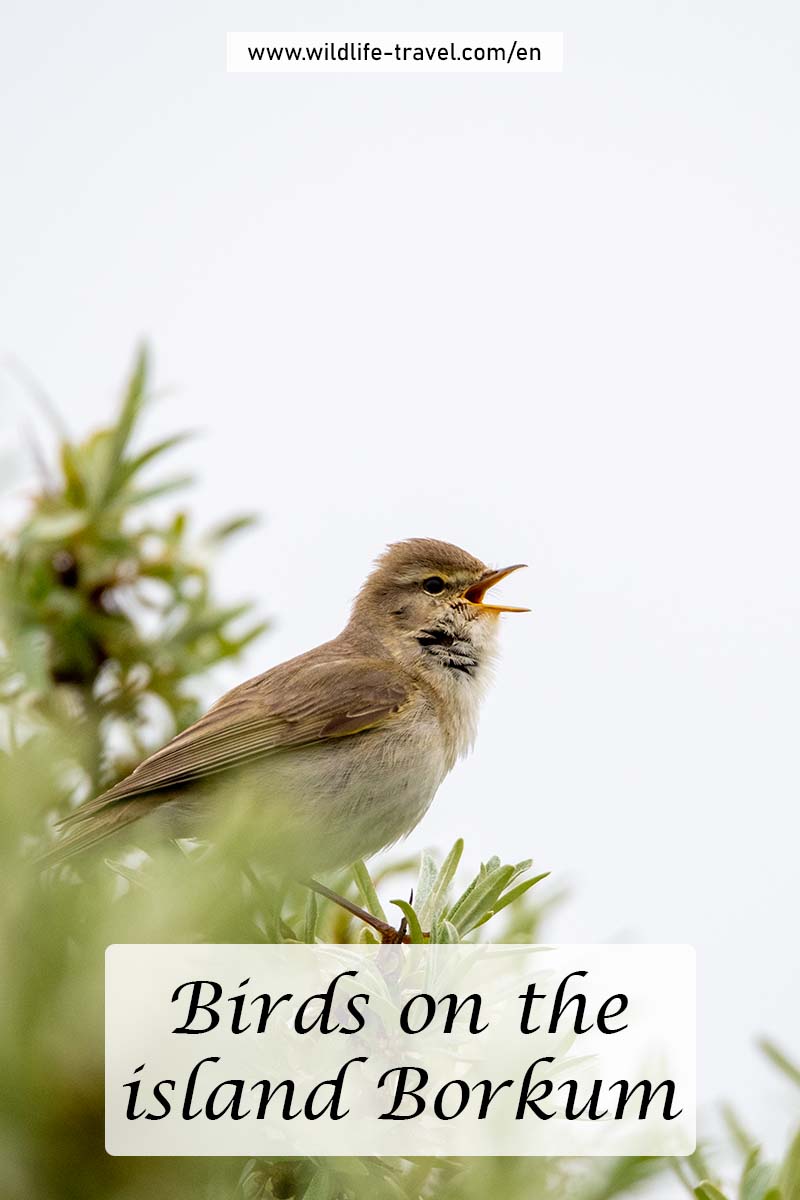The island Borkum is a great holiday destination not only for wellness vacationers or beach goers, but also for bird watchers. As Borkum is one of the seven East Frisian Islands and in the middle of the North Sea, the island is an important resting place for numerous birds on their migration routes to their breeding or wintering grounds. In this blog entry I write more about the birds which I observed in May during my stay on the island.
UNESCO World Heritage Wadden Sea
What do the Great Barrier Reef in Australia and the Wadden Sea in the North Sea have in common?
The heading already indicates.
Both are a UNESCO World Heritage Site. That means, both the Great Barrier Reef and the Wadden Sea are especially worth being protected. They got the status World Heritage, because they are important habitats for many species and they have an especially high natural value. Thus, it is important to protect both of them!
But why is the Wadden Sea so special?
The Wadden Sea is not only extensive - it reaches from the Netherlands to Germany and Denmark - it also provides important resources for numerous animal and plant species.
In Germany, the Wadden Sea extends over three states: Lower Saxony, Hamburg, and Schleswig-Holstein.
The island Borkum belongs to the state Lower Saxony and counts to the seven East Frisian Islands. Thus, Borkum is located in the middle of the UNESCO World Heritage Site Wadden Sea (photograph on the left: New Lighthouse, photograph on the right: river in the north of the island).
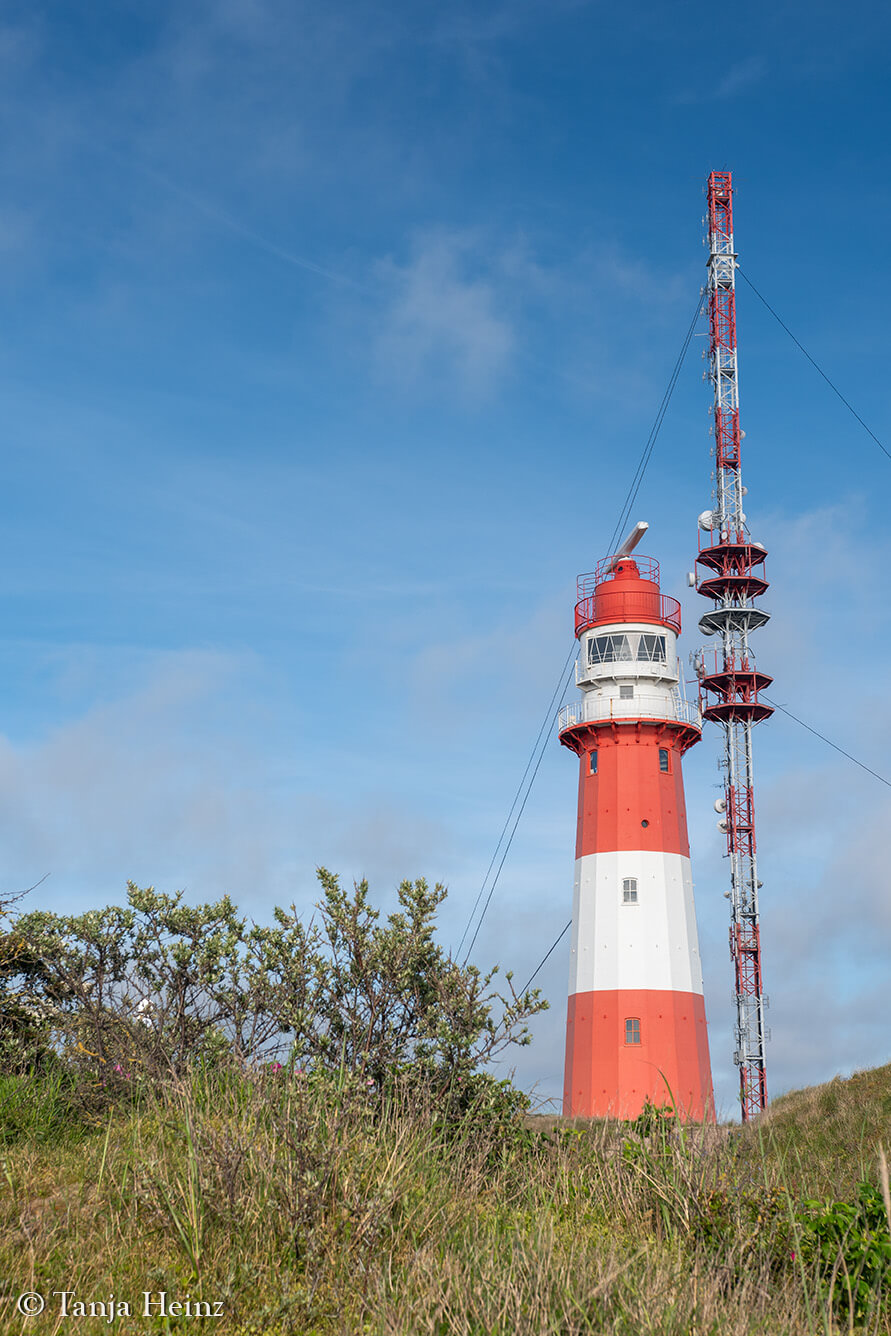
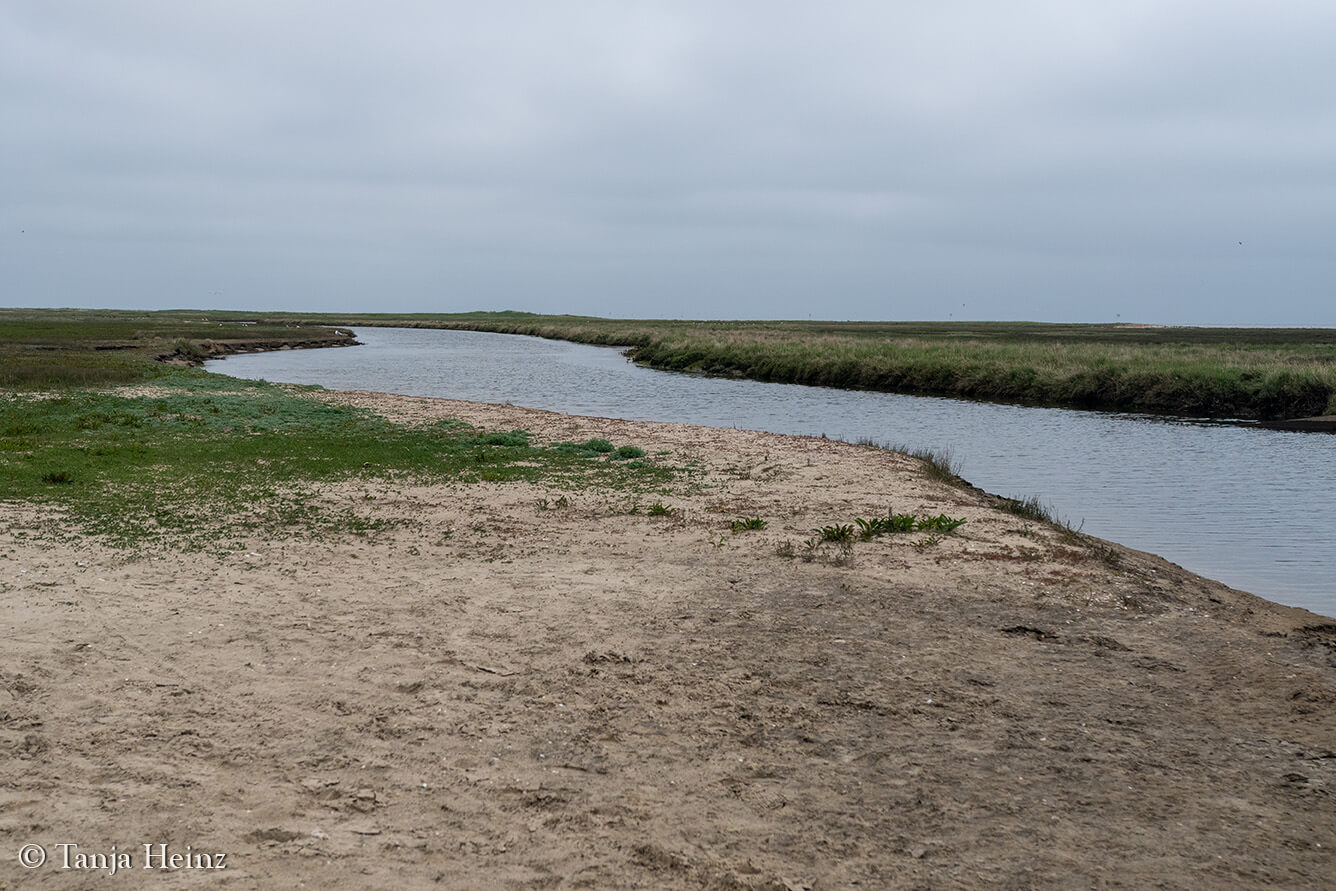
The Wadden Sea is an important habitat for many migratory birds, because thousands of birds take in spring and autumn a rest in the Wadden Sea from their long migration. But why do so many migratory birds rest in the Wadden Sea? Well, the answer is reasonable. The Wadden Sea provides a lot of food for migratory birds. That is important for them before they continue their thousands of kilometres long and arduous migration to their breeding or wintering grounds.
The Arctic tern is a strongly migratory bird which has the longest migration route known so far in the animal kingdom. In Iceland, I met quite many of them. On the island Borkum, unfortunately, I did not see any Arctic tern. However, with luck, you might be able to see an Arctic tern in the Wadden Sea.
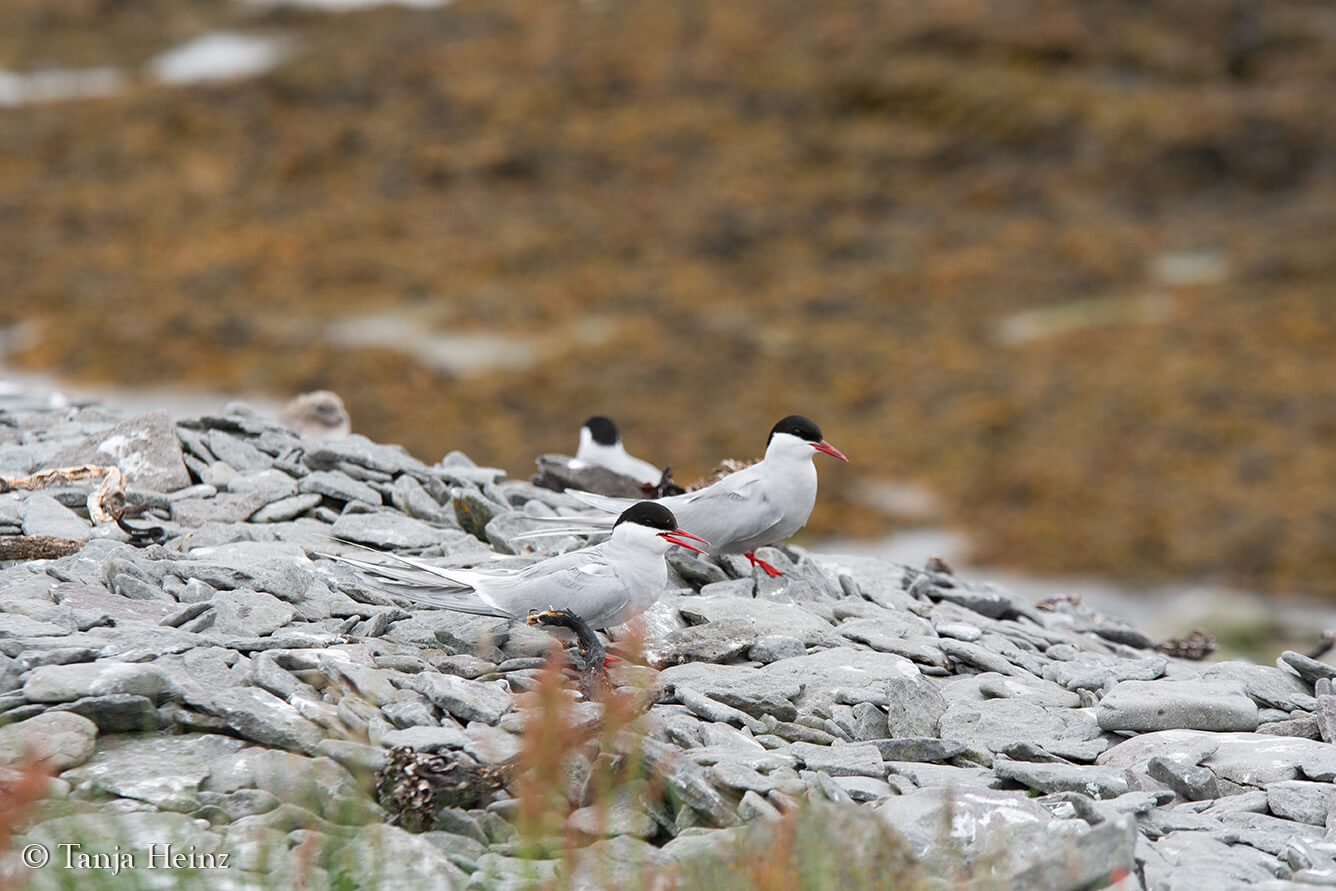
Information: Which other migratory birds take a rest in the Wadden Sea in Lower Saxony? On the website of "Zugvogeltage" of the National Park Wadden Sea in Lower Saxony you can find a list of all bird species which were observed in the Wadden Sea in Lower Saxony since 2015.
The Wadden Sea is characterized by the tides, that means, by ebb and flow. Furthermore, the Wadden Sea is a place where fresh and salt water meet. That means for all living creatures that they have to be adapted to ever-changing living conditions in order to be able to survive.
As already mentioned, the Wadden Sea became an important habitat for numerous animals. Including harbour seals and grey seals. In previous blog entries I have already written about these animals in the North Sea.

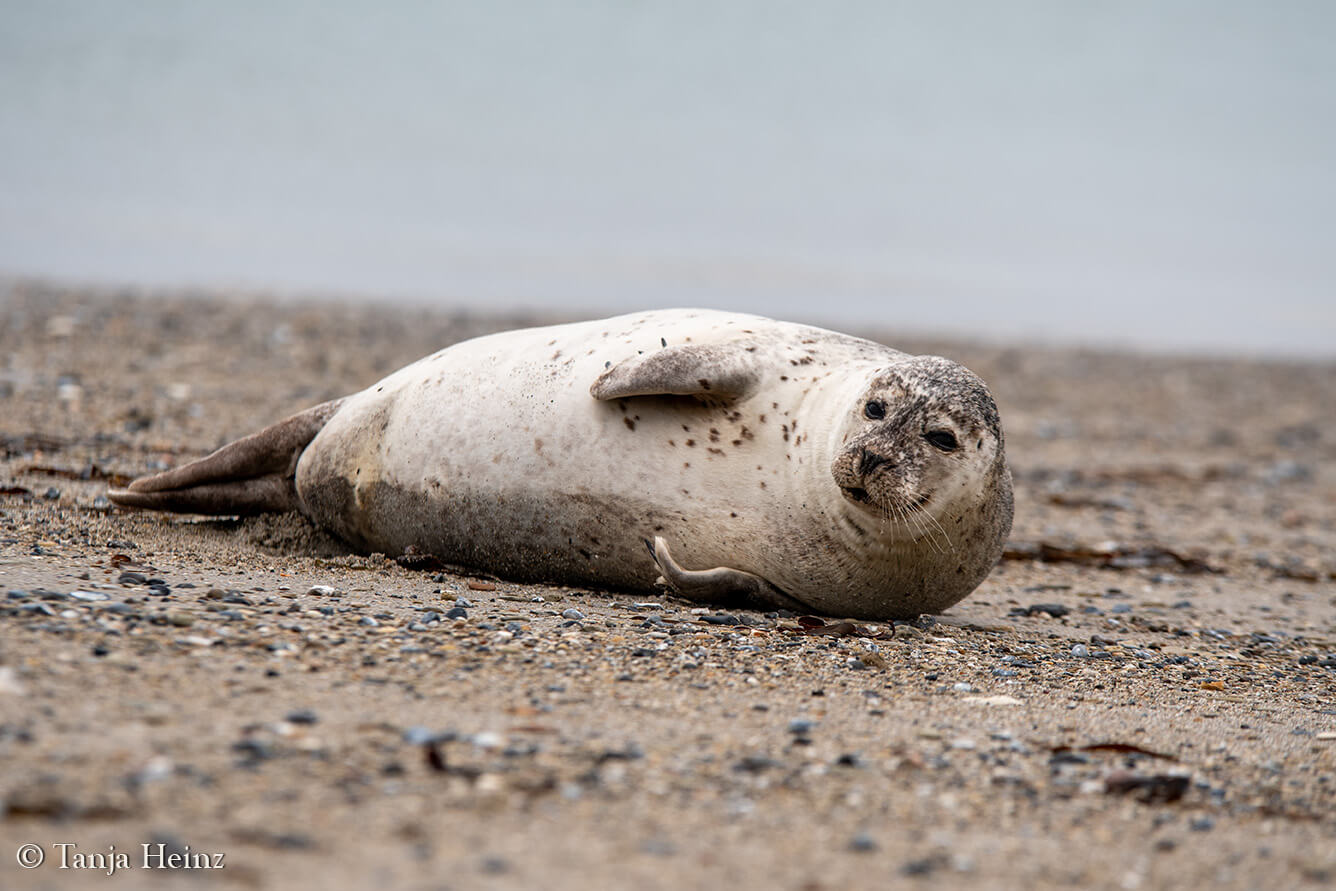
Other famous representative animals in the Wadden Sea are the blow lugworm (also known as sandworm), common cockles, or shore crabs.
Information: If you want to know more about my walk across the mudflats on the island Borkum, please visit my other blog entry about the fauna on Borkum.
Before I write more about birds on the island Borkum, here some more facts.
The Wadden Sea at the coast of Lower Saxony is protected as a national park since 1986. In Germany, there are 16 national parks. The Lower Saxon Wadden Sea National Park is one of them. That means, it is the second largest one. The largest national park in Germany is the Wadden Sea in Schleswig-Holstein. The third largest one is the Western Pomerania Lagoon Area National Park. The smallest national park is, by the way, the Jasmund National Park. However, there are not only national parks in the north, but also in the south of Germany like, for example, the one in Berchtesgaden.
Nevertheless, did you know that more than 80% of the island Borkum belongs to the Lower Saxon Wadden Sea National Park? Only the constructed area around the port and areas in the western and eastern part of the island do not belong to the national park.
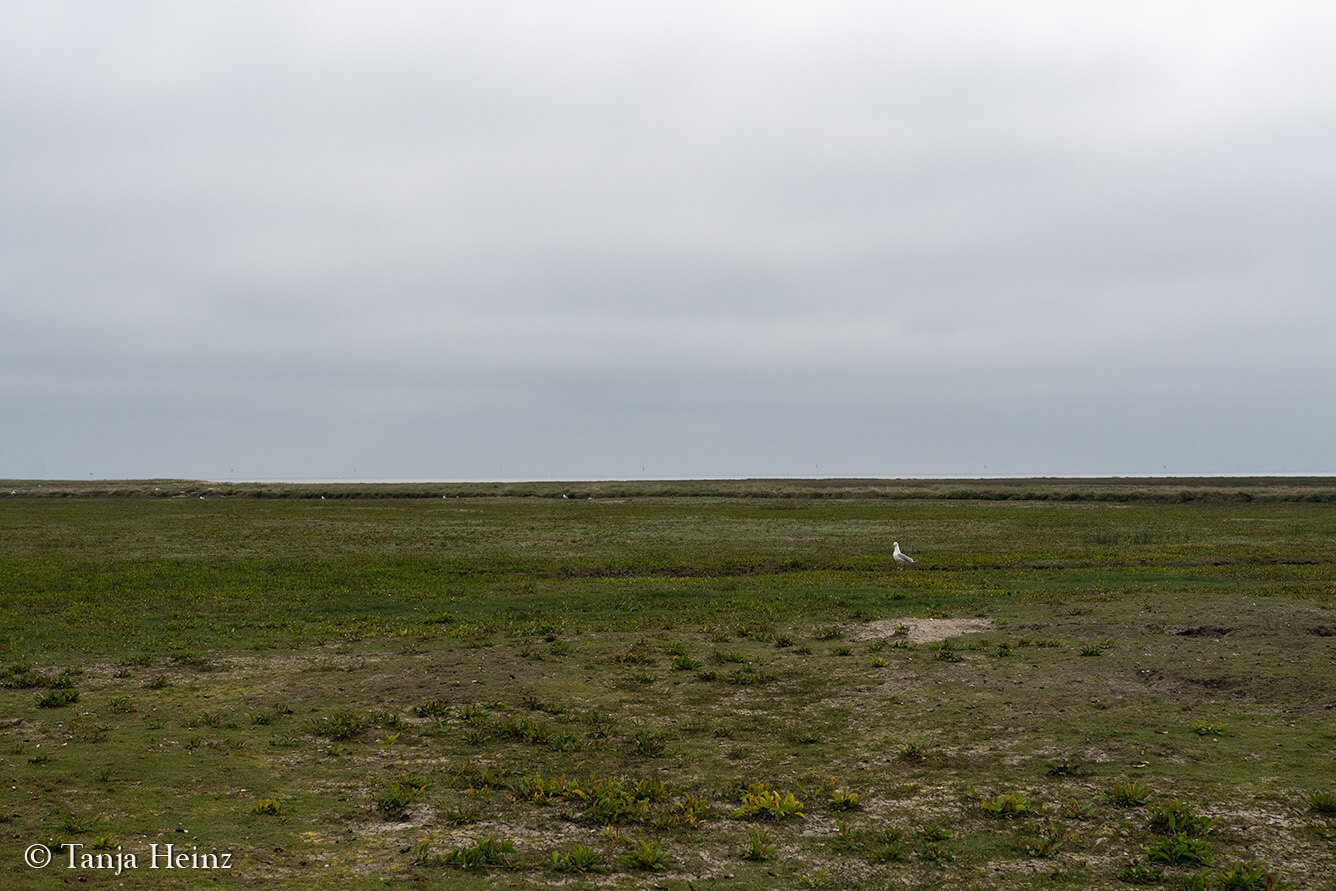
Therefore, the island Borkum is especially interesting for people who love nature. In this blog entry I will put a focus on the birdlife of Borkum.
Birds on the island Borkum
Eurasian oystercatcher
One of the most conspicuous birds on Borkum was the oystercatcher.
With its black-white plumage and its long, orange-red bill, oystercatchers are easy to identify. Other characteristic features of oystercatchers are their red eyes and legs.
Oystercatchers on Borkum were conspicuous for me not only because of their appearance, but also because of their calls. I was on Borkum in a May and in this month, the oystercatchers on the island showed themselves from their most highly vocal side.
On the island Borkum I saw oystercatchers almost everywhere. In the western part close to the town, but also in the east and in the north along the beach. However, I have to say that I met the most oystercatchers in the western part of the island. There, they also were the loudest.
I enjoyed watching them and how they put their bills in the sand in order to drag a worm out. I furthermore observed how three oystercatchers moved side by side while they were simultaneously calling loudly. They were quite interesting birds and always there for a surprise. In one moment when I was observing some ruddy turnstones, an oystercatcher suddenly showed up. Almost just next to me. Oystercatchers seemed to be everywhere on Borkum
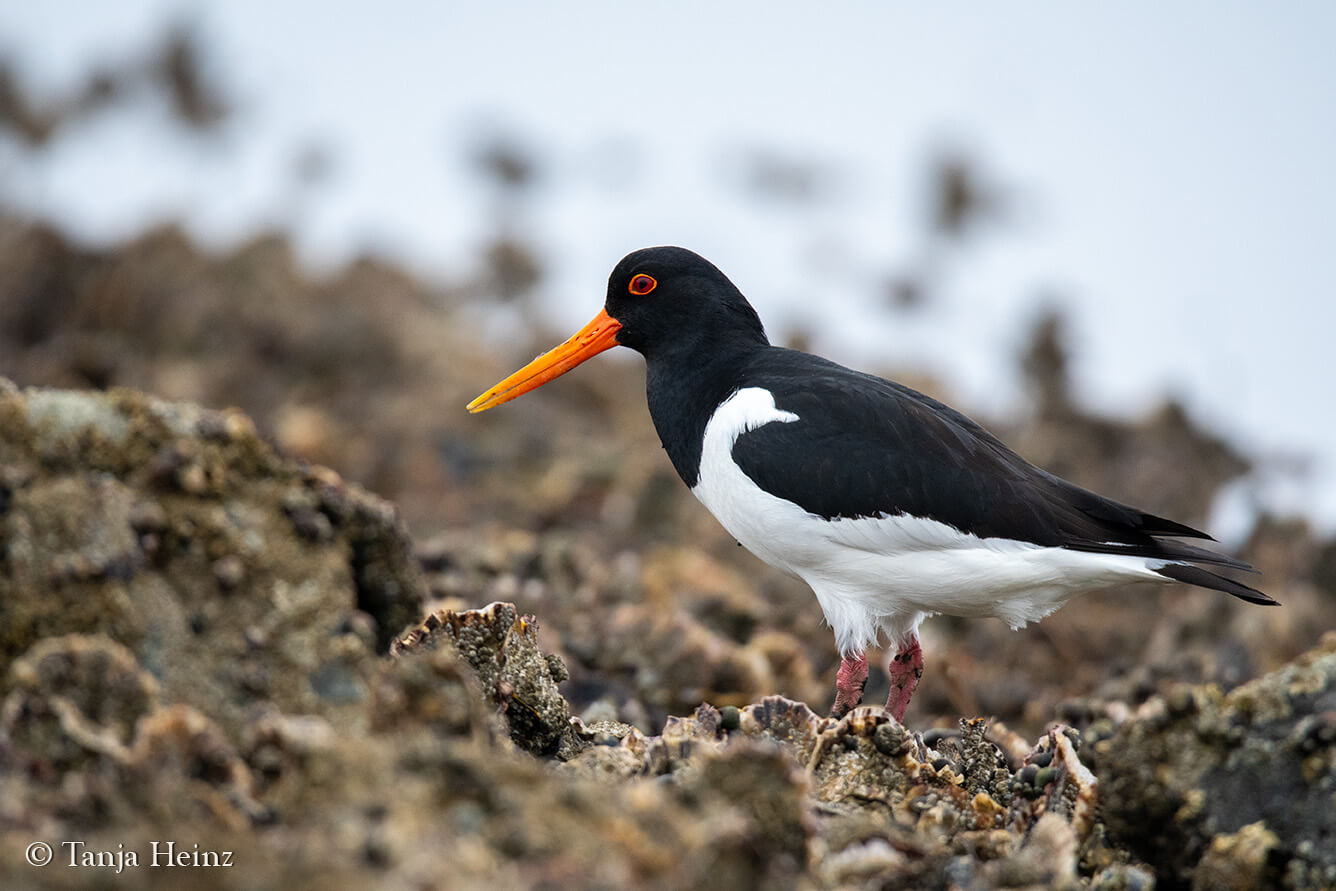

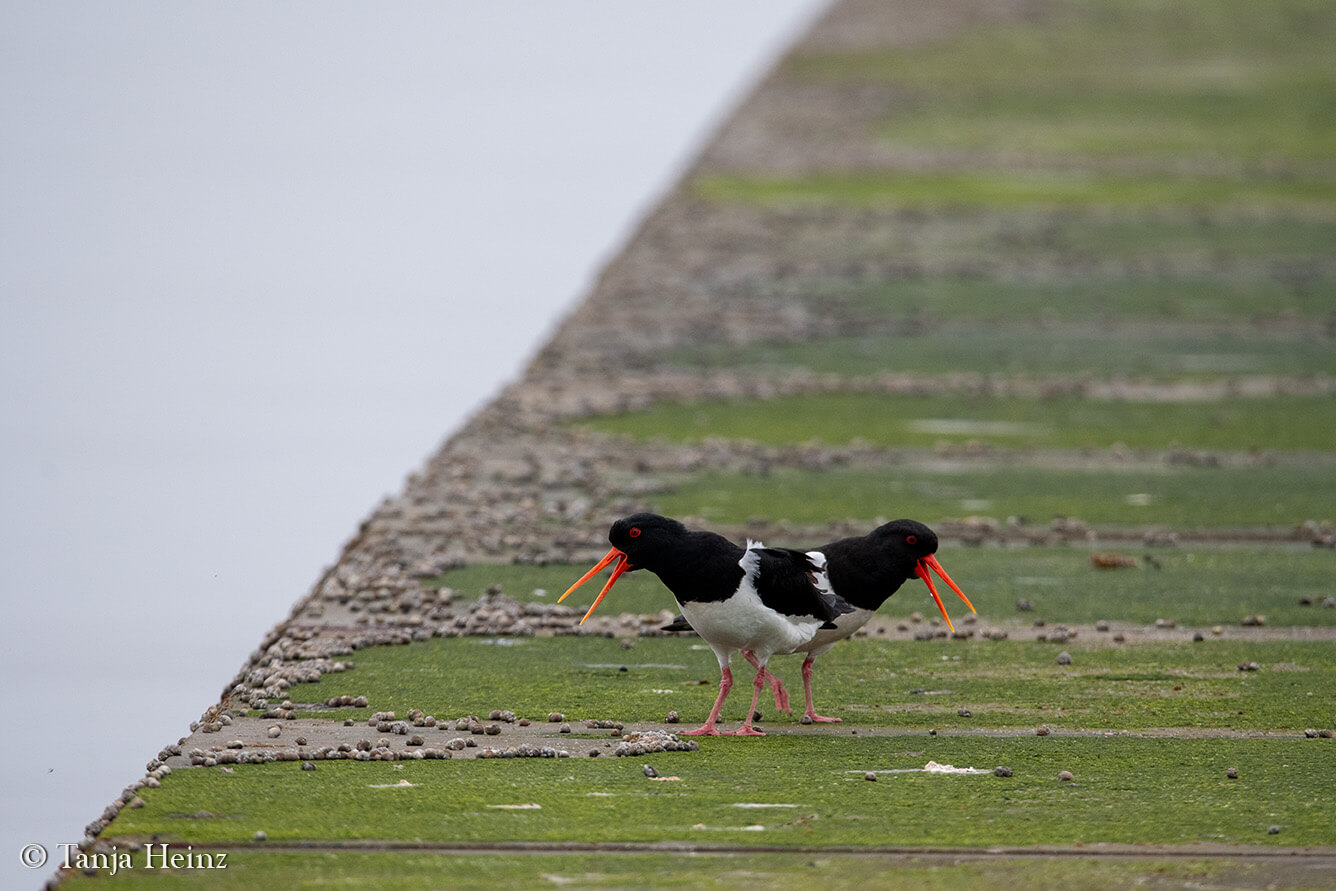

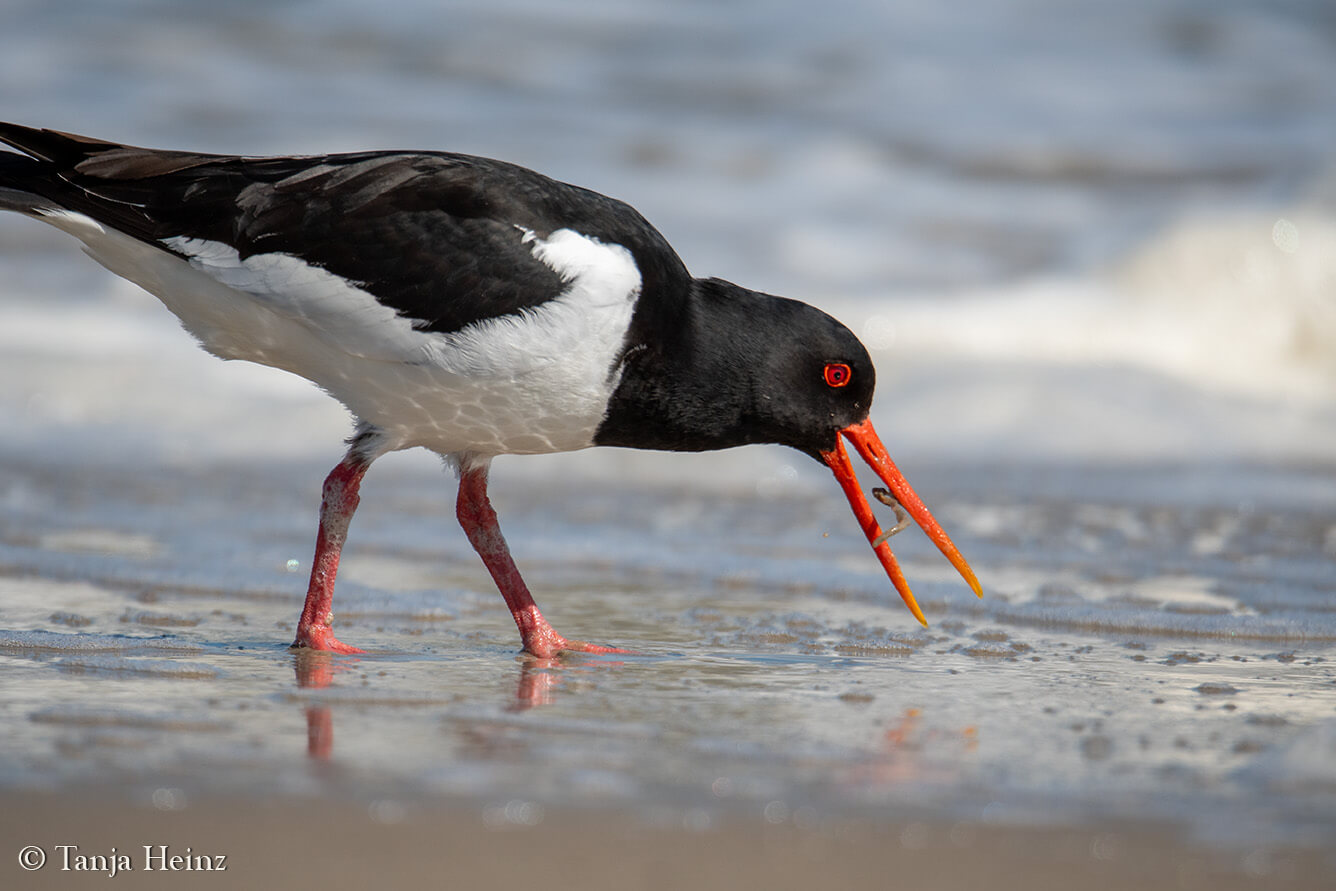

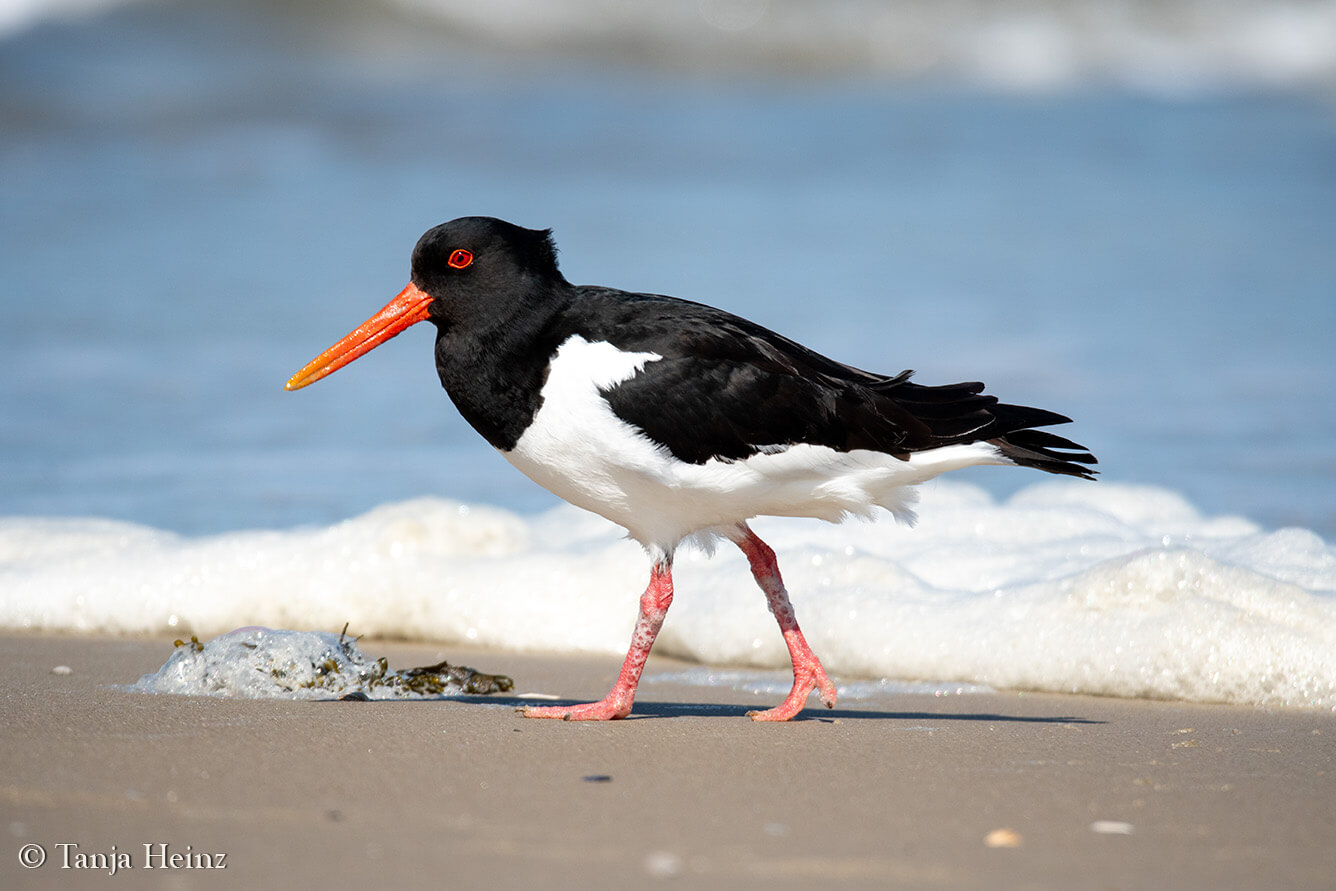
Common shelduck
Close to the oystercatchers in the west I also saw some common shelducks. Common shelducks, as well, are easy to identify by their appearance. They have chestnut patches on their breast and a dark green head and neck. A black belly and some white parts in their plumage help not to confuse this bird with other birds. However, males are characterized by a prominent knob at the forehead, which females do not show. Therefore, it is relatively easy to distinguish males and females among common shelducks. Females furthermore have some white facial markings which, in contrast, males do not have.
By the way, common shelducks show features which are typical for geese and for ducks.
I saw common shelducks on the island Borkum close to the town, but also further east in the interior of the island.
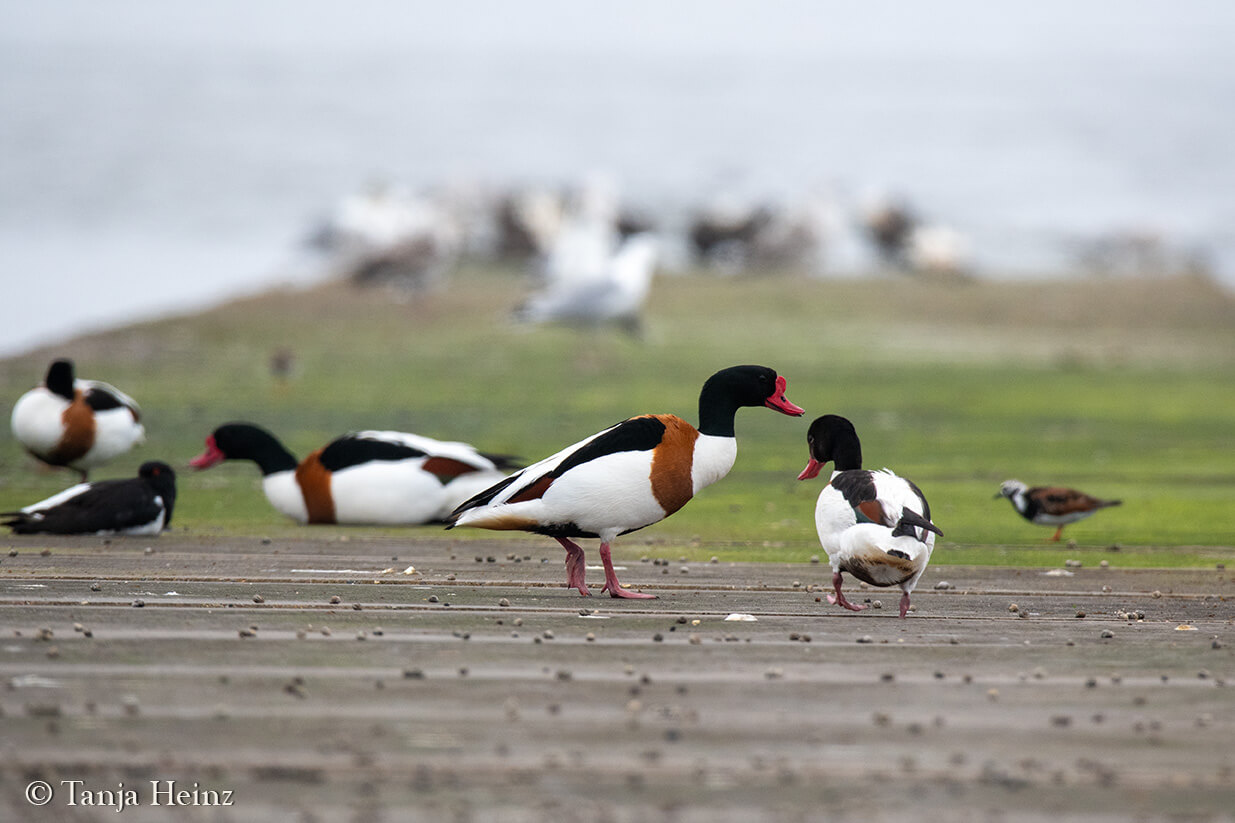
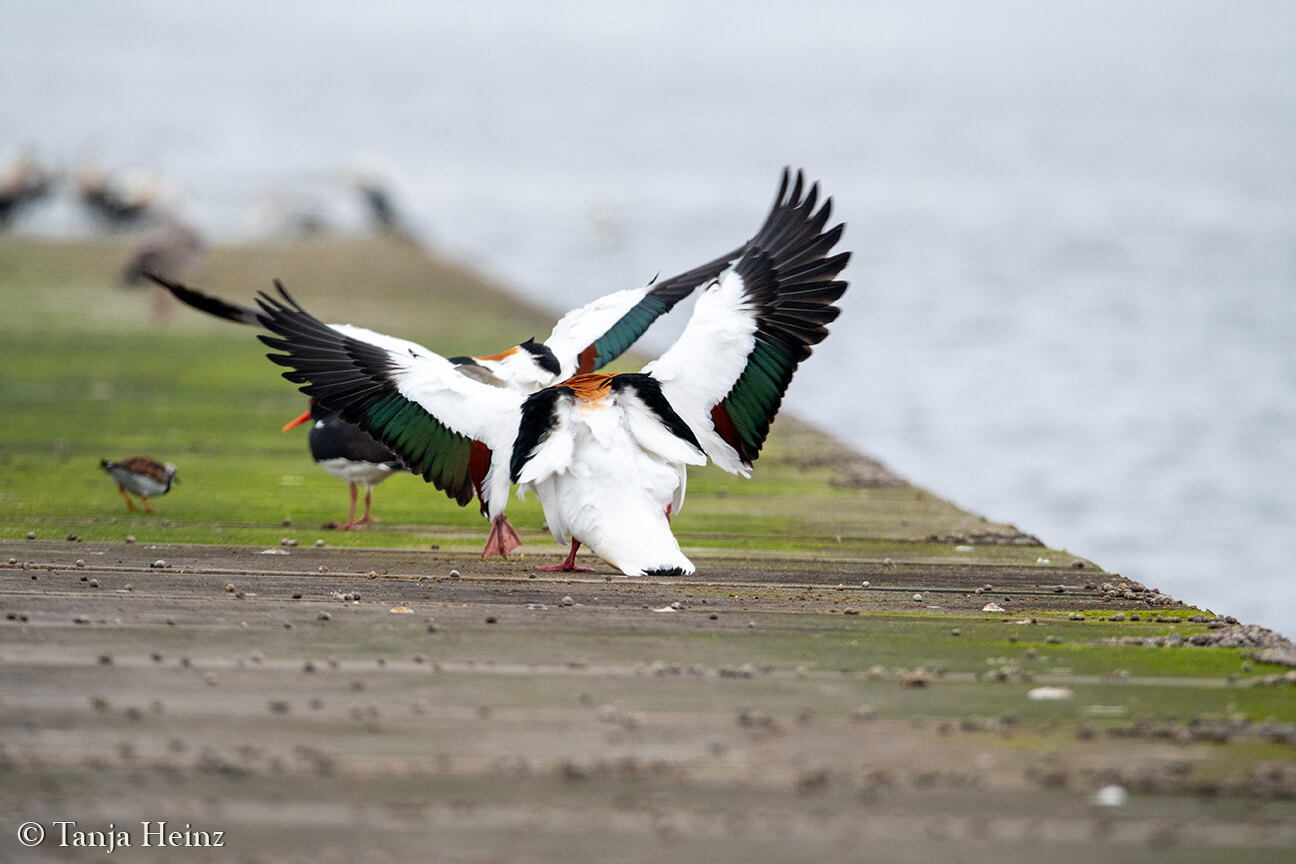

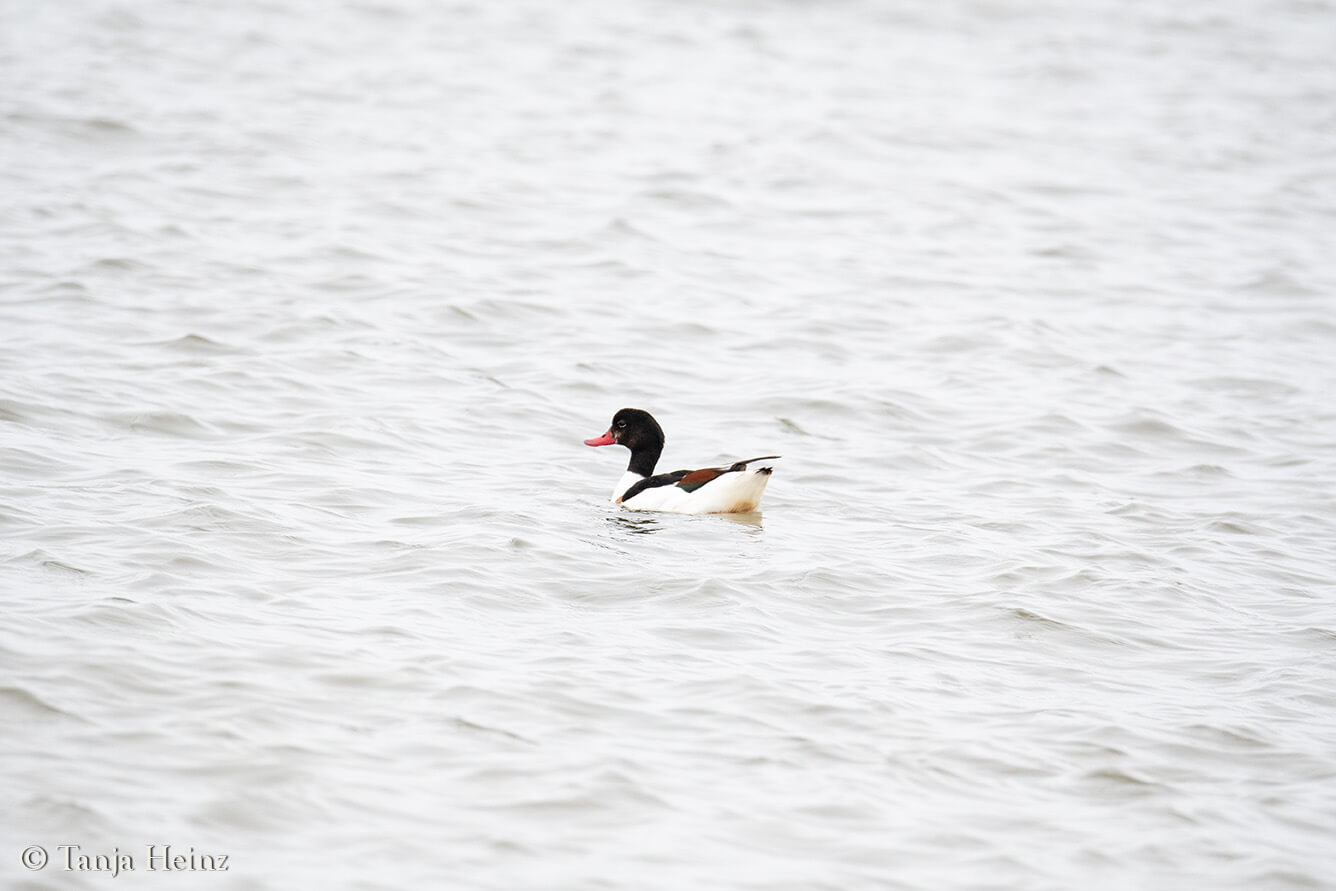

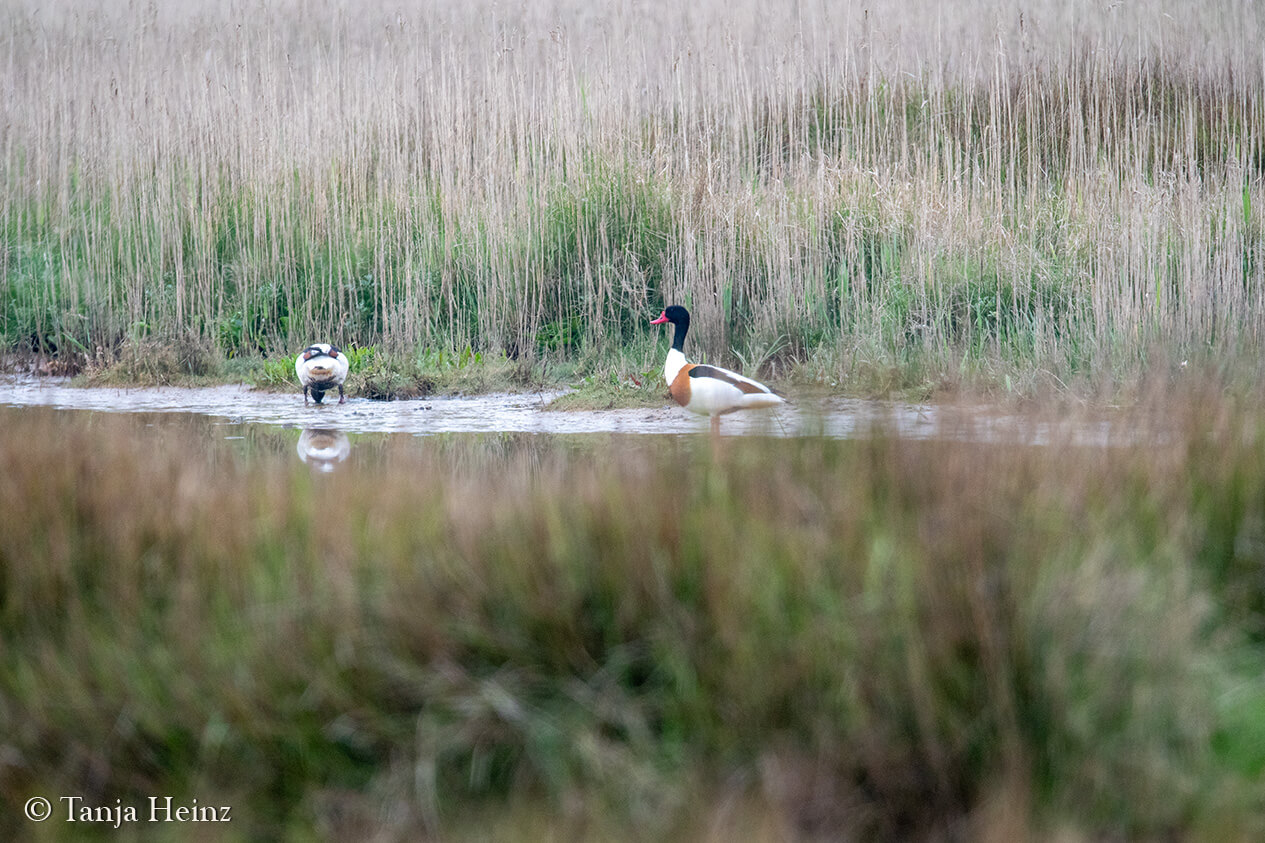
Barnacle goose
The barnacle goose is, in contrast to the common shelduck, a real goose. That means, the barnacle goose shows features which are very characteristic for geese. For example, males and females in barnacle geese resemble each other in appearance and do not show a sexual dimorphism. Furthermore, both parents care for their offspring.
Barnacle geese can be identified by their white faces. The belly, as well, is white. Bill, head, neck, and upper breast, in contrast, are black.
I observed some barnacle geese on the island Borkum in the eastern parts on my bicycle tour. Close to the barnacle geese I saw some pied avocets. Here and there, wild rabbits came closer to the bird groups.
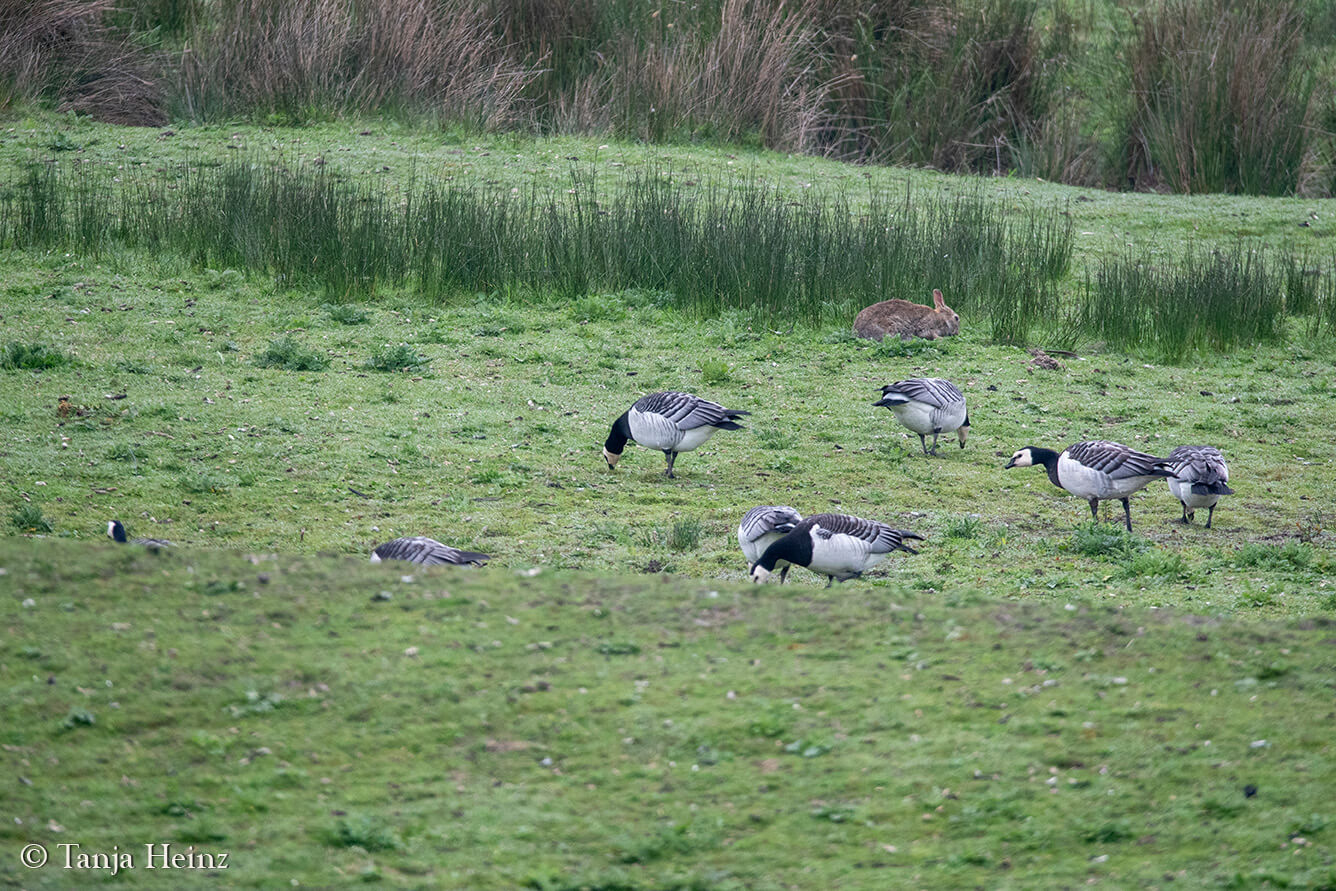
Brant
Just next to the barnacle geese I could observe some brants. But I also saw brants in the most eastern part of the island. There, I saw some brants close to a small river that led to the sea. However, I counted more barnacle geese along the cycling path than at that river.
Brants have a white patch on either side of the neck. Their plumage is rather dark in colour.
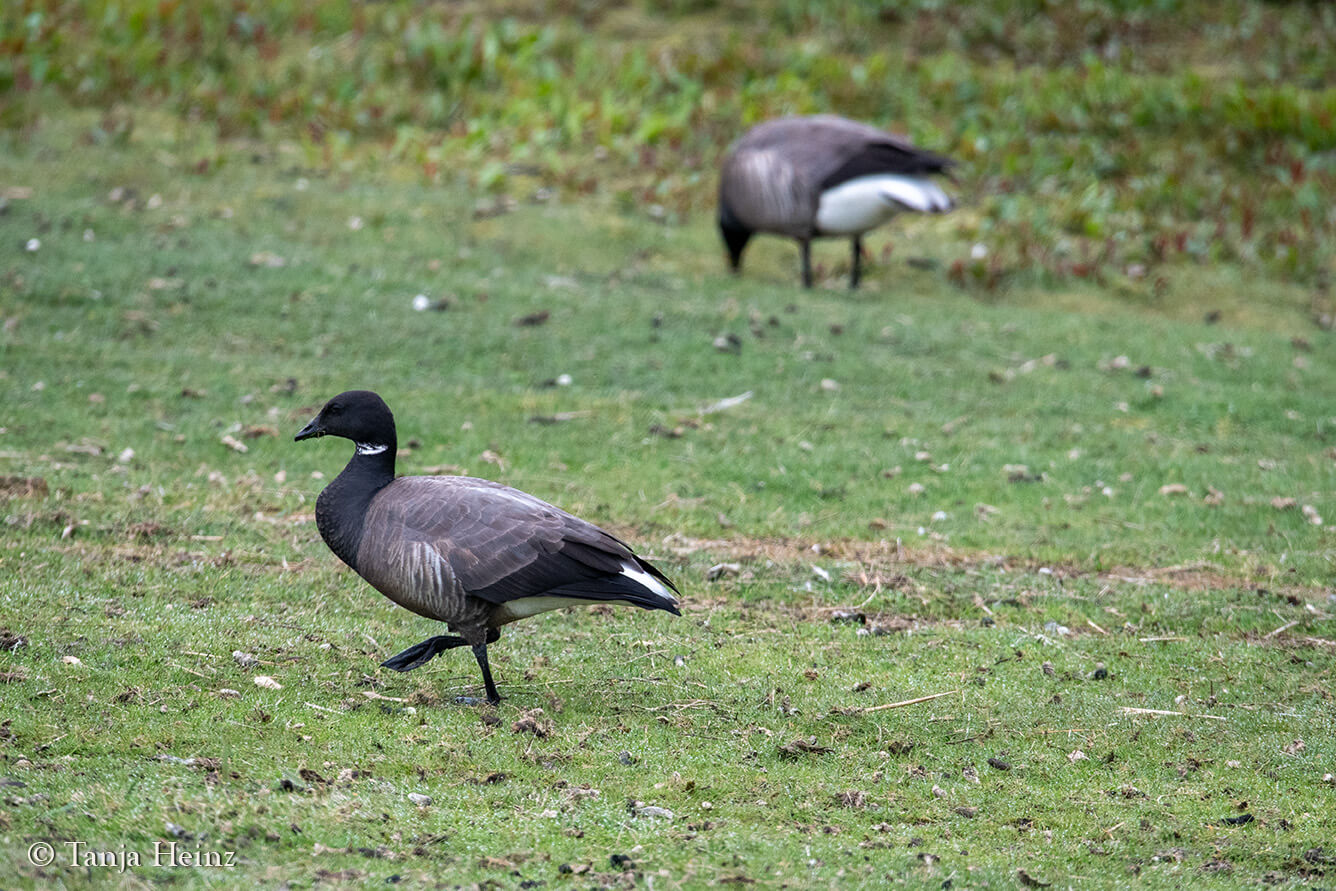
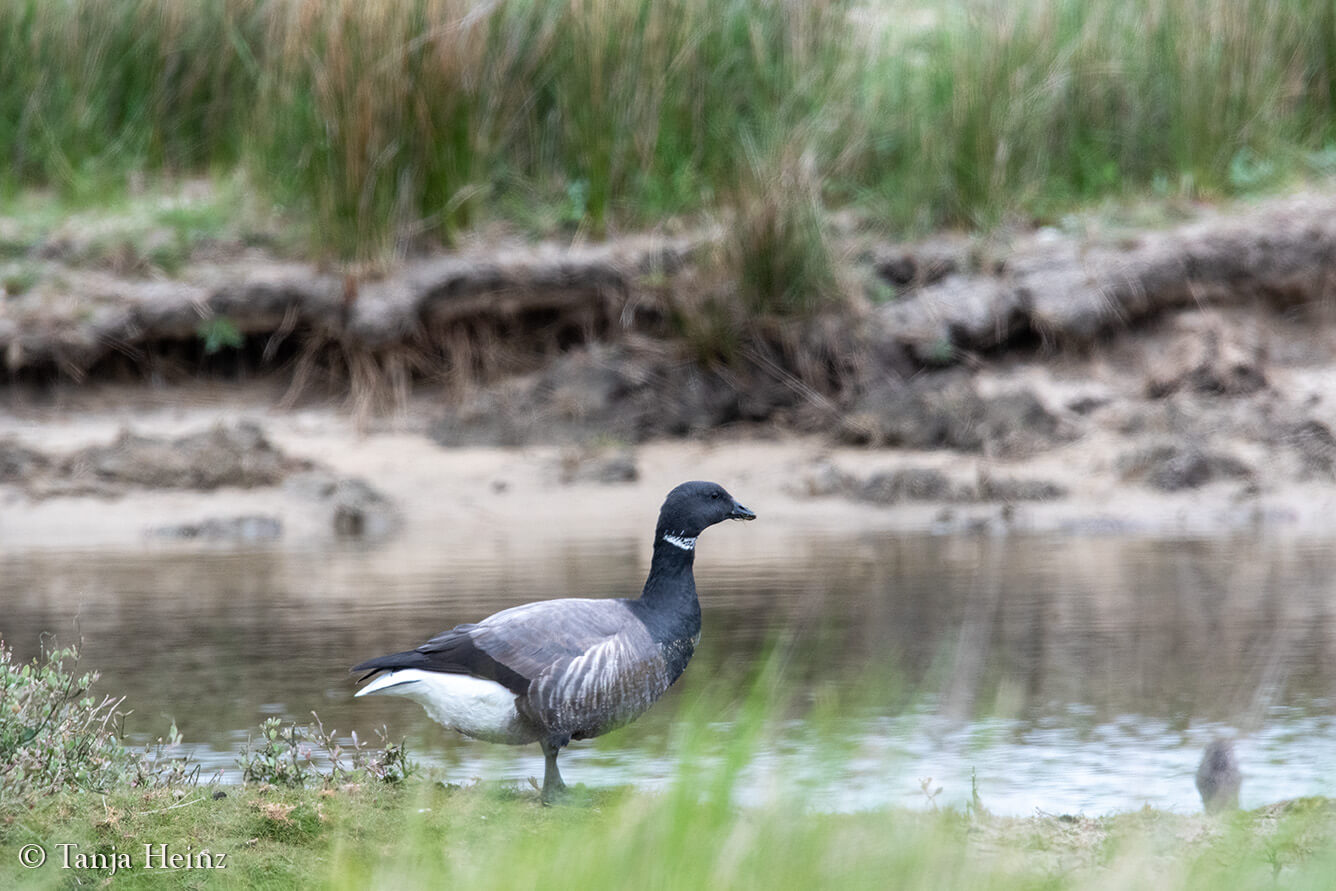
Greylag goose
A very common goose is they greylag goose. Of course, I also saw this bird on the island Borkum.
However, on Borkum I did not see the greylag geese among the other geese. I saw them more in the interior of the island. Was it only like that on the day of my visit and on other days they join the other geese? Or maybe the greylag geese had found a place with more food in the interior of the island and prefered to avoid food competition with other geese. I cannot tell from my short observation.
Importantly, however, some adult greylag geese moved around with their offspring. Maybe this was the reason why they stayed away from other geese?
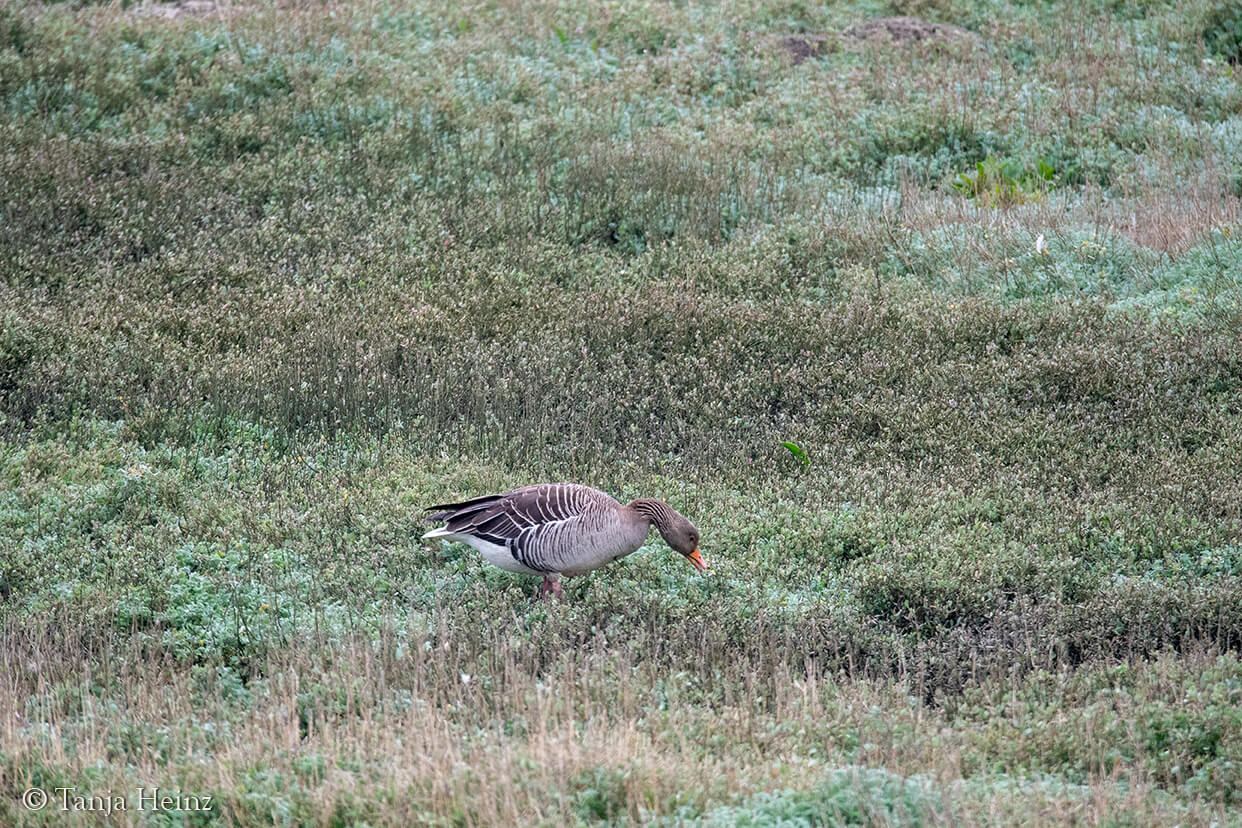
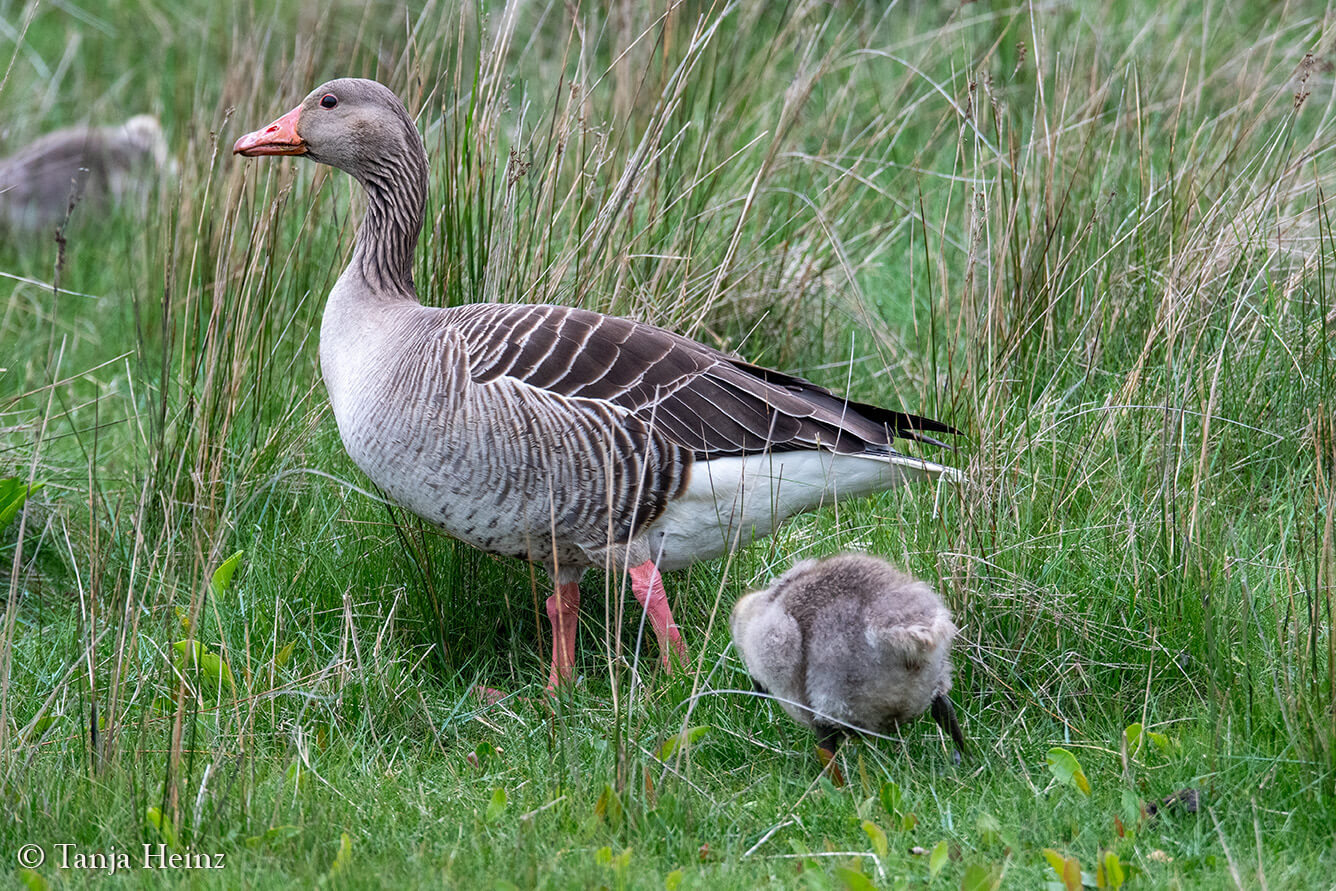

Ruddy turnstone
A bird, which has a perfect camouflage among stones, is the ruddy turnstone.
However, the ruddy turnstone came to its name not because of its appearance, but because of its behaviour of flipping over stones to get at prey species hiding underneath. Crustaceans, molluscs or worms belong to their favourite food items. On the island Borkum I was observing some ruddy turnstones searching for their favourite food.
The plumage of ruddy turnstones is high in contrast. Its legs shine orange. In contrast to oystercatchers, ruddy turnstones have a dark and short bill.
On Borkum I saw ruddy turnstones only close to the town of the island.

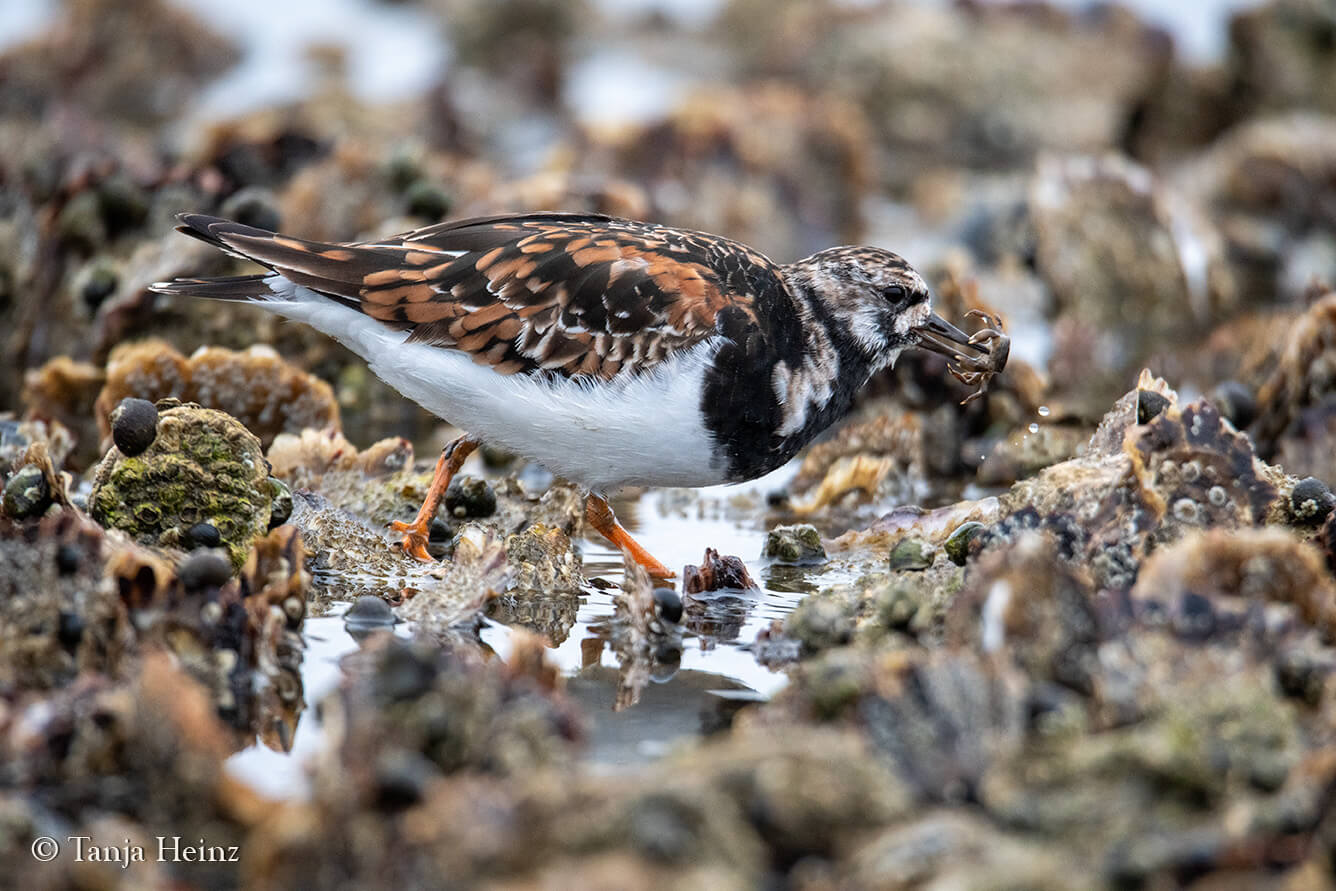
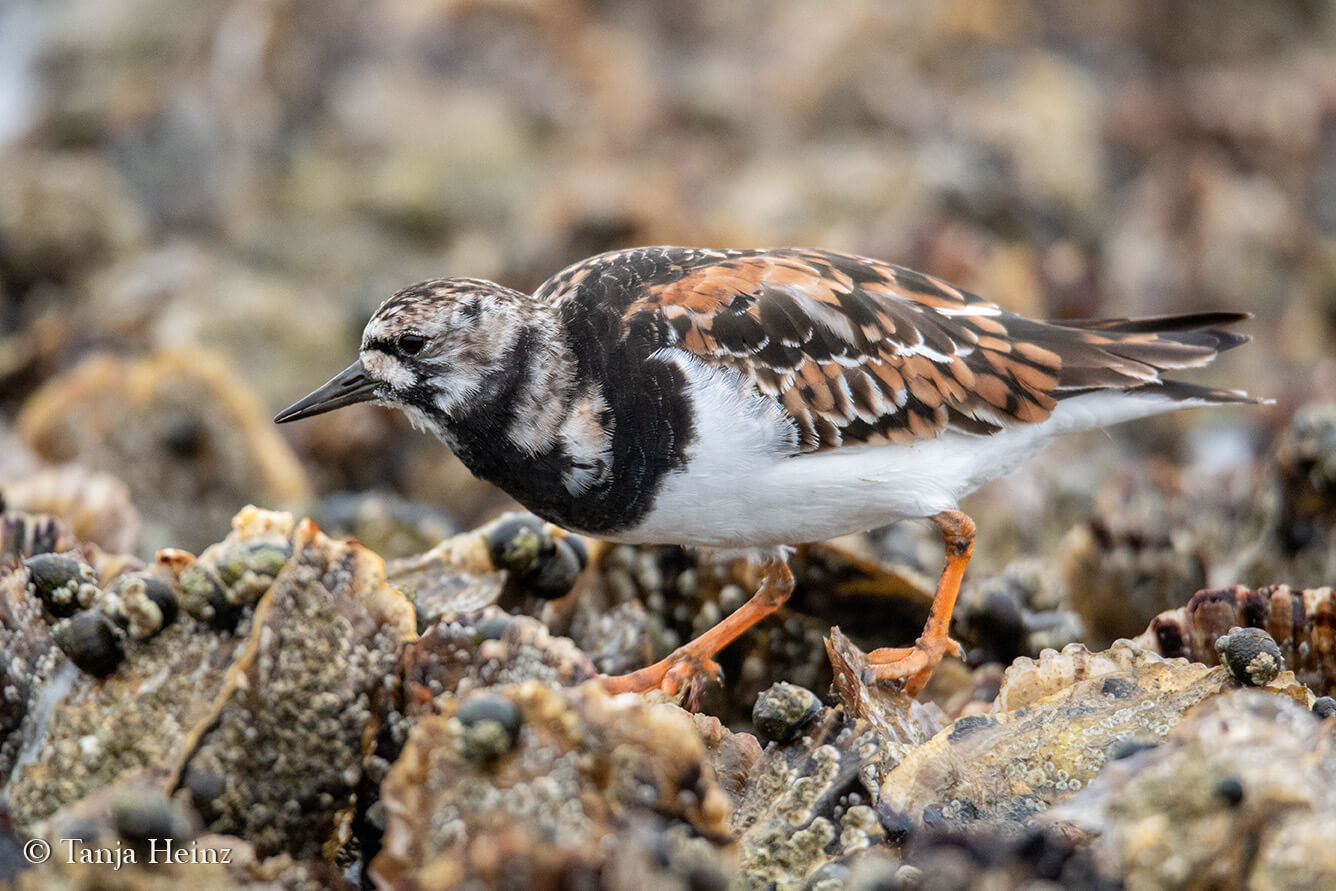

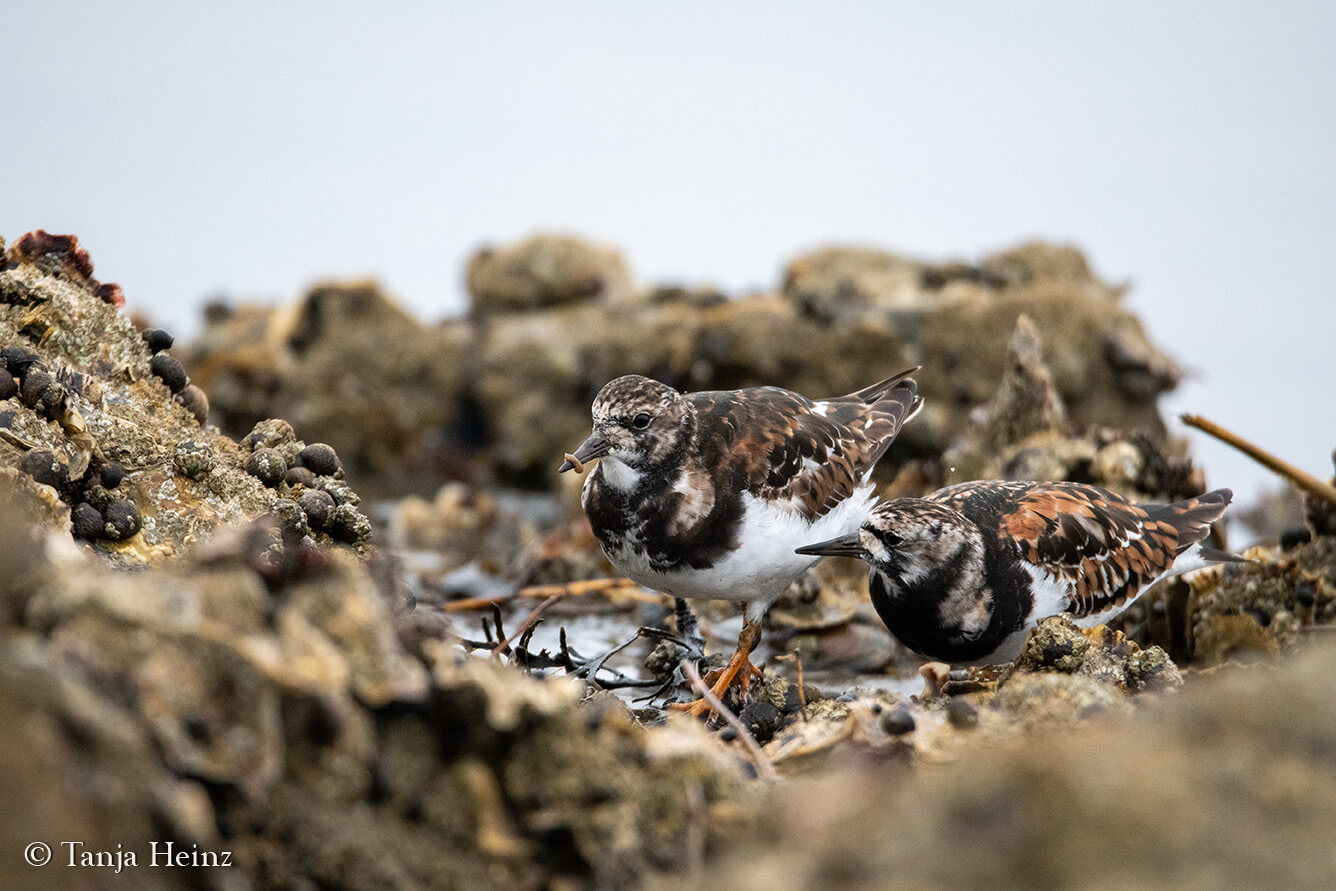
Herring gull
There are birds, which are, I have to admit, not that conspicuous to me anymore. However, this has nothing to do with that. I just want to say that some birds I see almost on a regular basis, and thus, I do not perceive these birds as intensively as they would deserve. The herring gull belongs to these birds. I have seen already many different species of gulls like, for example, lesser black-backed gulls and black-legged kittiwakes in Iceland or yellow-legged gulls in the Azores. I observed especially many herring gulls on Heligoland. However, I see herring gulls as well sometimes in cities like Berlin.
Maybe it is because I had seen already so many gulls, that my eyes do not perceive these birds as other birds. But of course, I was still happy that I have seen gulls on the island Borkum. When I was observing ruddy turnstones and oystercatchers searching for food, a herring gull appeared close-by. It was not possible to oversee this herring gull. When I saw the gull, I gave her my full attention for some moments.
Close to this herring gull I saw more of them swimming in the water.
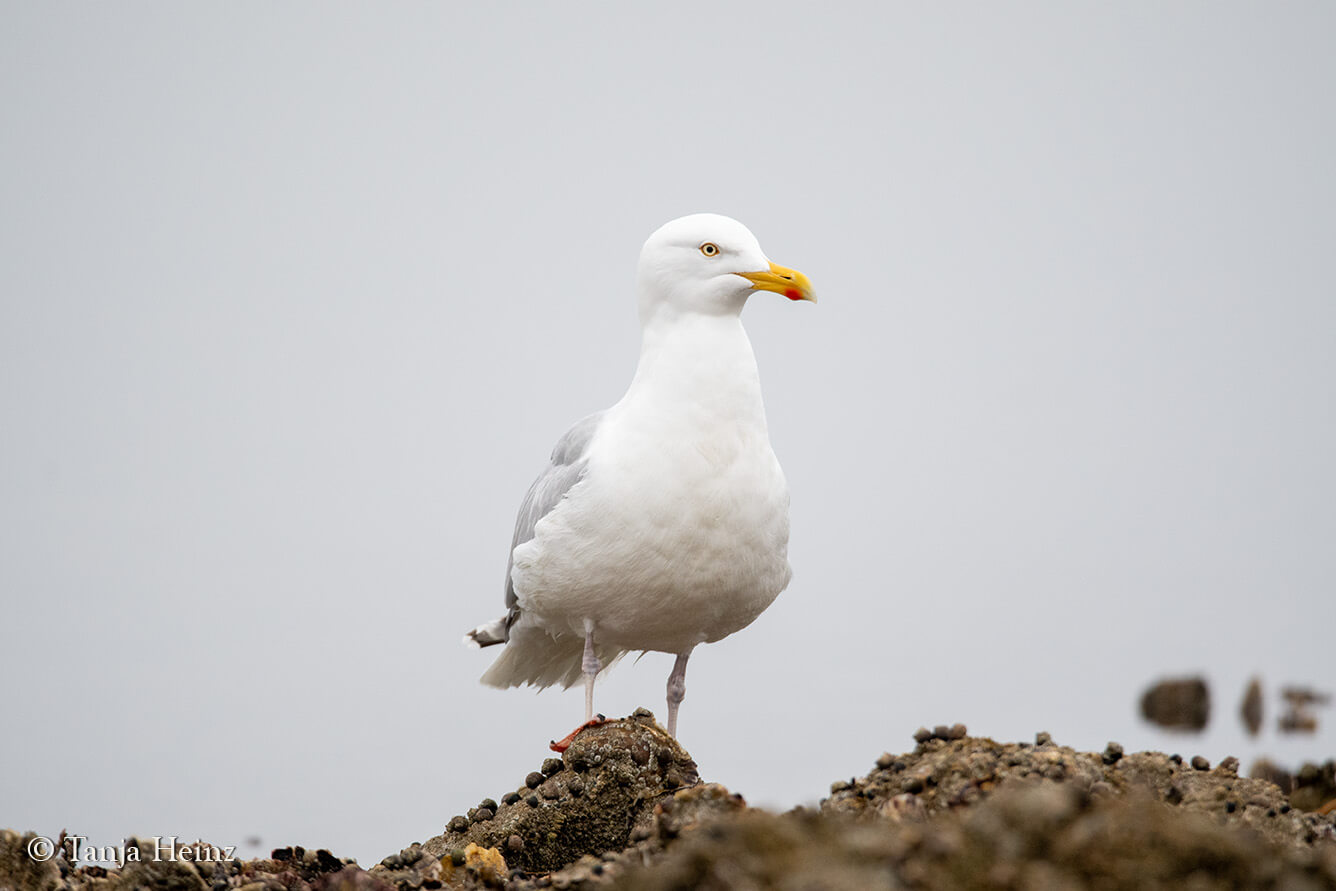
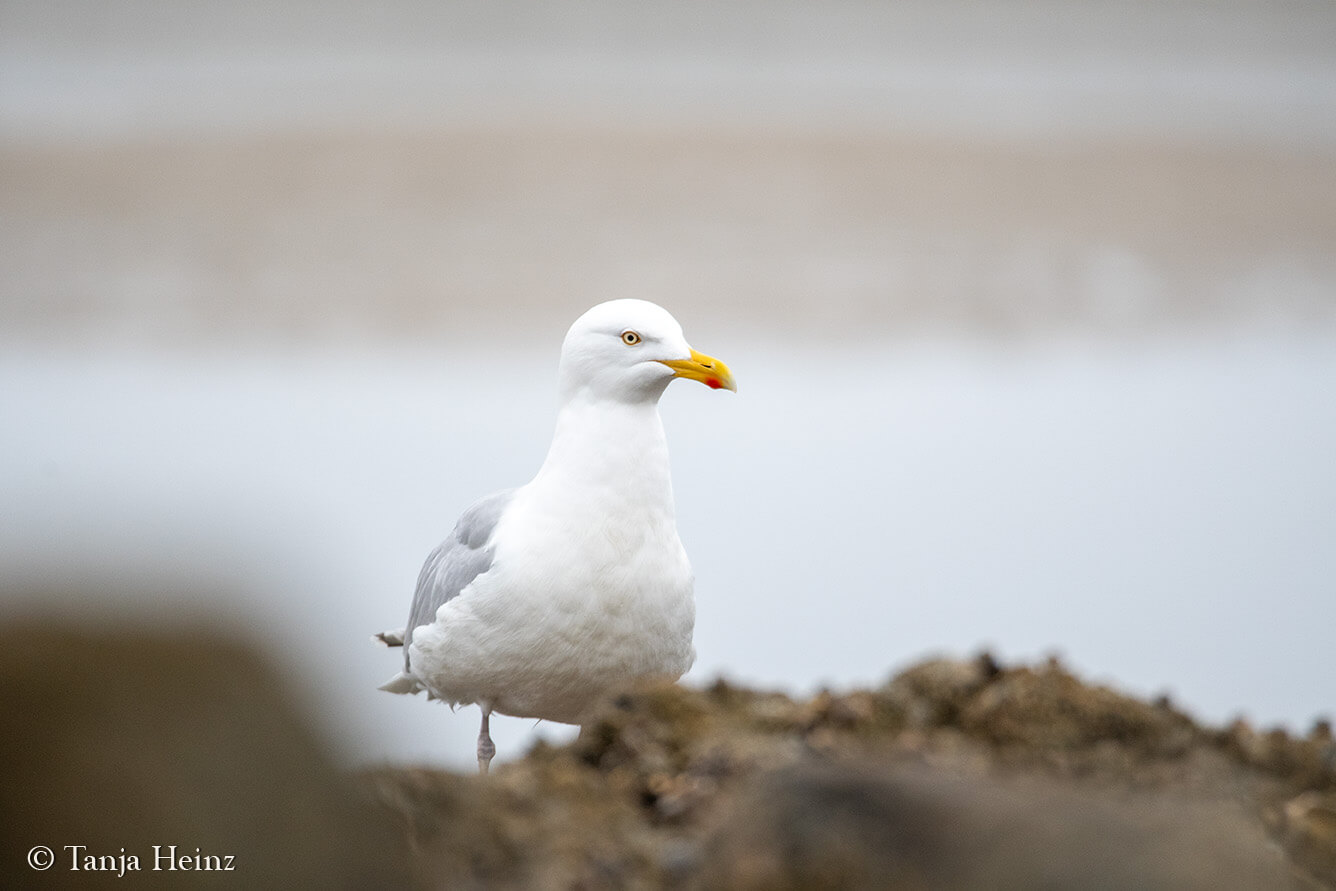
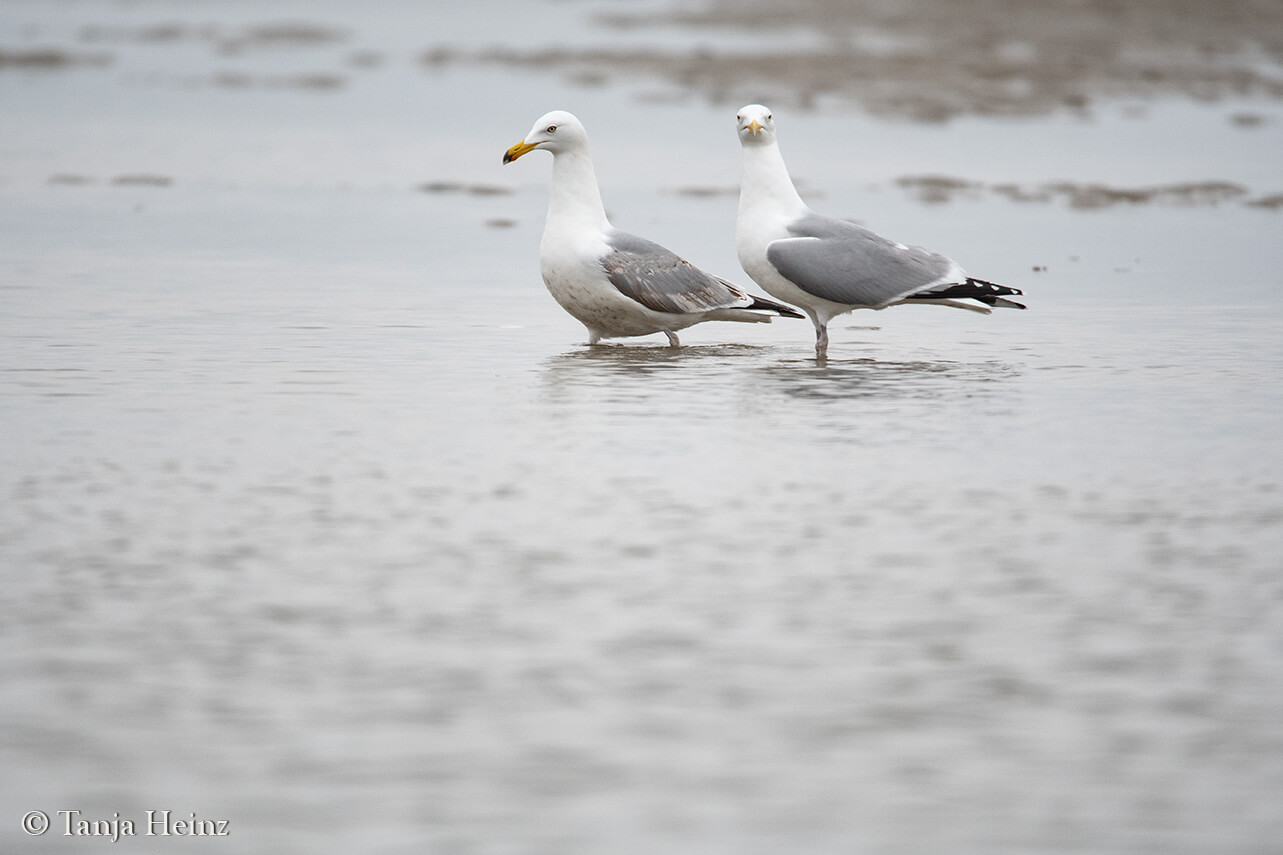
Black-headed gull
Even more inconspicuous on the island were black-headed gulls. I only saw them from afar.
In one moment, I saw black-headed gulls swimming close to herring gulls and common eiders. In another moment I saw them on my bicycle tour to the eastern parts of the island. Maybe this black-headed gull was searching for nesting material?
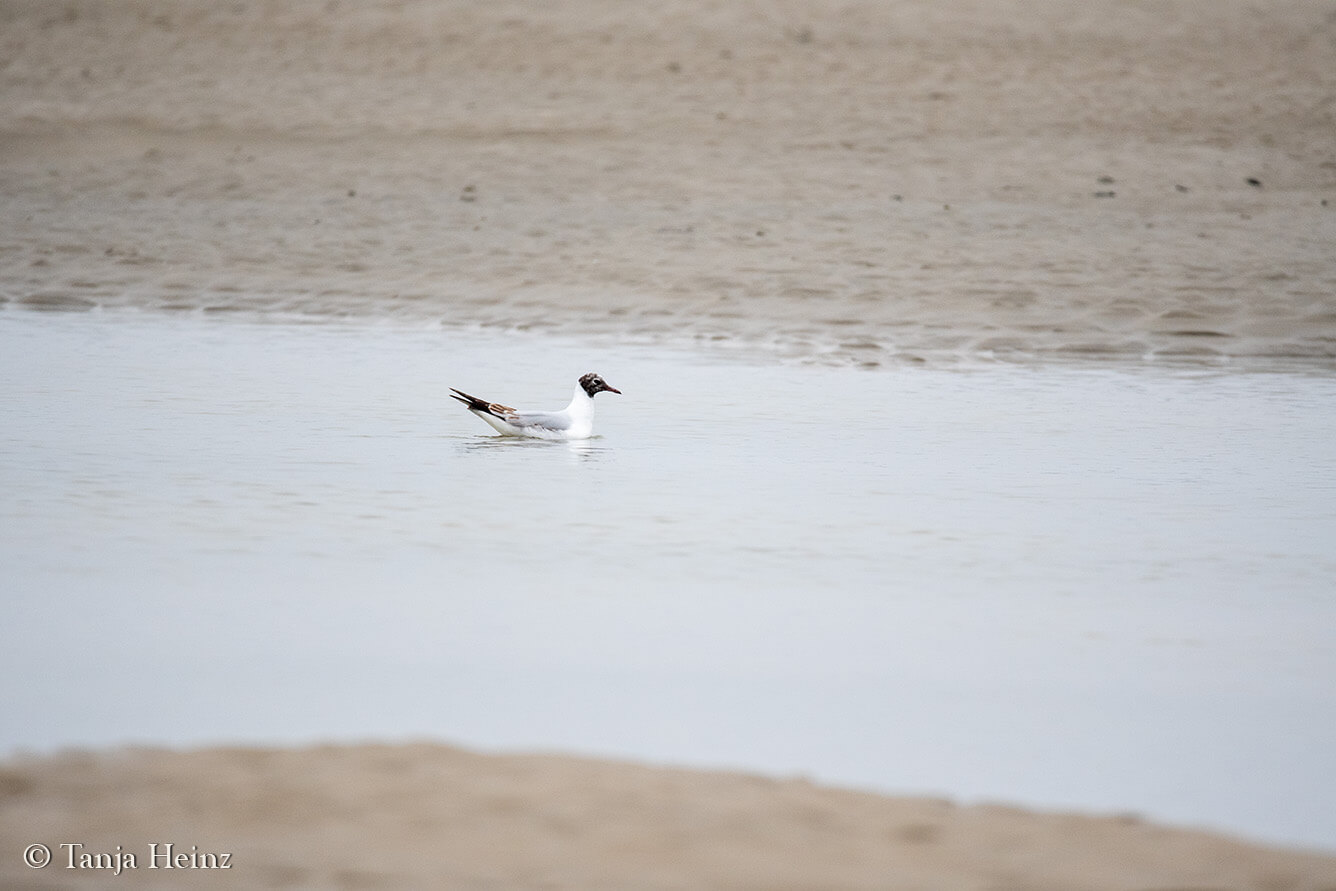
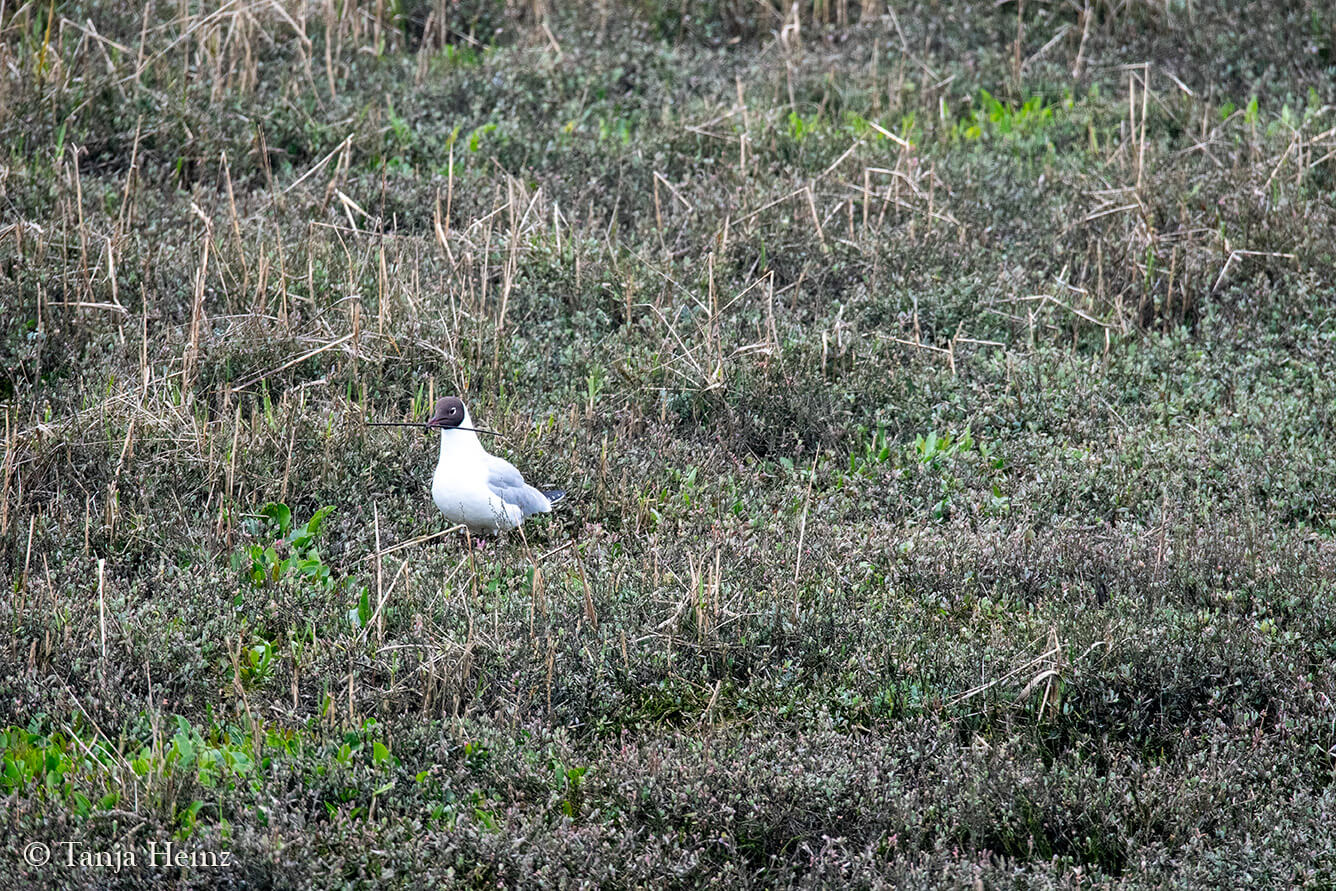
Common eider
I was especially happy to meet common eiders on the island Borkum. Common eiders show a distinctive sexual dimorphism. That means, males and females differ distinctly in appearance. While males have a black cap and dark sides, and their plumage on the back and breast is white (might also appear slightly pink-coloured). Males furthermore have greenish sides of neck and bill. Females, in contrast, have a quite inconspicuous brownish plumage.
Therefore, common eiders are rather easy to identify (even females because of their head shape). I saw common eiders the first time in Heligoland where they might show up in winter. In Iceland, I saw again common eiders. I even learned about the characteristics of the down of common eiders.
On the island Borkum I saw common eiders only close to the town.
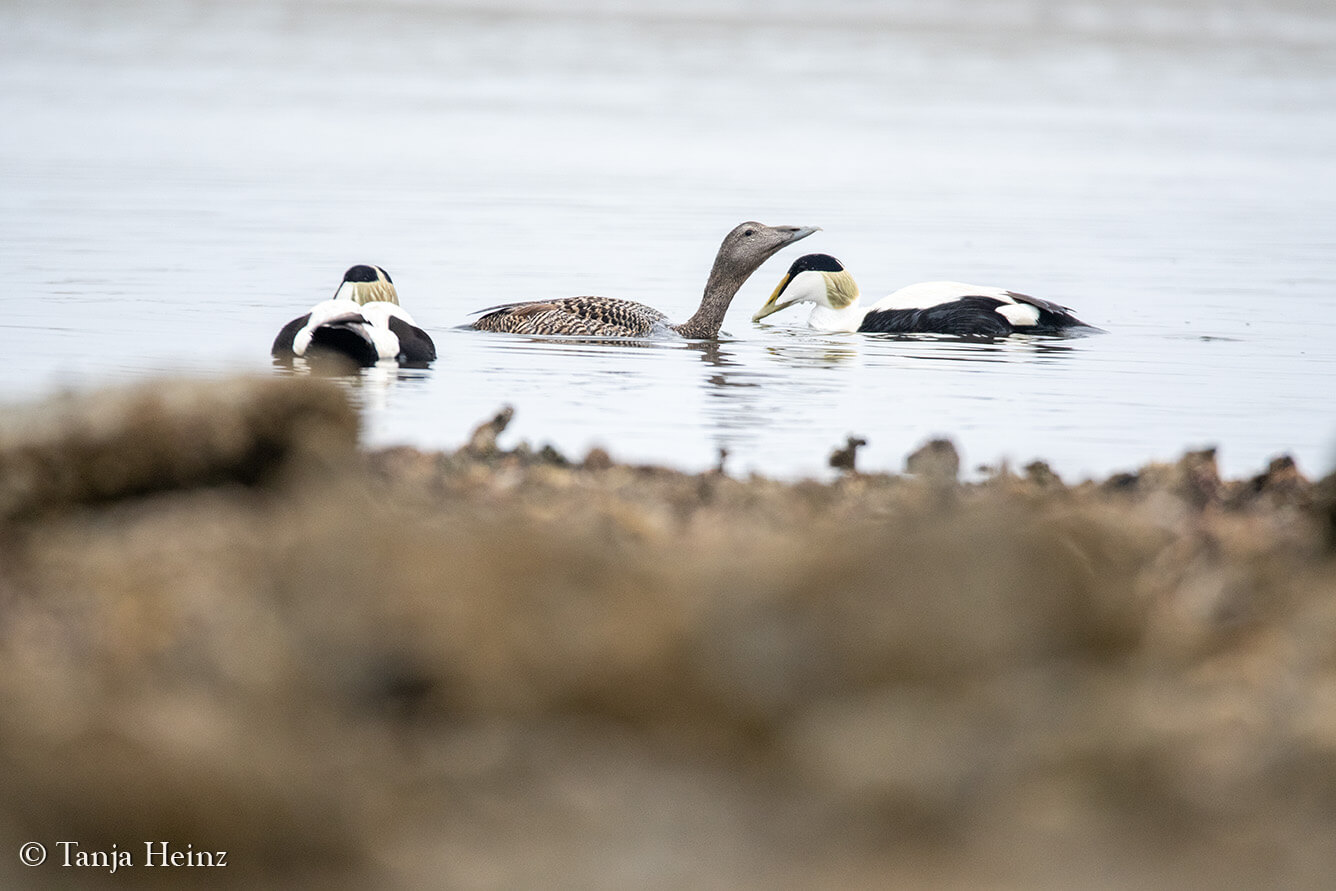
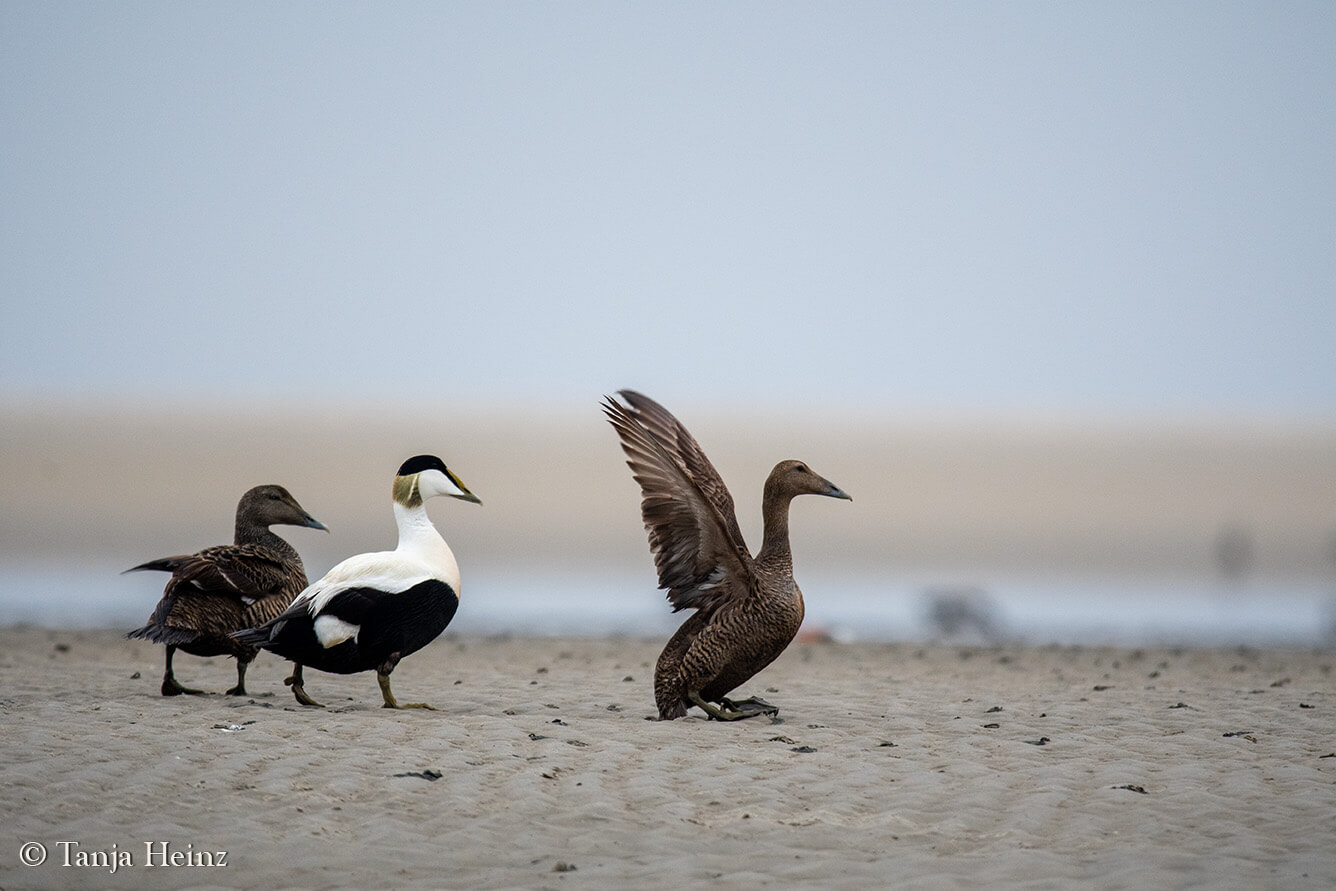
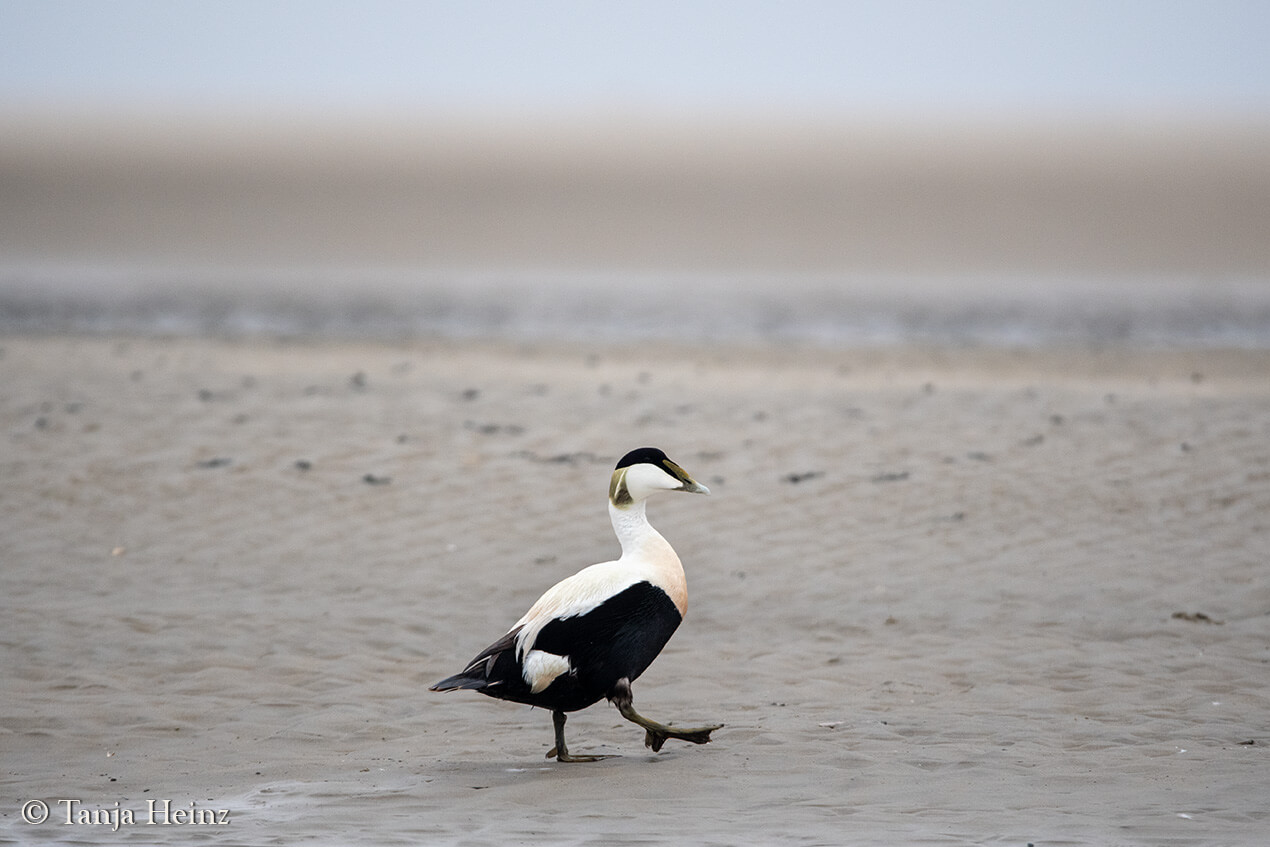
Carrion crow
Like herring gulls, I have to admit, that I usually do not perceive carrion crows immediately, although they are, as well, amazing birds. Again, this is not because of the bird. Carrion crows are beautiful. As I see crows (not carrion crows) on a regular basis, I do not look out for birds I see that often on an island like Borkum where I hoped to see many different bird species. However, to be more precicely, I do not see carrion crows on a regular basis, but hooded crows.
Close to the town, while I was observing other birds, a carrion crow showed up almost next to me. The bird did not appear to be shy and elusive.
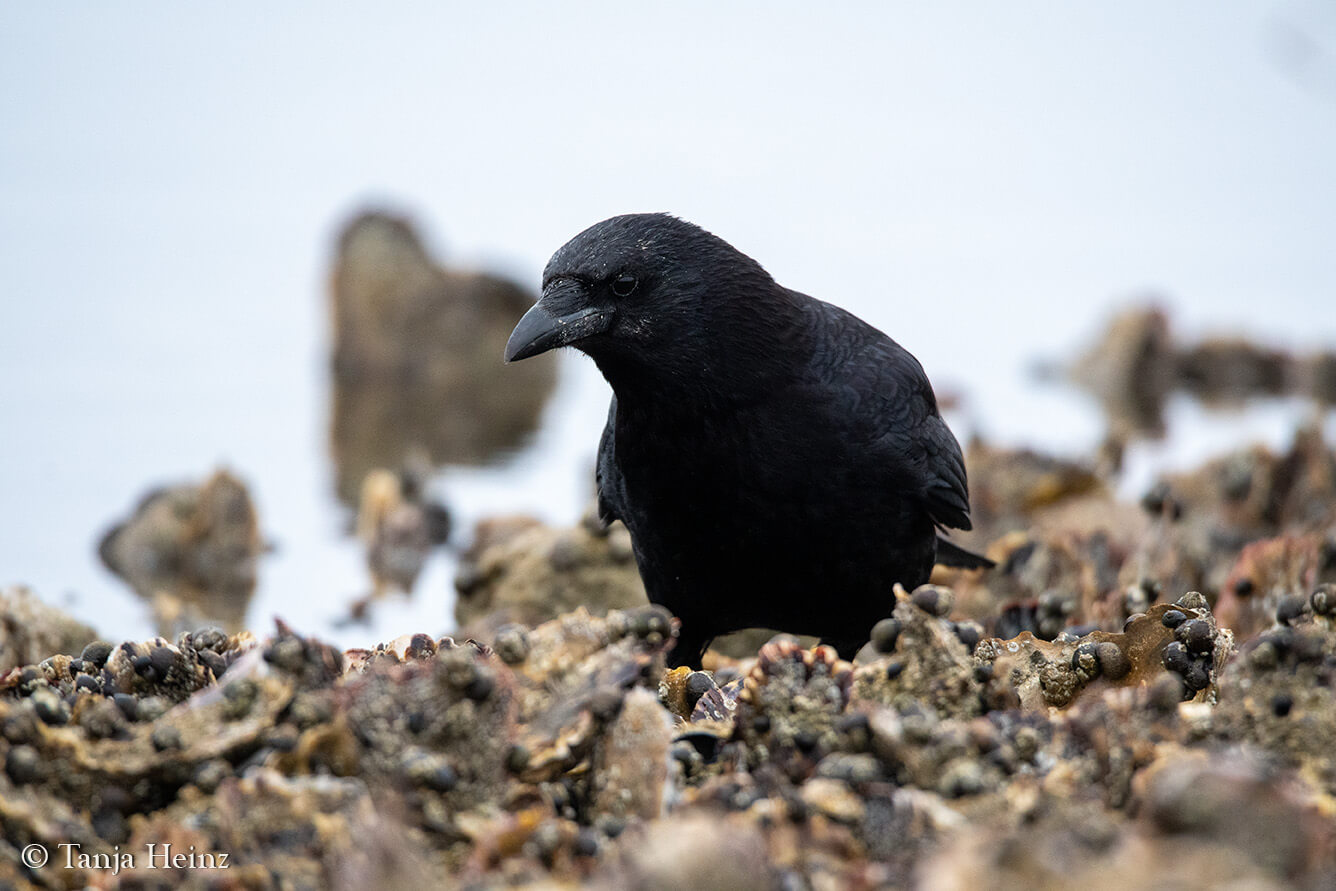
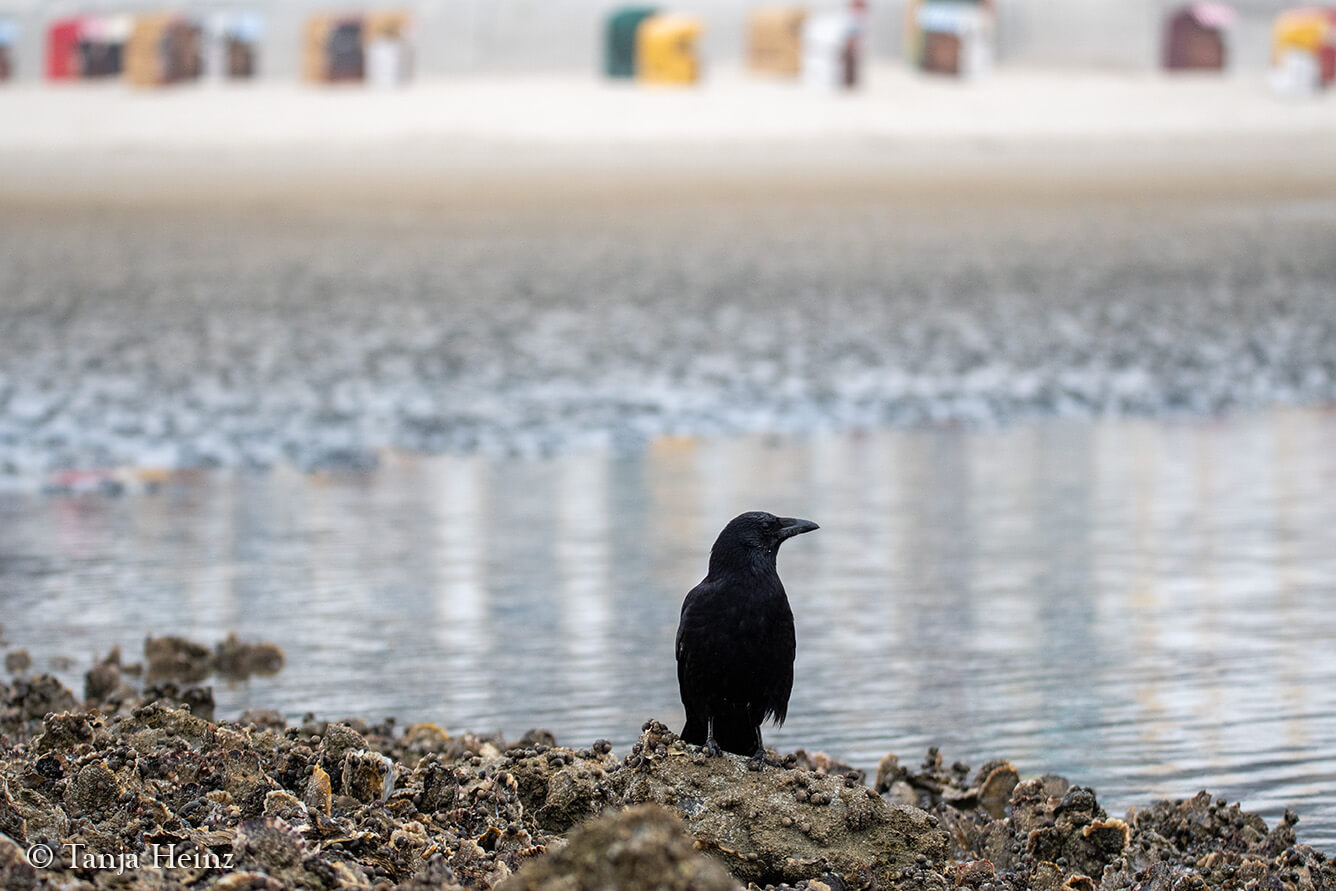
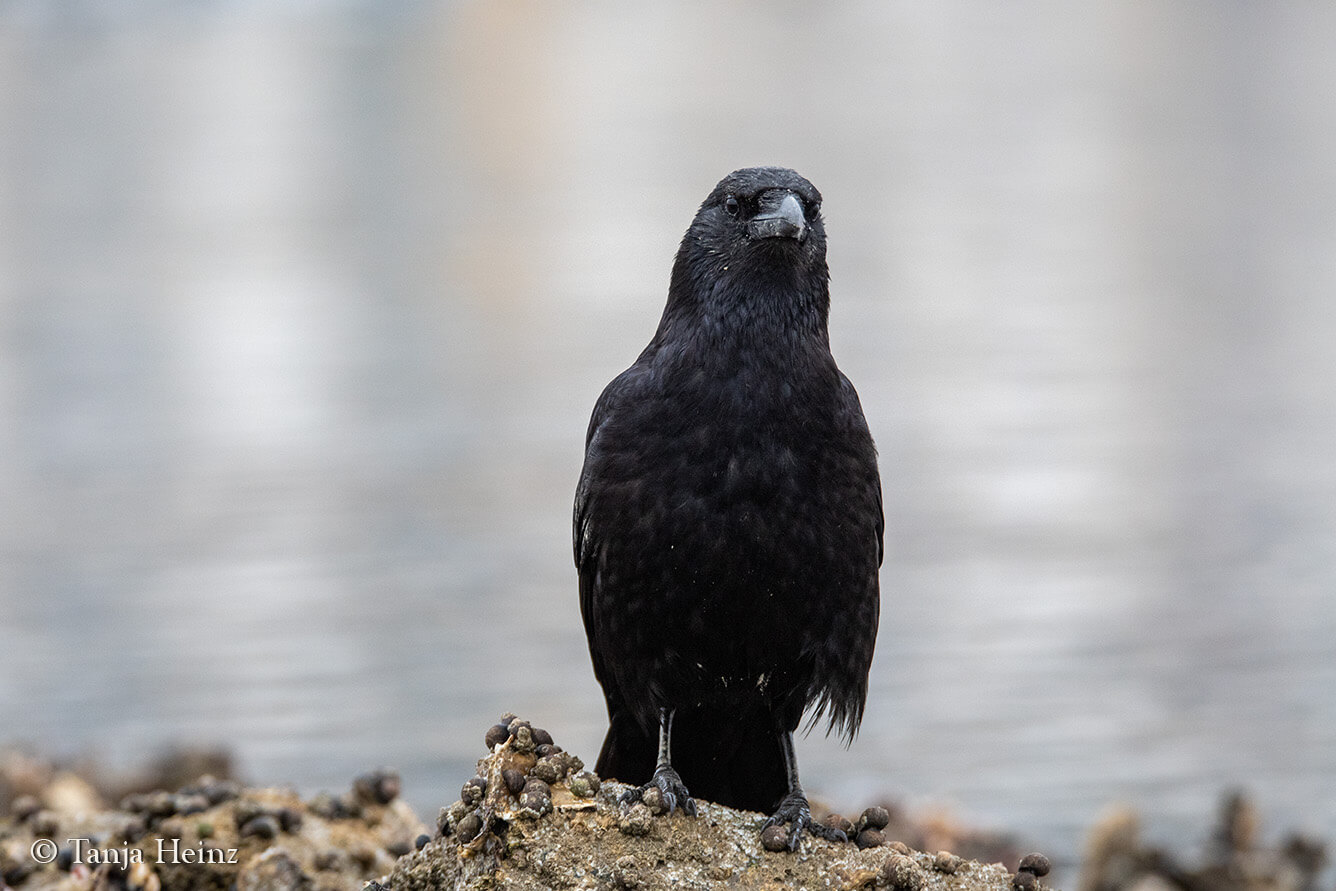
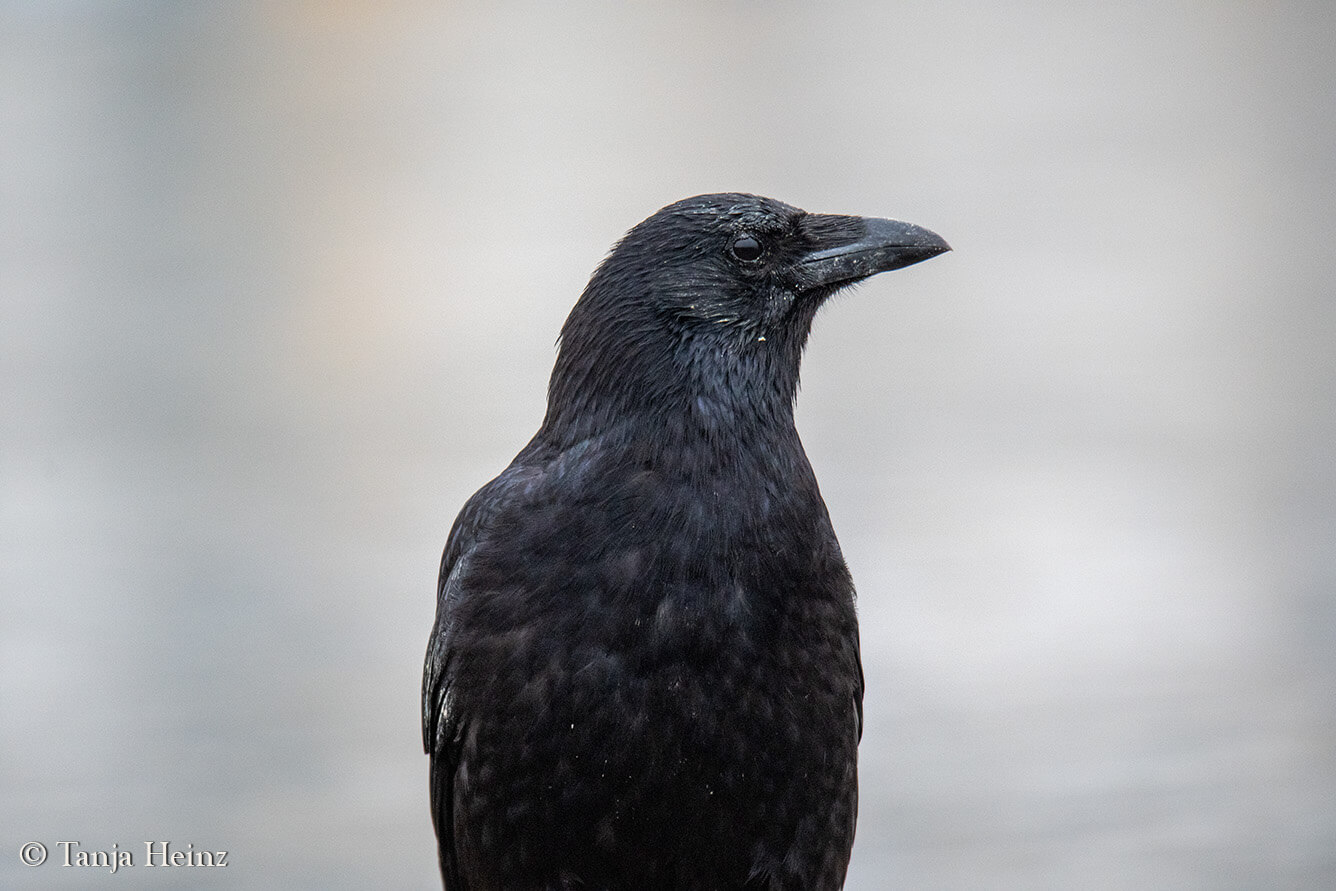
Common wood pigeon
Although birds like wood pigeons are in general quite common birds, I did not see many of them on the island Borkum. Or they are common birds on the island Borkum and I just did not see (perceive) them?
In Berlin, I see common wood pigeons on a regular basis. Of course, they are beautiful birds, even though I do not always perceive them. Especially at a place where I could meet so many other bird species which I had not seen before or birds which I almost never see.
In one moment, a common wood pigeon flew over me. Fortunately, I was already prepared with my camera and I could take a photograph of a common wood pigeon in flight.

Pied avocet
On the island Borkum I saw birds which I had never met before in the wild. The pied avocet was one of these birds. I saw already a pied avocet, but only in a zoo. Of course, it was a quite different experience observing pied avocets in the wild. Although the pied avocets were quite far away, I still could take some photographs of them.
Pied avocets have a black and white plumage. Their plumage is more white than black, but they have a black cap and black patches on the back and in the wings. Pied avocets are known to have a long, upturned bill and long, bluish legs. I saw pied avocets on Borkum on my bicycle tour to the east of the island.
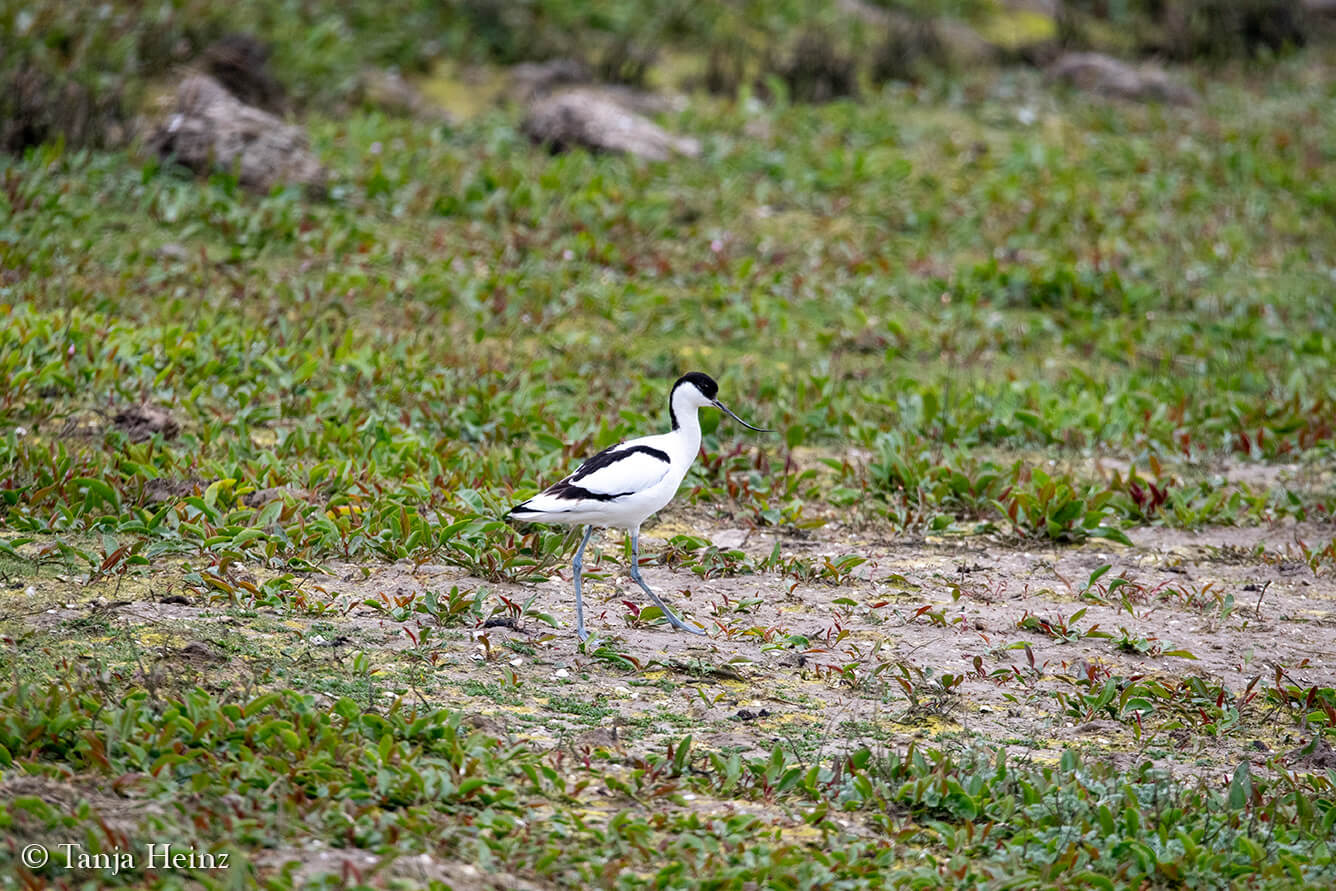
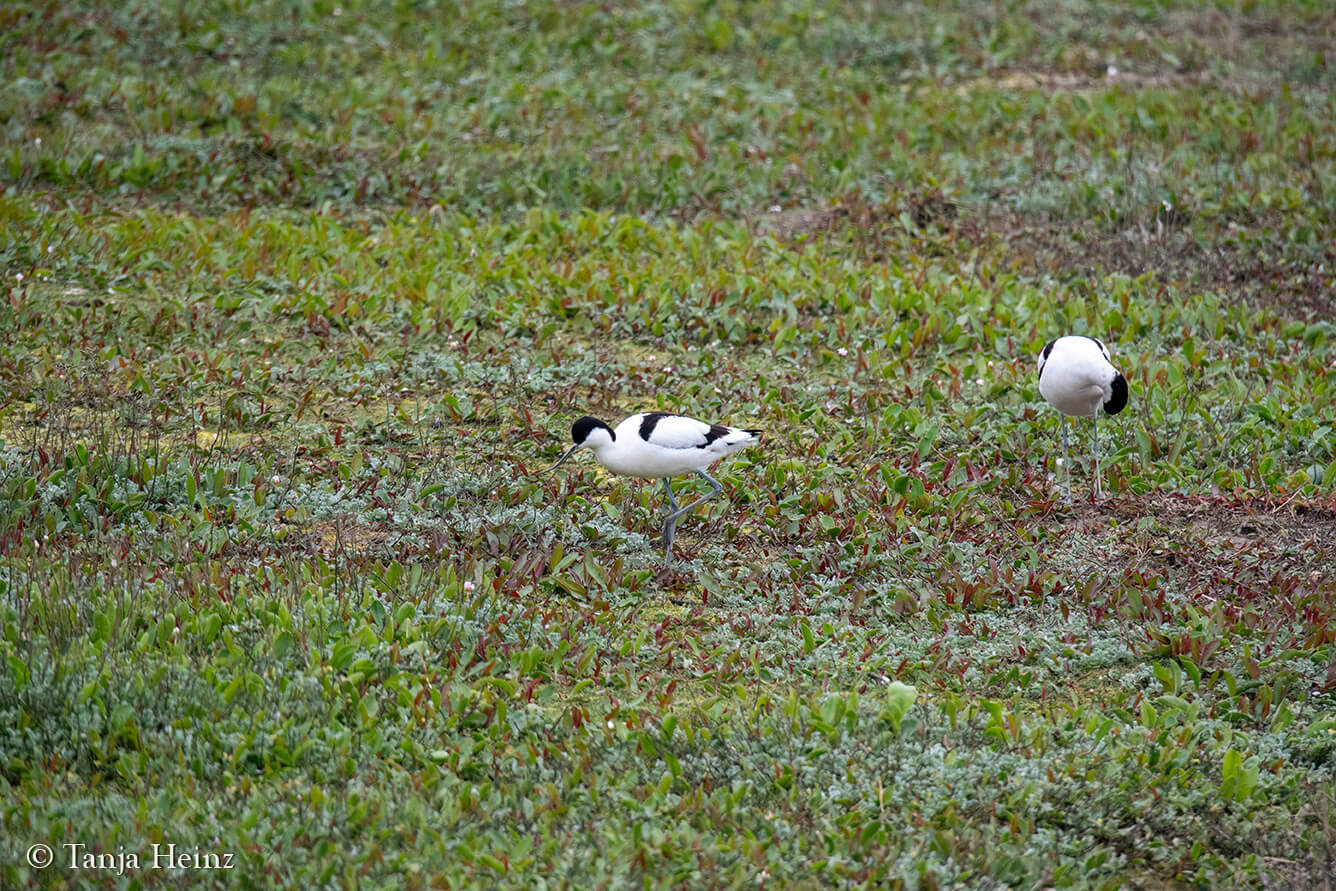
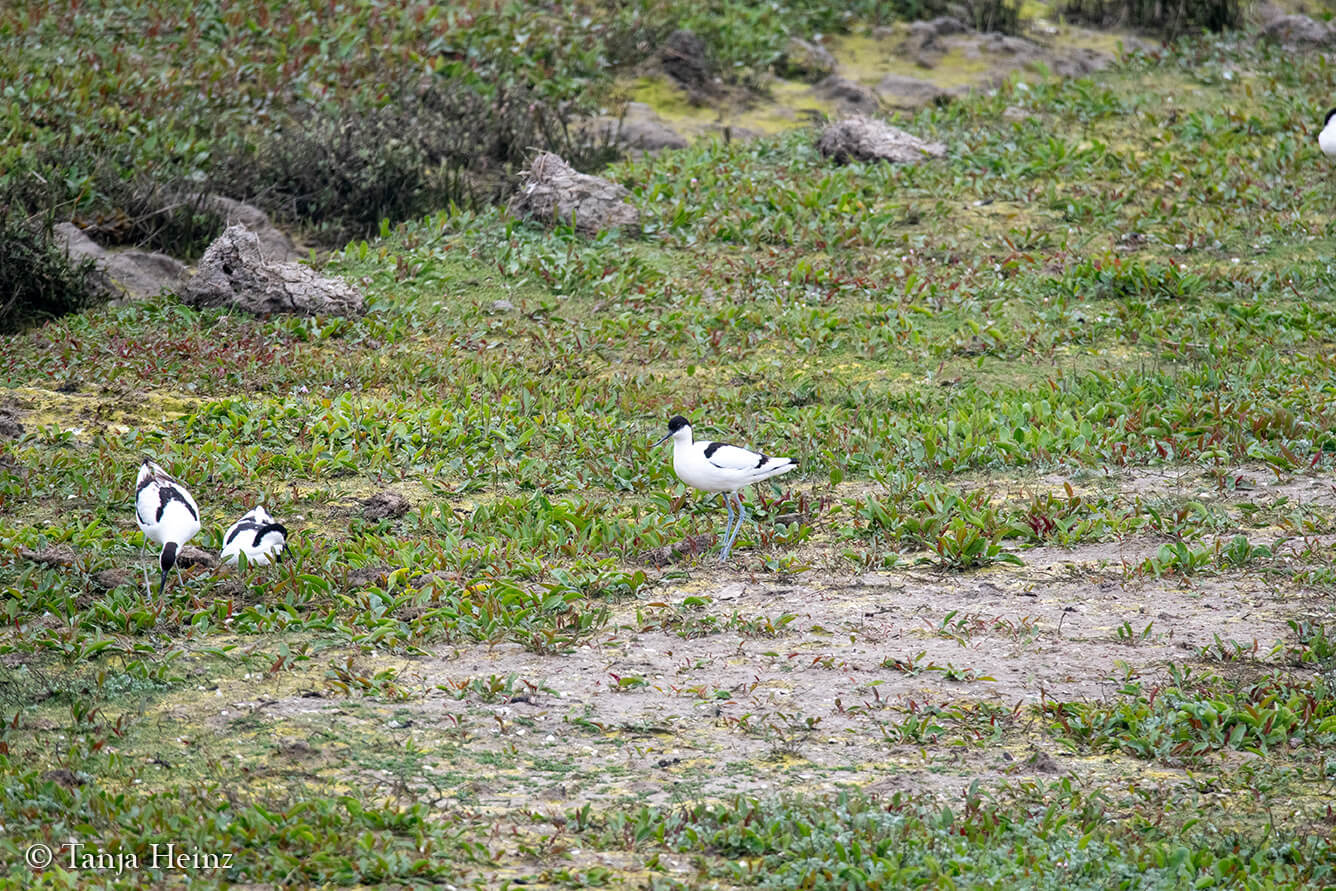
Sanderling
A typical coastal bird in the North Sea is the sanderling. It is rather unlikely to see one of these birds in the interior of Germany. Thus, I saw this bird on the island Borkum for the first time.
The sanderling looked quite inconspicuous with its grey-brownish plumage on its upperparts and its white belly. Furthermore, the sanderling is a rather small bird in contrast to other shore birds like oystercatchers. But they are quite fast running back-and-forth apparently chasing waves.
As sanderlings are shy birds and because they were much faster than I was, it was quite difficult to take a good photograph of one of them. Just next to a sanderling (on the left) was a common ringed plover (on the right).
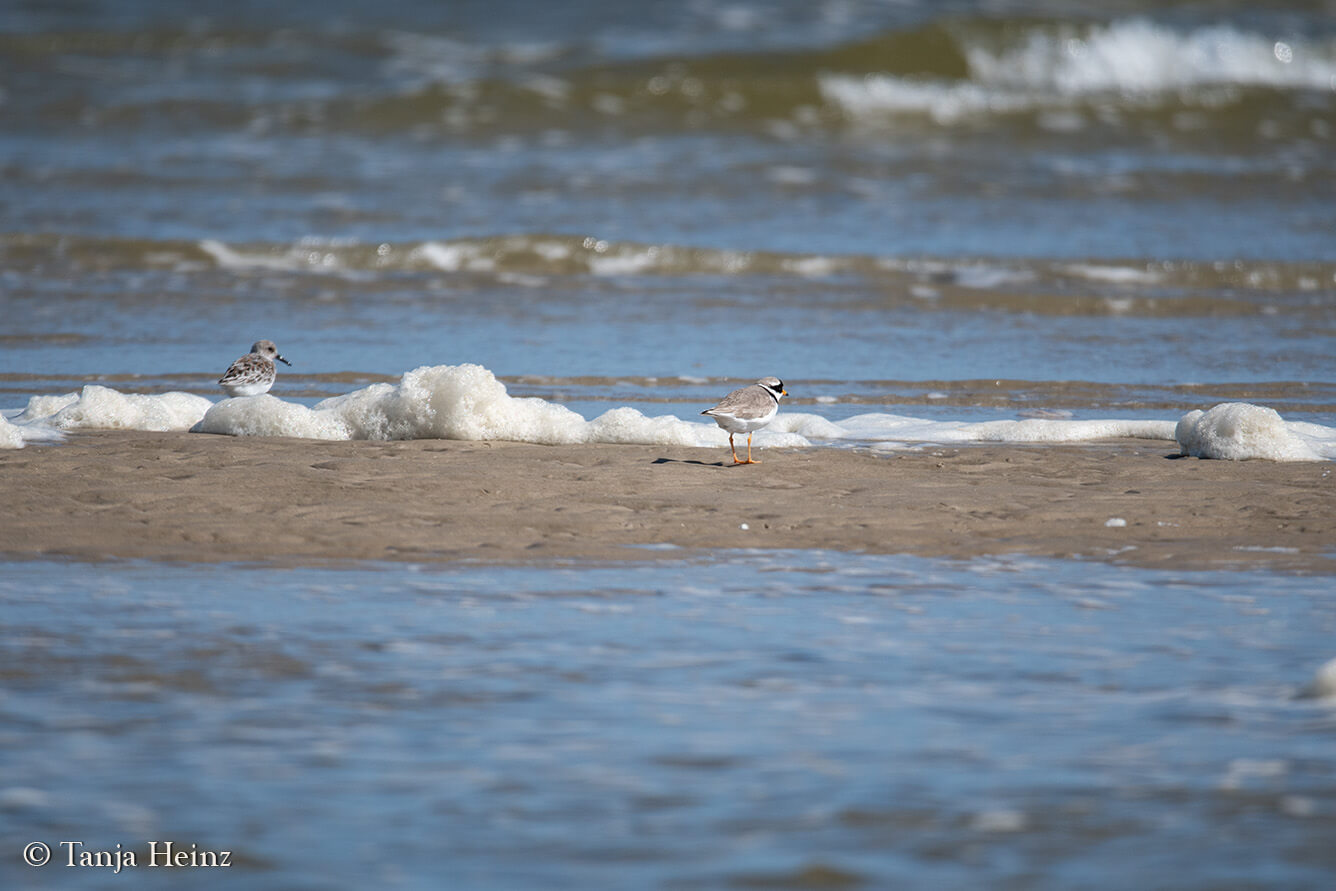
Common ringed plover
In contrast to the sanderling, it was not the first time for me meeting a common ringed plover. But it was the second time, and thus, still a very special encounter for me. I saw common ringed plovers the first time on Grímsey in Iceland. Plovers, however, do not only occur on the mudflats of the Wadden Sea in the North Sea, but also in North and South America.
Common ringed plovers are quite fast and elusive birds. Therefore, it was again very difficult to take photographs of them. But this is okay. I was still happy that I had met them on Borkum. Especially due to the fact that common ringed plovers are an endangered species in Germany. During my walk across the mudflats on Borkum our guide told us that there are apparently only 10 breeding pairs left on the island and that they were about to vanish on Borkum. Thus, the encounter with a common ringed plover was indeed very special.
I saw a common ringed plover on my walk along the beach in the north of the island.
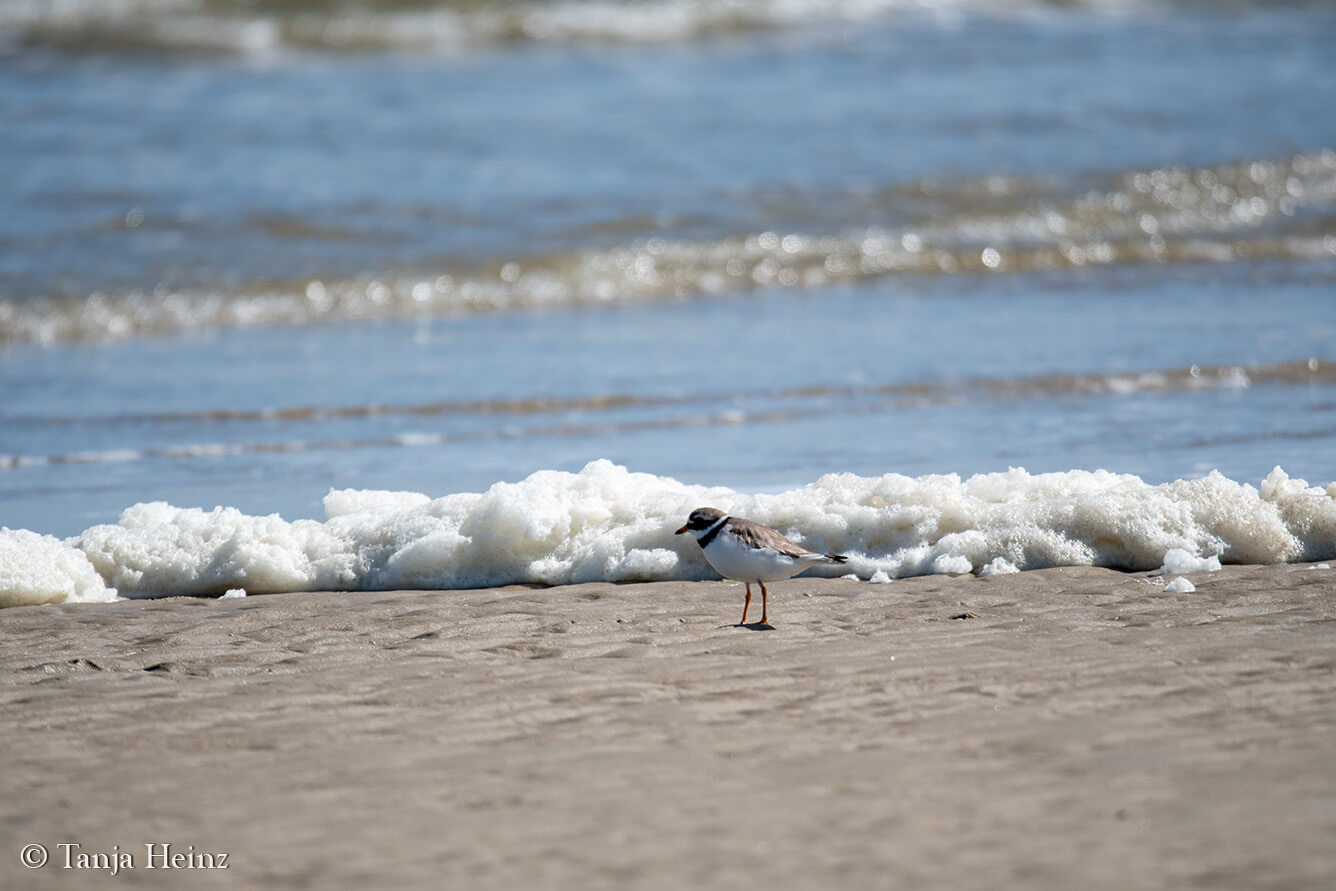
Little tern
Another unique encounter was the one with a little tern. Similar to my encounter with the sanderling, it was for me the first time to meet a little terns. That it why the island Borkum was such a great place for me. Meeting so many bird species for the first time, was indeed quite special for me. Although I saw already sandwich terns in Spain or Arctic terns in Iceland, it was for me the first time observing little terns.
As the name already indicates, the little tern is one of the smallest tern. But little terns have a relatively large head. Their legs are rather short, but their bills are almost the size of their heads.
Again, I saw this little tern on the beach in the north of the island Borkum.
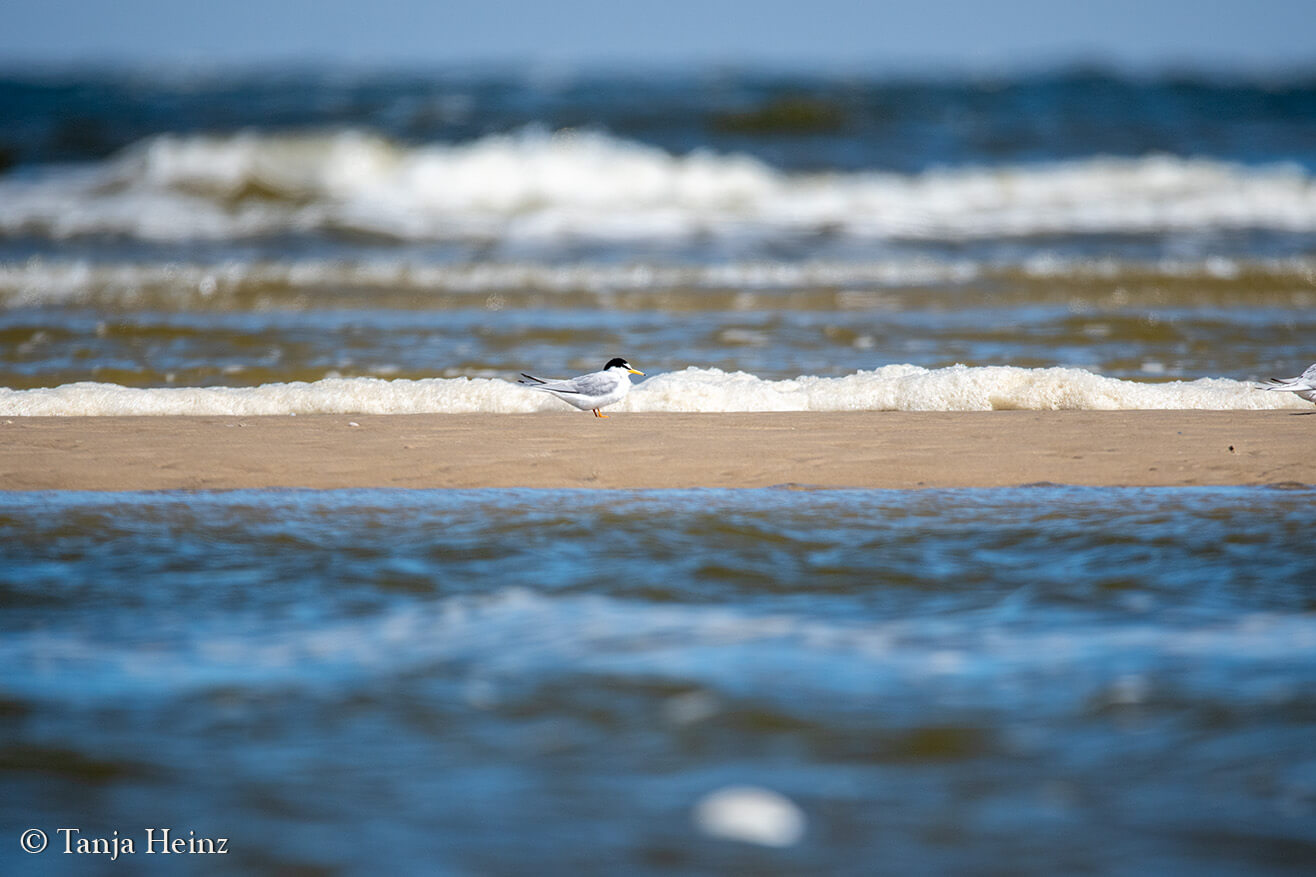
Bar-tailed godwit
One more special encounter was the one with the bar-tailed godwit. I observed this bird, as well, in the north of the island. While the common ringed plover, the sanderling, and the little tern were quite shy, I could stay a little bit closer to a bar-tailed godwit (although I sensed that this bird was also shy). But not that close. Because I did not want this bird to scare away and to leave.
The sanderling and the ruddy turnstone, by the way, belong to the same bird family (Scolopacidae) like the bar-tailed godwit. Bar-tailed godwits have a quite long bill which they use to pull out worms, crustaceans, or other animals from the sand.
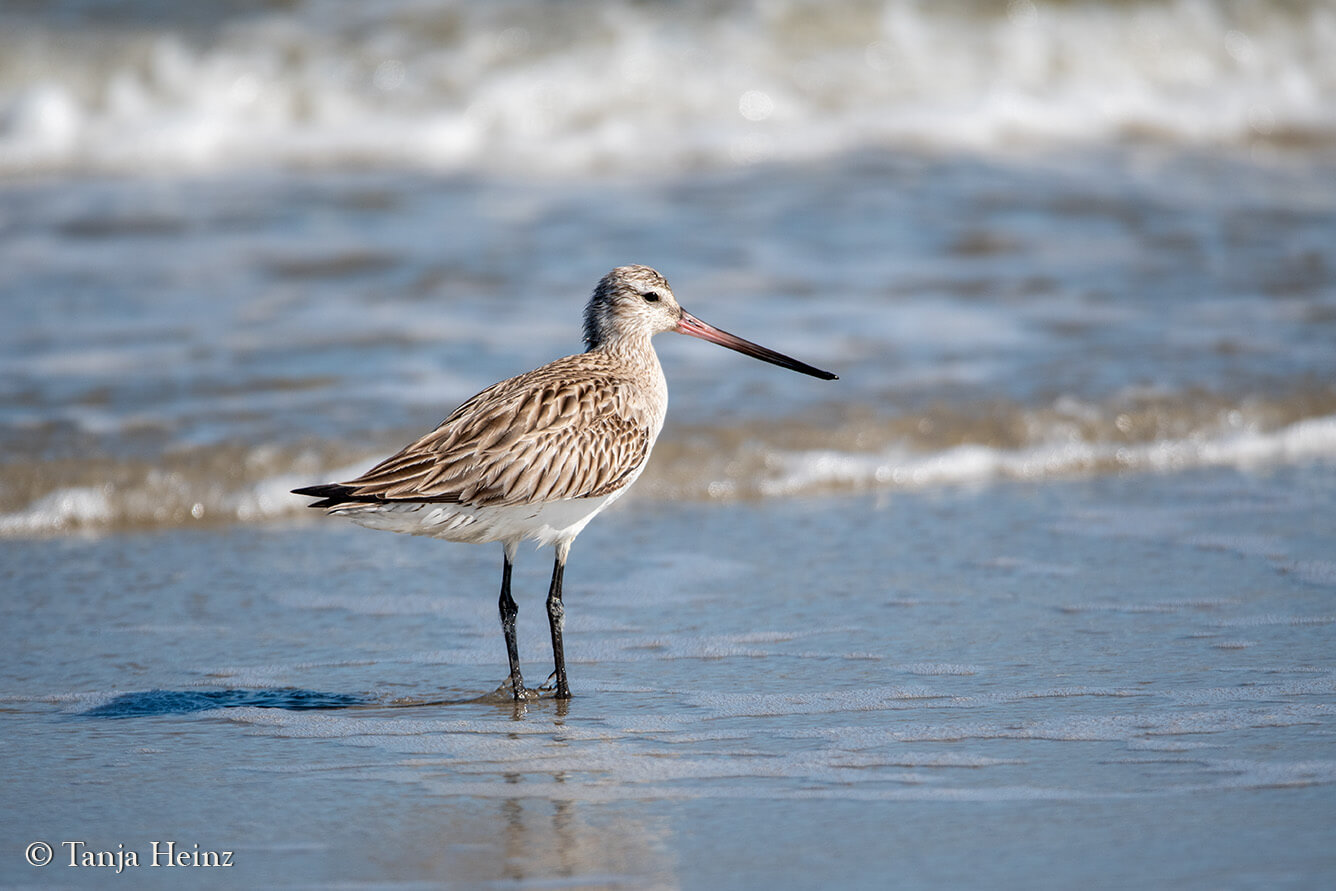
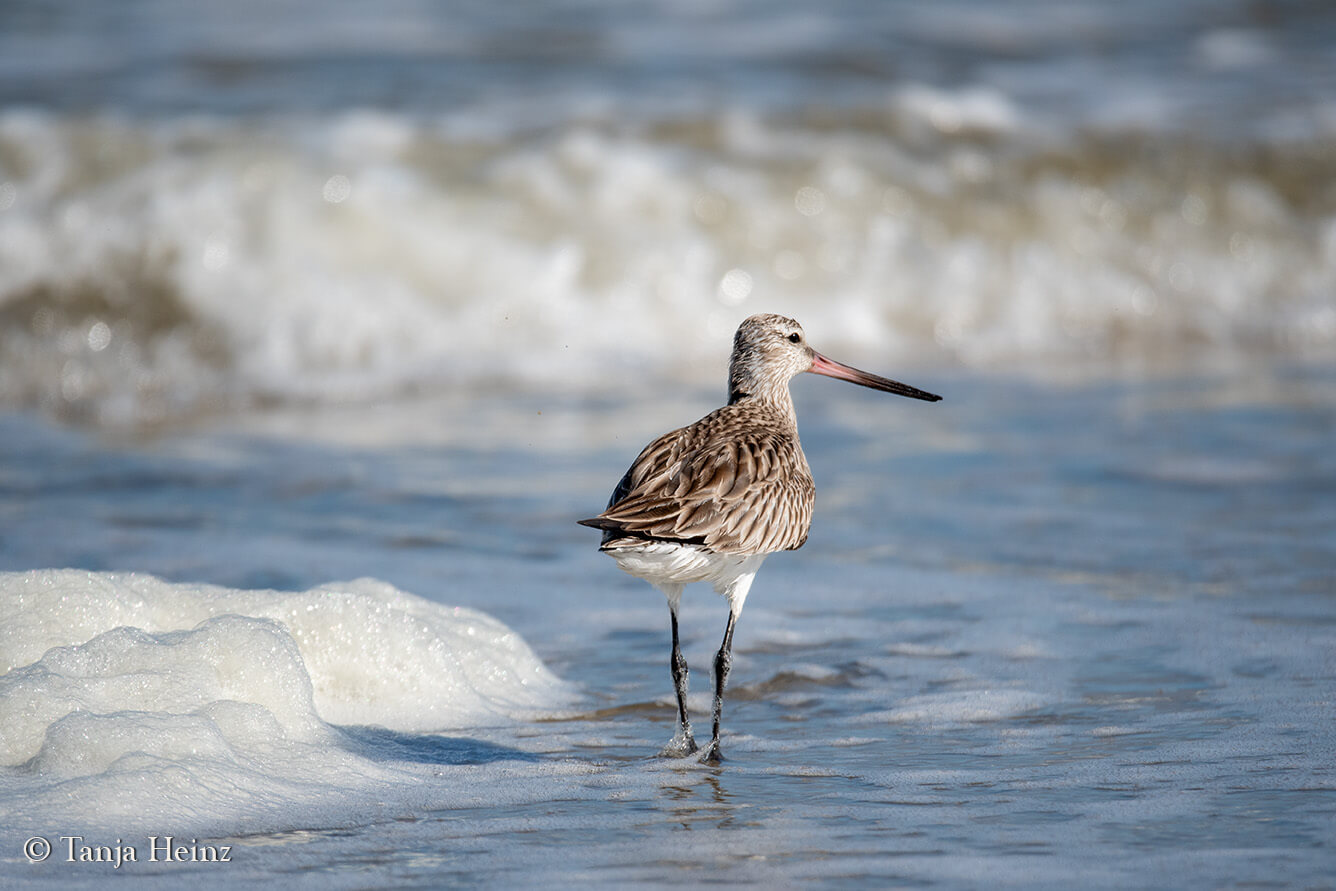
Eurasian blackbird
While my counters with the bar-tailed godwit, the sanderling, and the little tern were quite unique for me, I also met birds on the island Borkum which were not that unique, as I see these birds almost daily. The Eurasian black bird is one of these birds I encounter almost every day. I usually see them when I go to the park, or I hear them anywhere rustling on the ground near shrubs. I also hear them relatively frequently sing.
Therefore, on the island Borkum, I put my focus on birds which I usually not see. Here and there I saw a Eurasian blackbird taking a rest for some moments.

Eurasian wren
I do not see Eurasian wrens as frequently as Eurasian blackbirds, but usually I see them a few times in Berlin every year. Eurasian wrens sometimes sing and call quite loudly. When they feel threatened, they will tell it.
On the island Borkum, I saw only one Eurasian wren once when I was cycling to the New Lighthouse. I stopped immediately, prepared my camera and took a photograph.
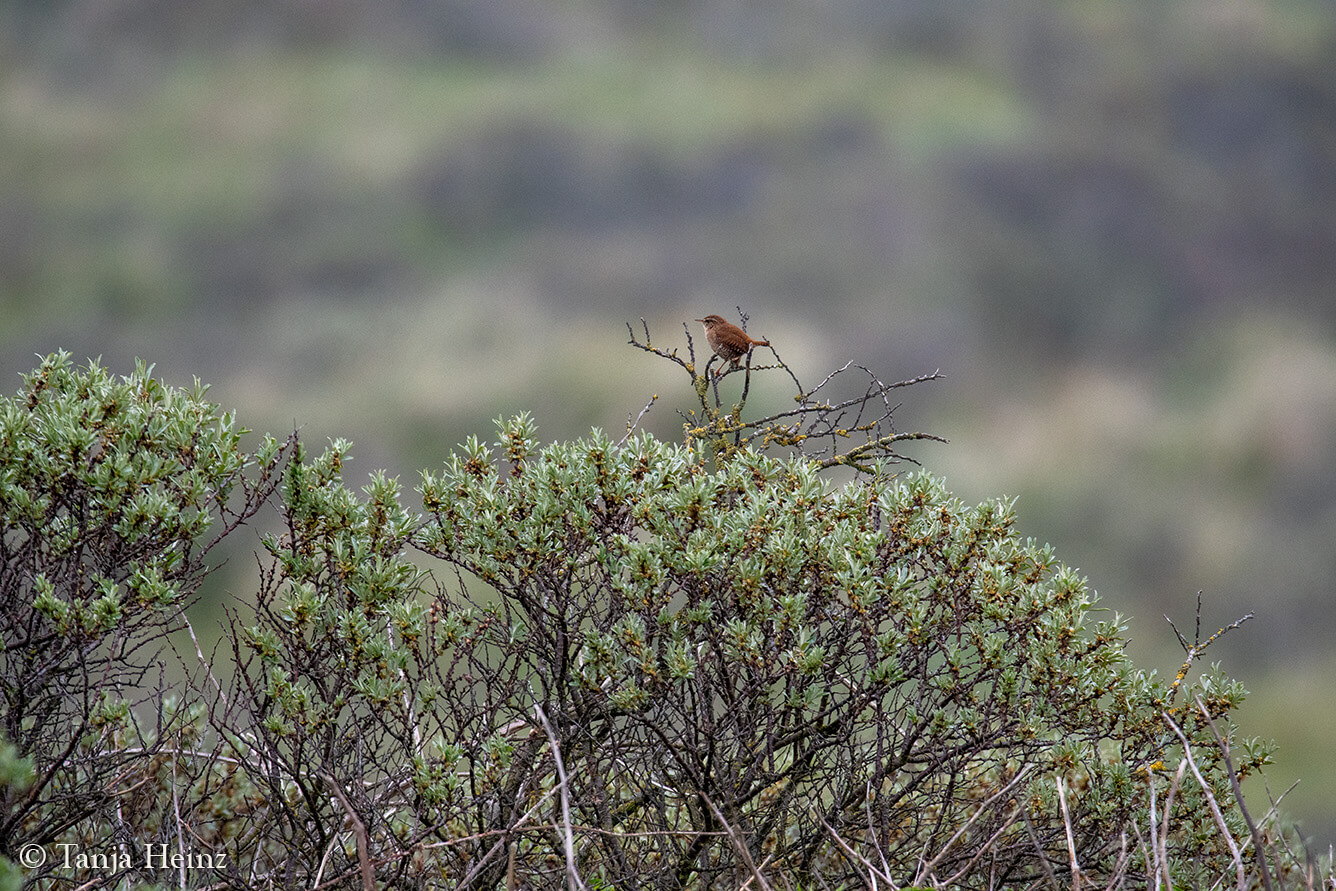
Eurasian magpie
The Eurasian magpie is sometimes another common bird in towns or cities. Until lately, I even had a Eurasian magpie couple in the backyard as neighbours (in Berlin). Unfortunately, they cut down the tree and the two birds lost their home (fortunately, they planted another tree). However, the two Eurasian magpies vanished. I hope they have found another tree as home. Or better, I hope they come back one day.
The Eurasian magpies on the island Borkum appeared to me quite shy and elusive. As soon as they saw me or detected my presence, they left. I had to be very, very careful to be able to observe Eurasian magpies on the island Borkum.
Just one bird was brave enough and did not leave when I was around with my camera.
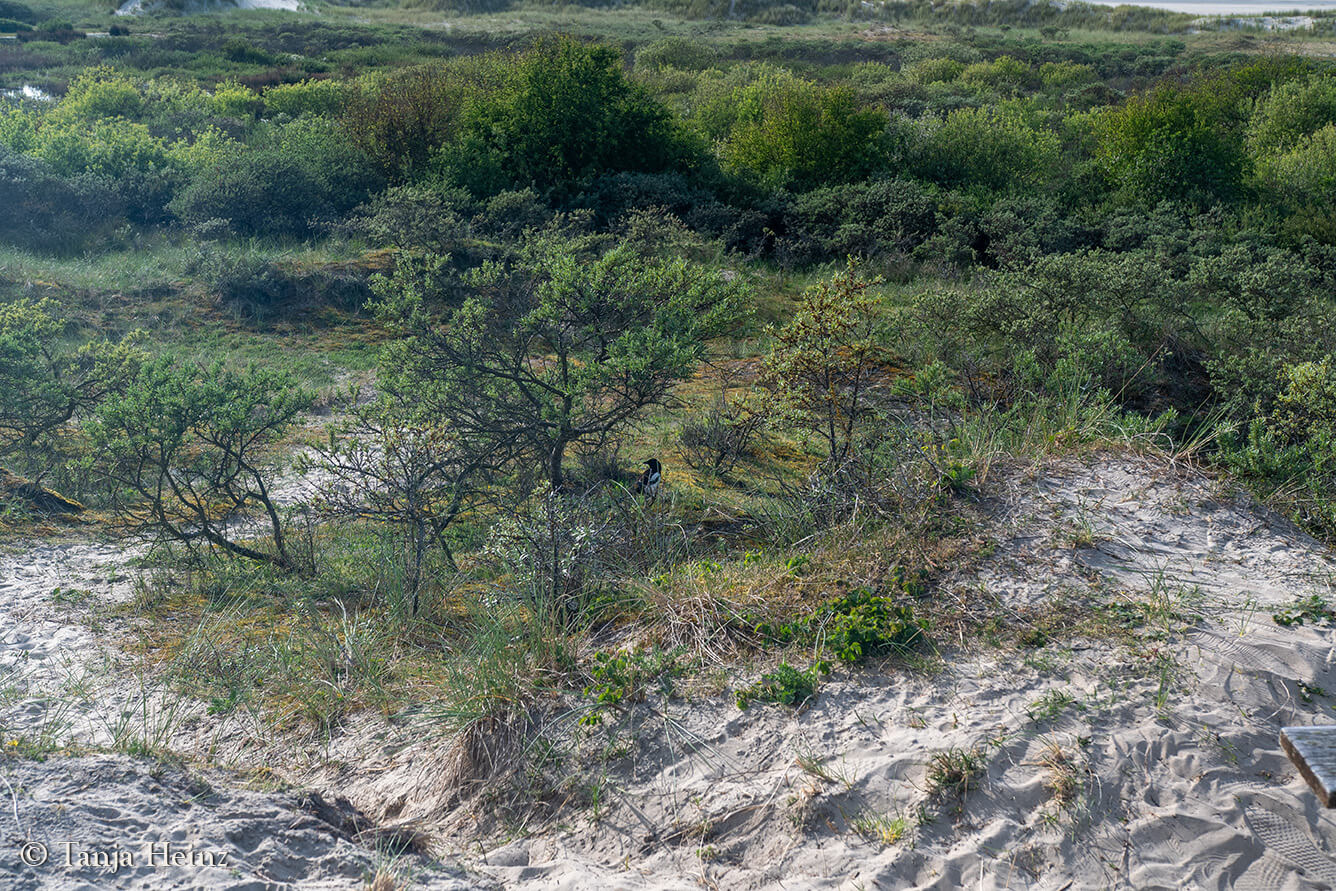
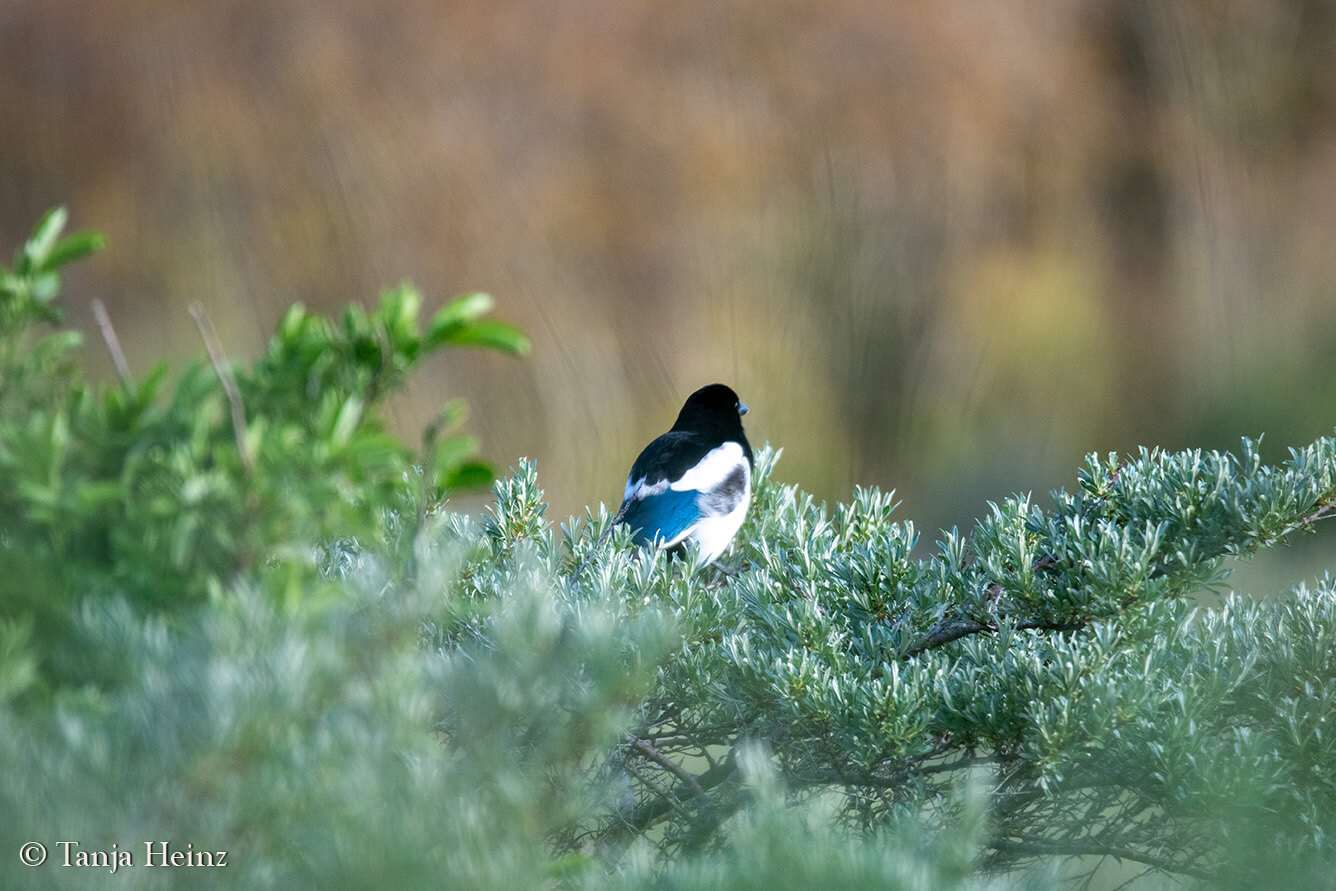
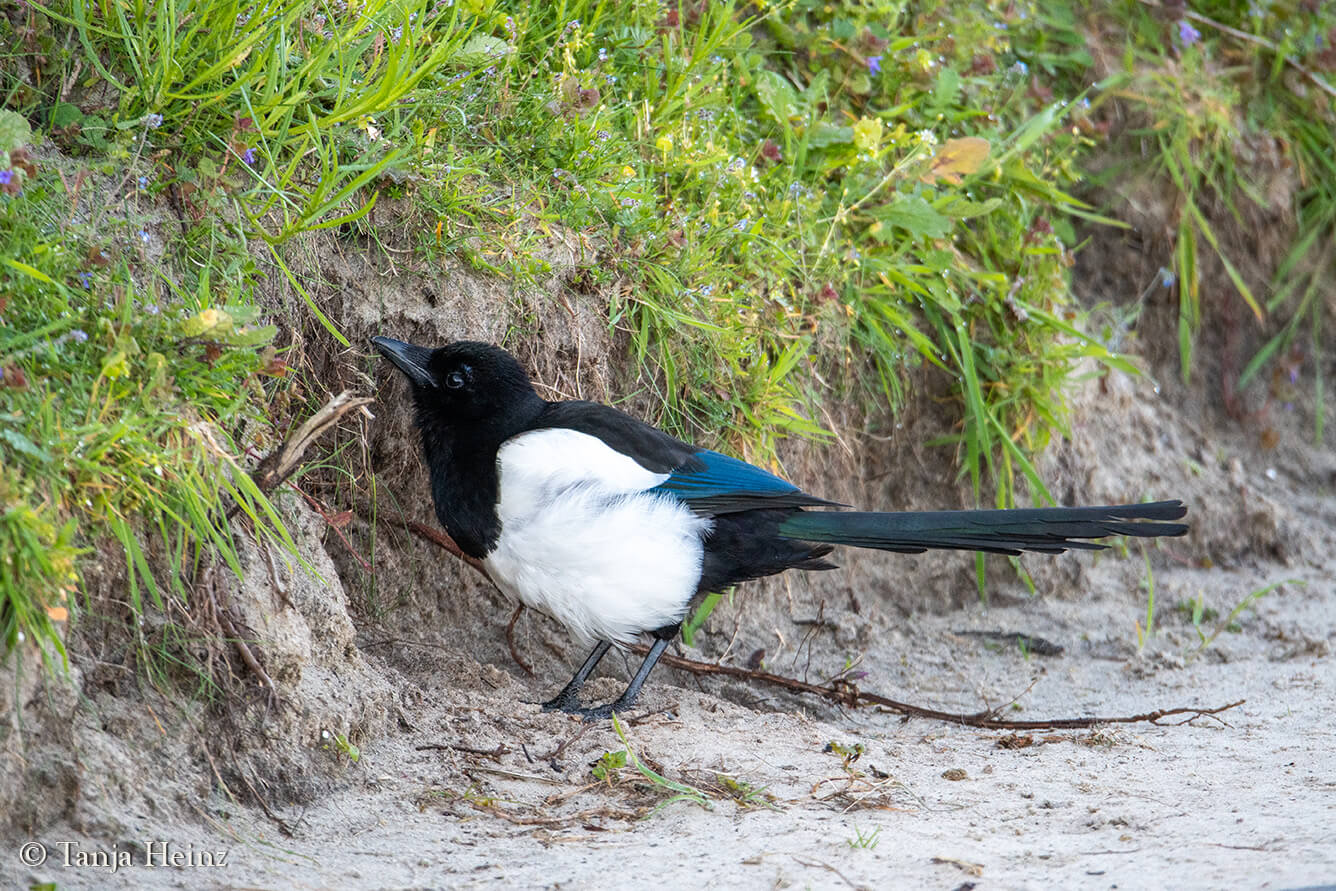
Northern wheatear
A very beautiful bird, which I had seen already several times in Berlin like on the Tempelhofer Feld, is the northern wheatear. On the island Borkum, I saw northern wheatears at two different places. I saw them close to a group of wild rabbits near the town and on a small hill in the interior of the island. On that small hill, which was great to get a view onto the surrounding landscapes, I saw a northern wheatear resting on a shrub. The bird probably saw me, but did not leave and remained quietly on the branches of the shrub. First of all, I had to prepare my camera. I thought that the bird would probably leave before I am prepared. But the bird waited for me. I was indeed quite lucky to have been able taking a photograph of this northern wheatear from a short distance.

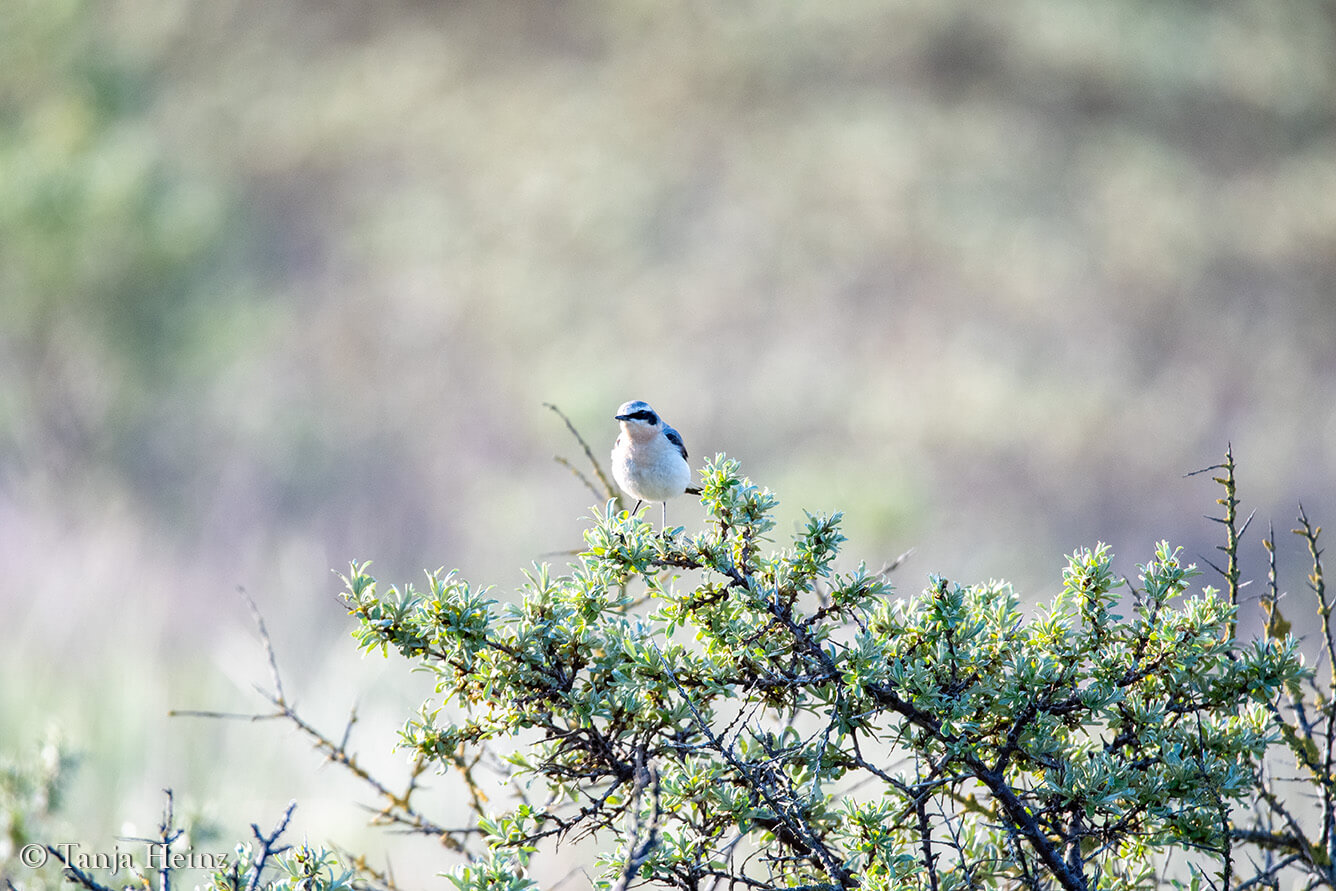
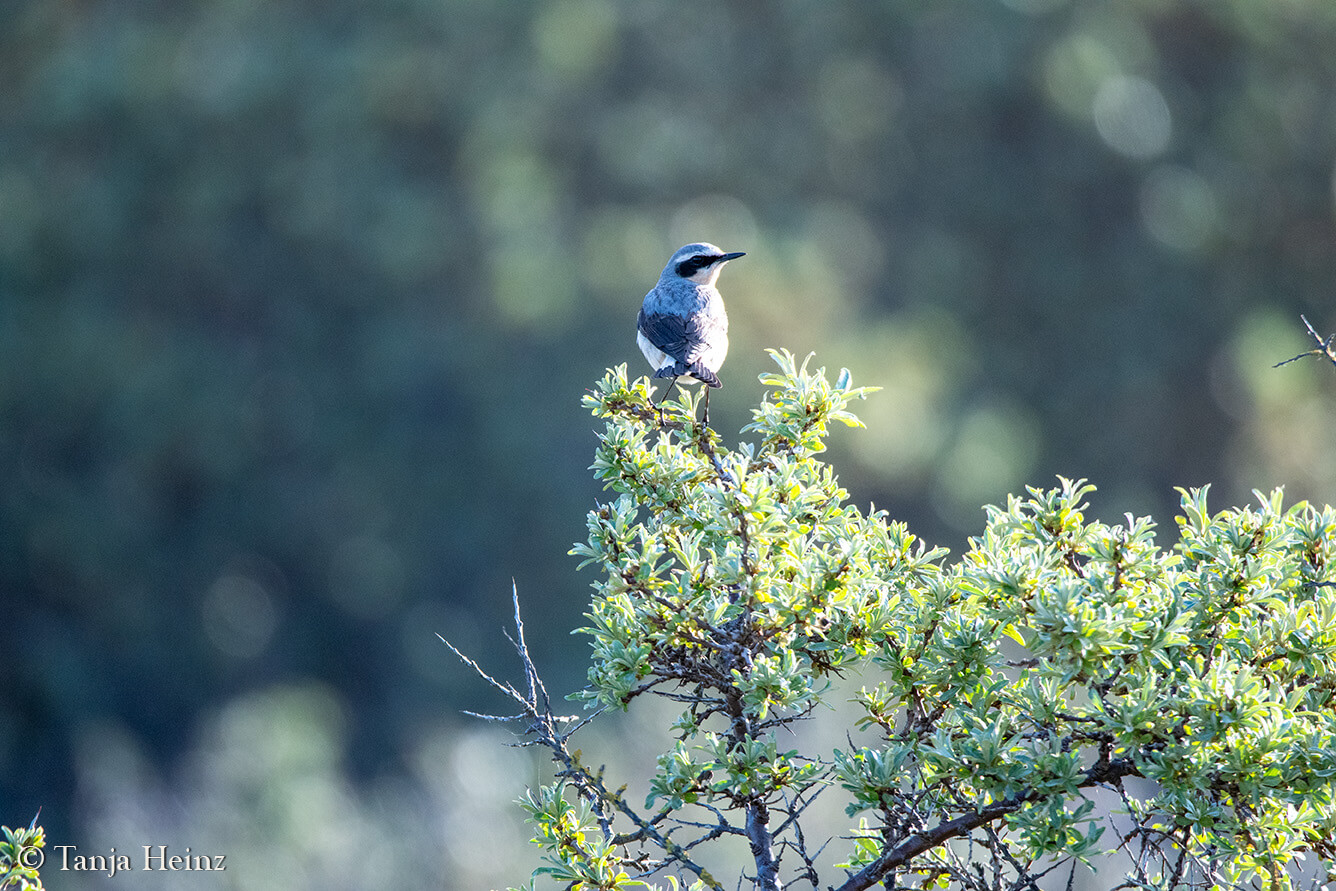
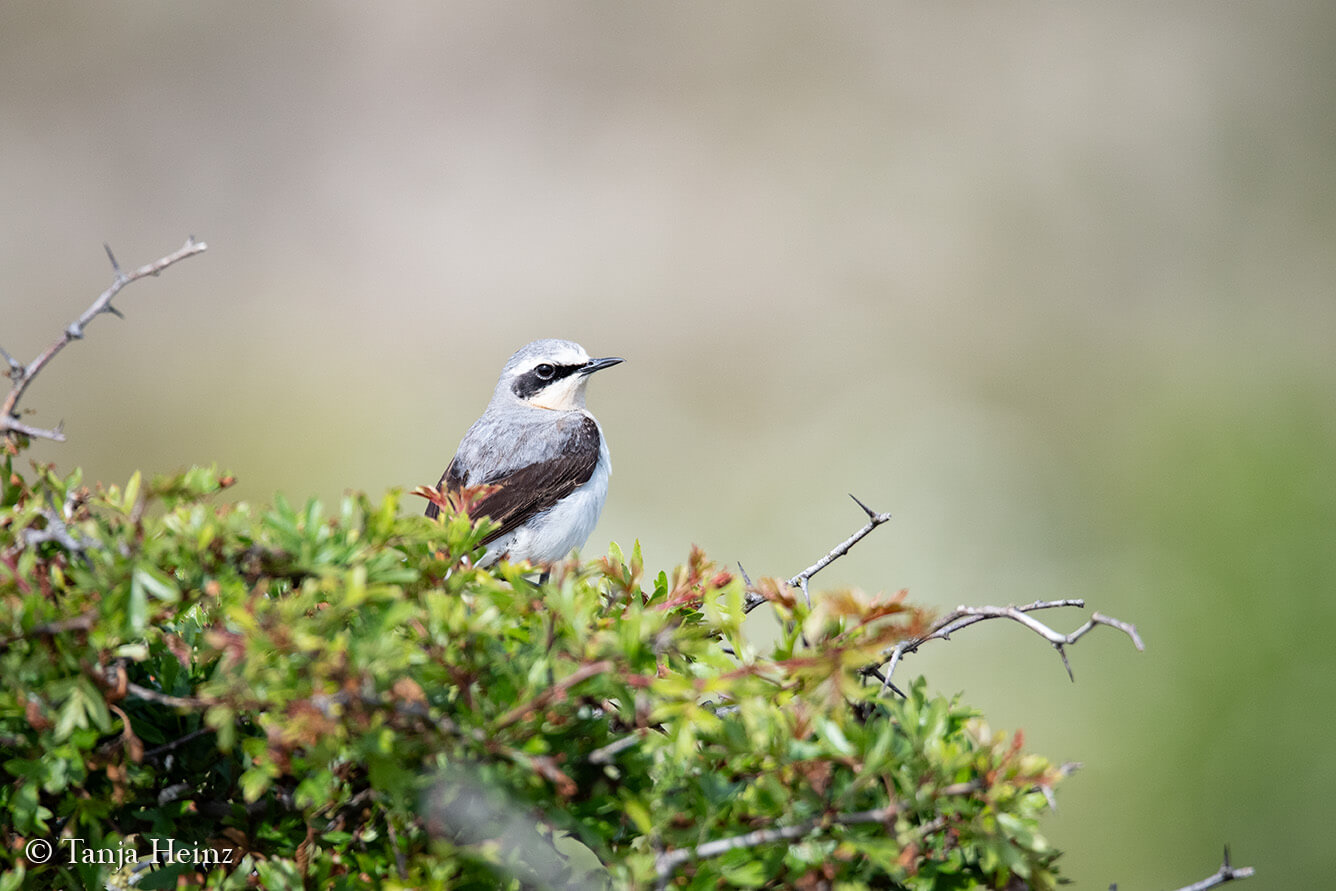
Common redstart
While I was so lucky to have met a northern wheatear that close, I was not that lucky with the common redstart. Although I was already prepared with my camera that time, the bird flew away before I could take a photograph. Well, that is wildlife photography. I had to remind myself in that moment that I had already seen a common redstart quite well in the Tiergarten in Berlin.
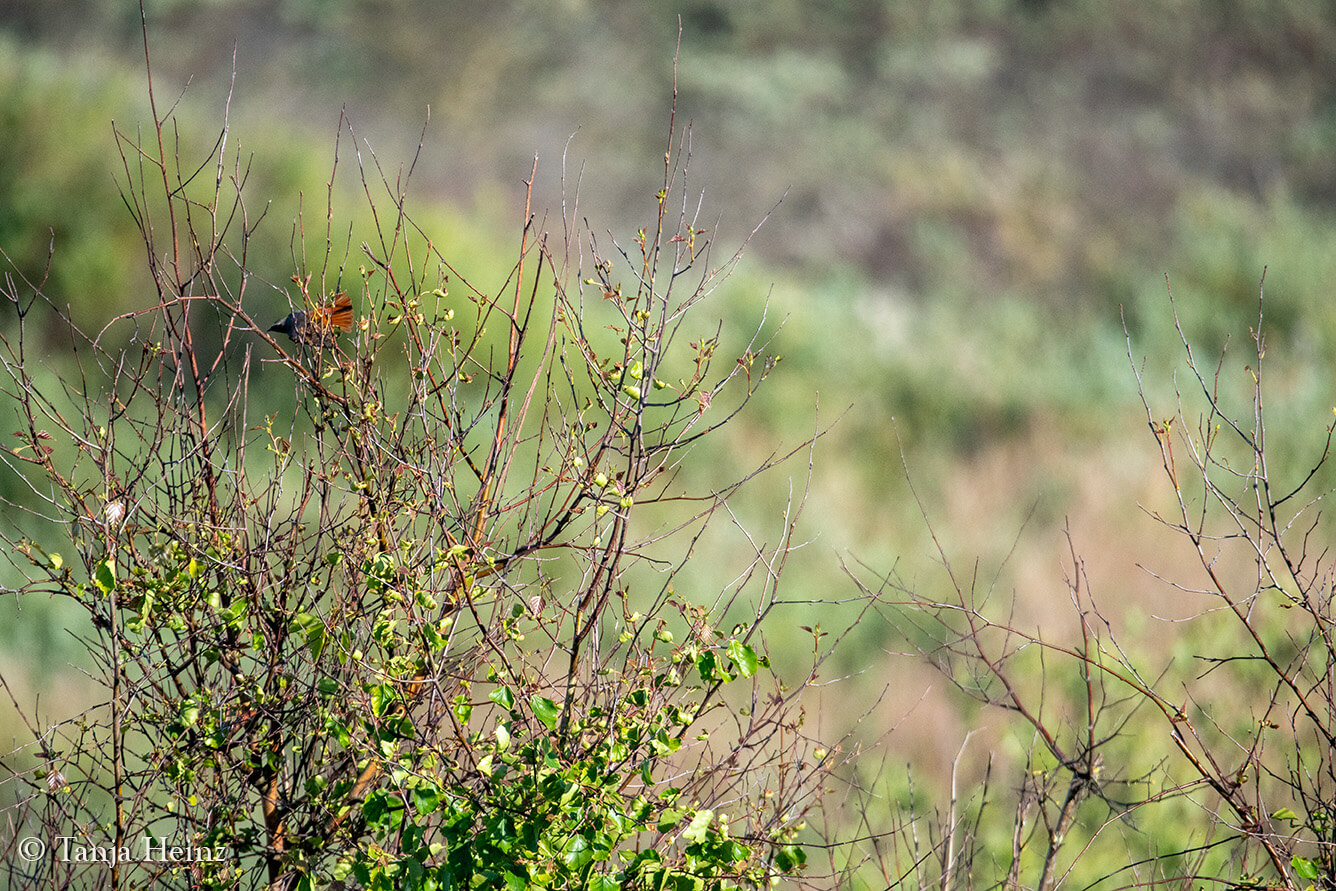
Garden warbler
While I see quite many Eurasian blackcaps in spring in several parks in Berlin or hear the songs of lesser whitethroats, I do not see or hear garden warblers on a regular basis. I saw them already at the Tempelhofer Feld, but just once.
As well, on the island Borkum, I met a garden warbler only once. That garden warbler was like the common redstart and the Eurasian wren. The bird showed up for a short moment and left again.
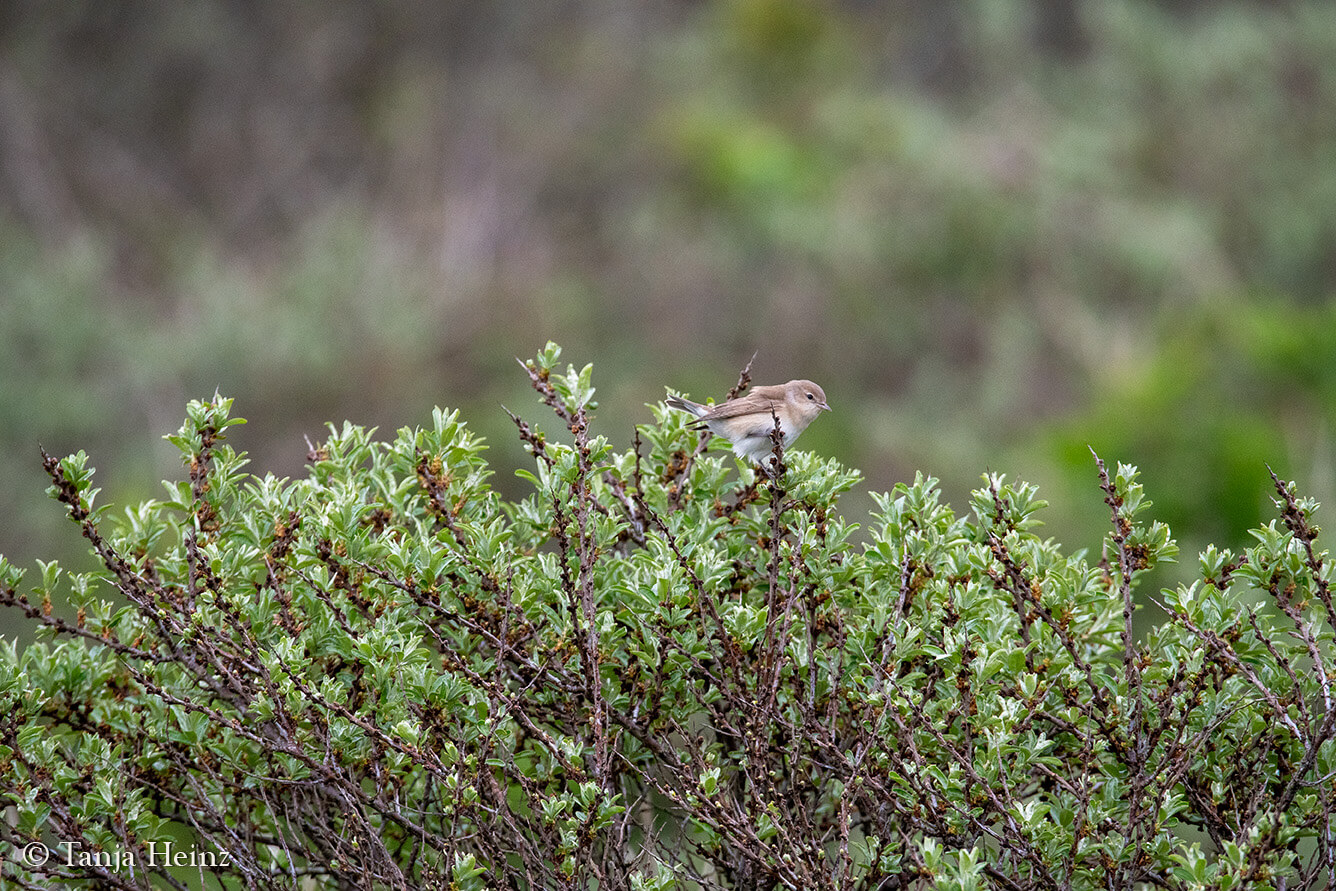
Common whitethroat
As well, I saw the common whitethroat in Berlin already at the Tempelhofer Feld.
On the island Borkum I met the common whitethroat one more time. And this for a little bit longer. I heard the common whitethroat sing and I tried to approach a little bit in order to take a photograph. However, this was not easy at all.
Unfortunately, I do not have a recording of the common whitethroat's songs. But one of a lesser whitethroat which I saw only once for a short moment (a photograph was not possible). In the following recording you can hear a lesser whitethroat and a willow warbler (the willow warbler is louder than the lesser whitethroat).
Although I could not get a recording of the common whitethroat, I was happy to have seen this bird several times on the island.
Fortunately, I could get some visual impressions of the common whitethroats of Borkum.
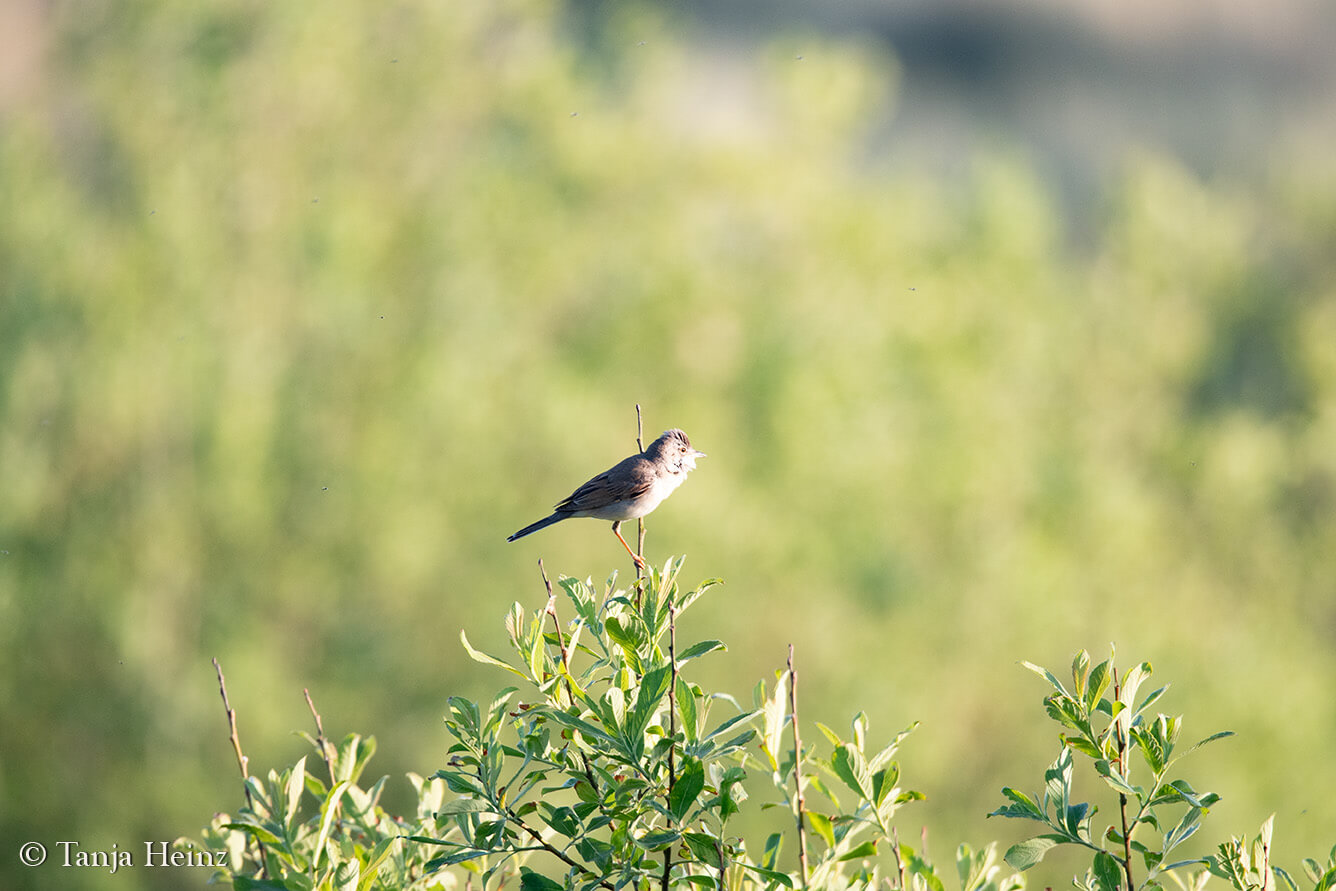
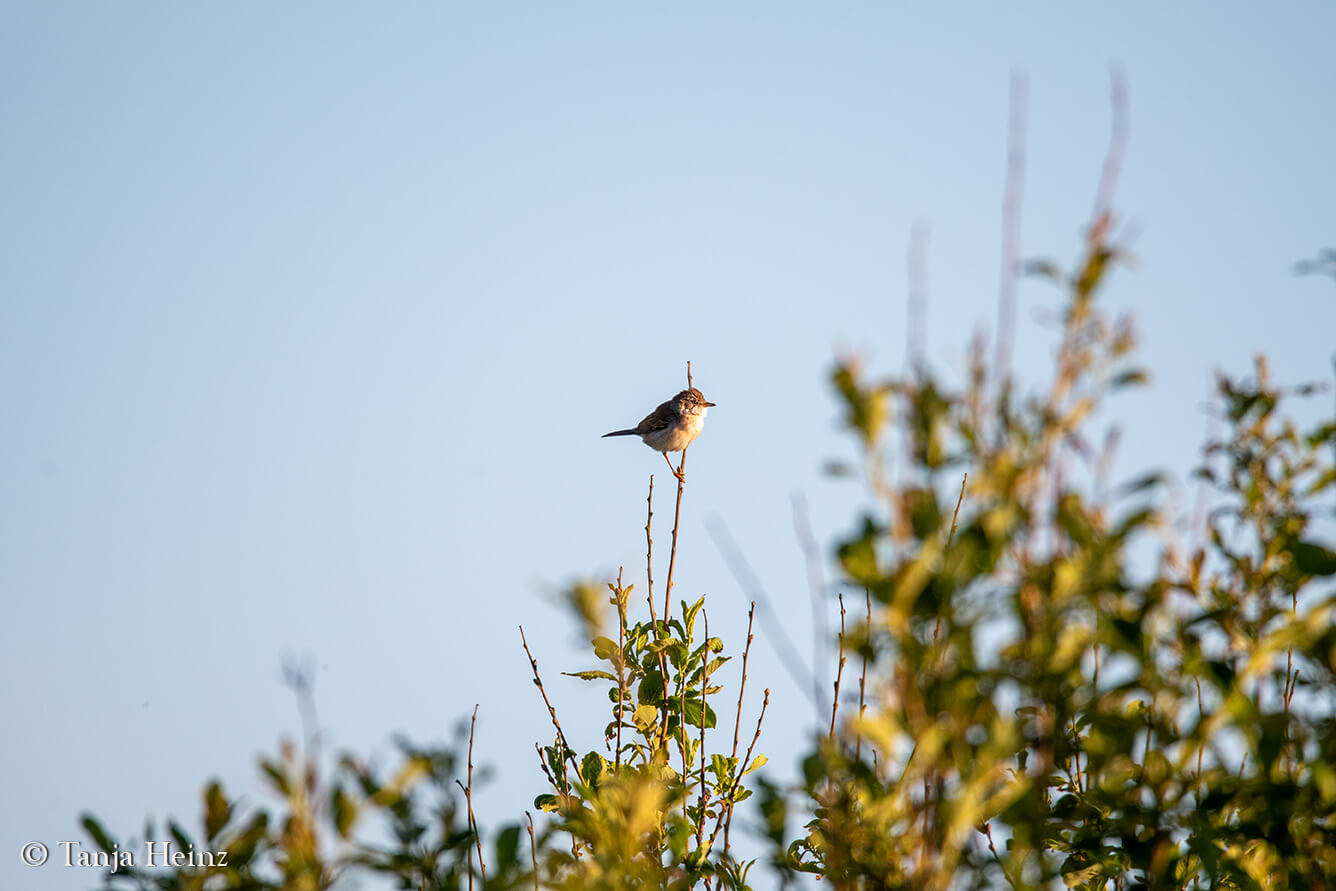
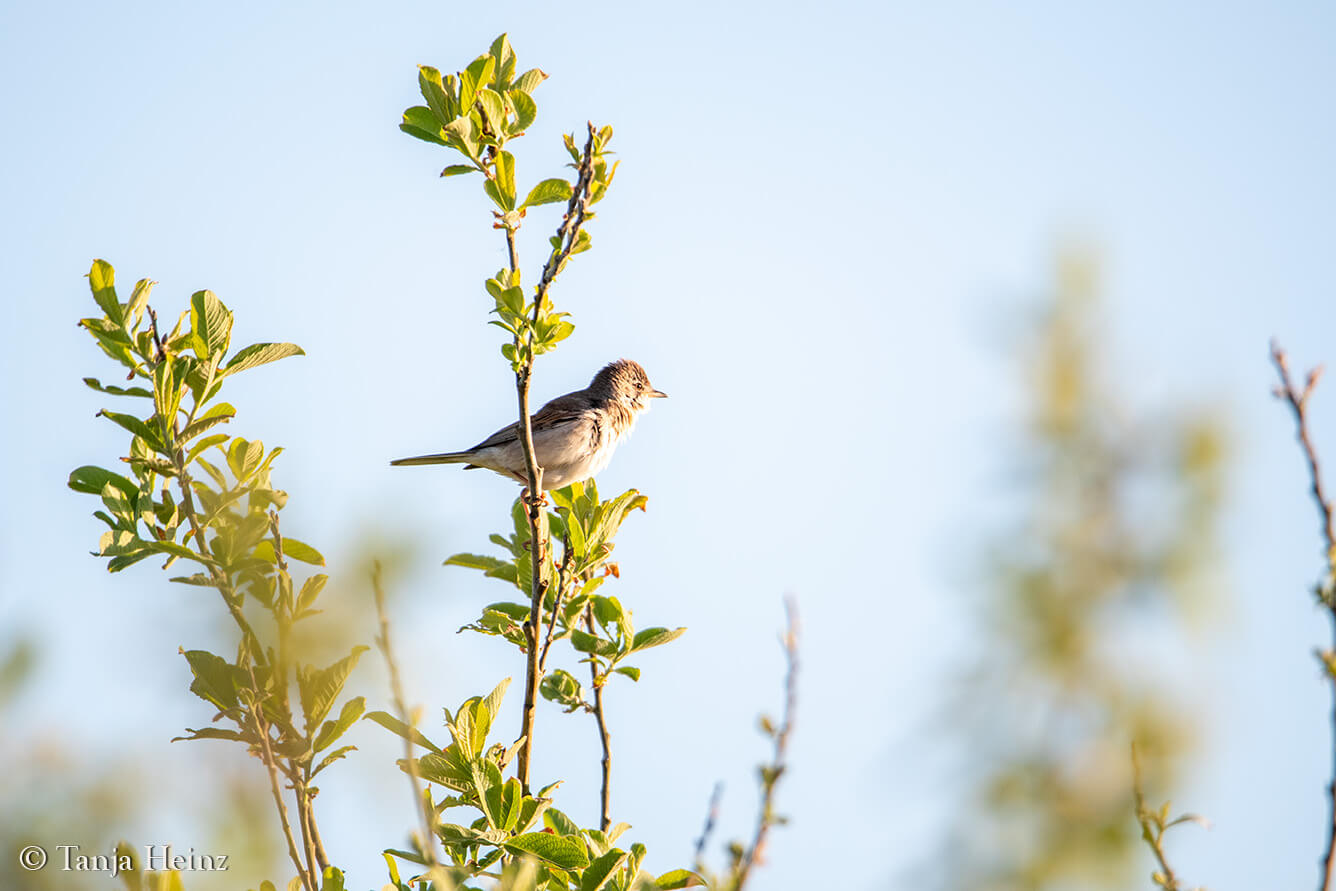
Willow warbler
Another special encounter – I know that I have used "special" already quite often... – was the one with a willow warbler.
The willow warbler belongs to the same family like the common chiffchaff and the wood warbler. I love the beautiful songs of the wood warbler every spring. And the songs of the common chiffchaff belong to the parks and forests of Germany that I immediately miss them when I do not hear them anymore in autumn. However, even though common chiffchaffs are around and singing, I usually do not spot them.
Nevertheless, so far, I have seen a willow warbler a few times in Berlin, but also in South Africa.
The most distinctive feature of the willow warblers on the island Borkum were their beautiful songs.
Luckily, I usually immediately saw these birds after listening to their beautiful songs. I met willow warblers at different places on the island Borkum. Be it close to the New Lighthouse or at a place close to a forested area where I observed many wild rabbits, but also in the east of the island. Willow warblers seem to have found a good habitat on Borkum during the spring and summer months.
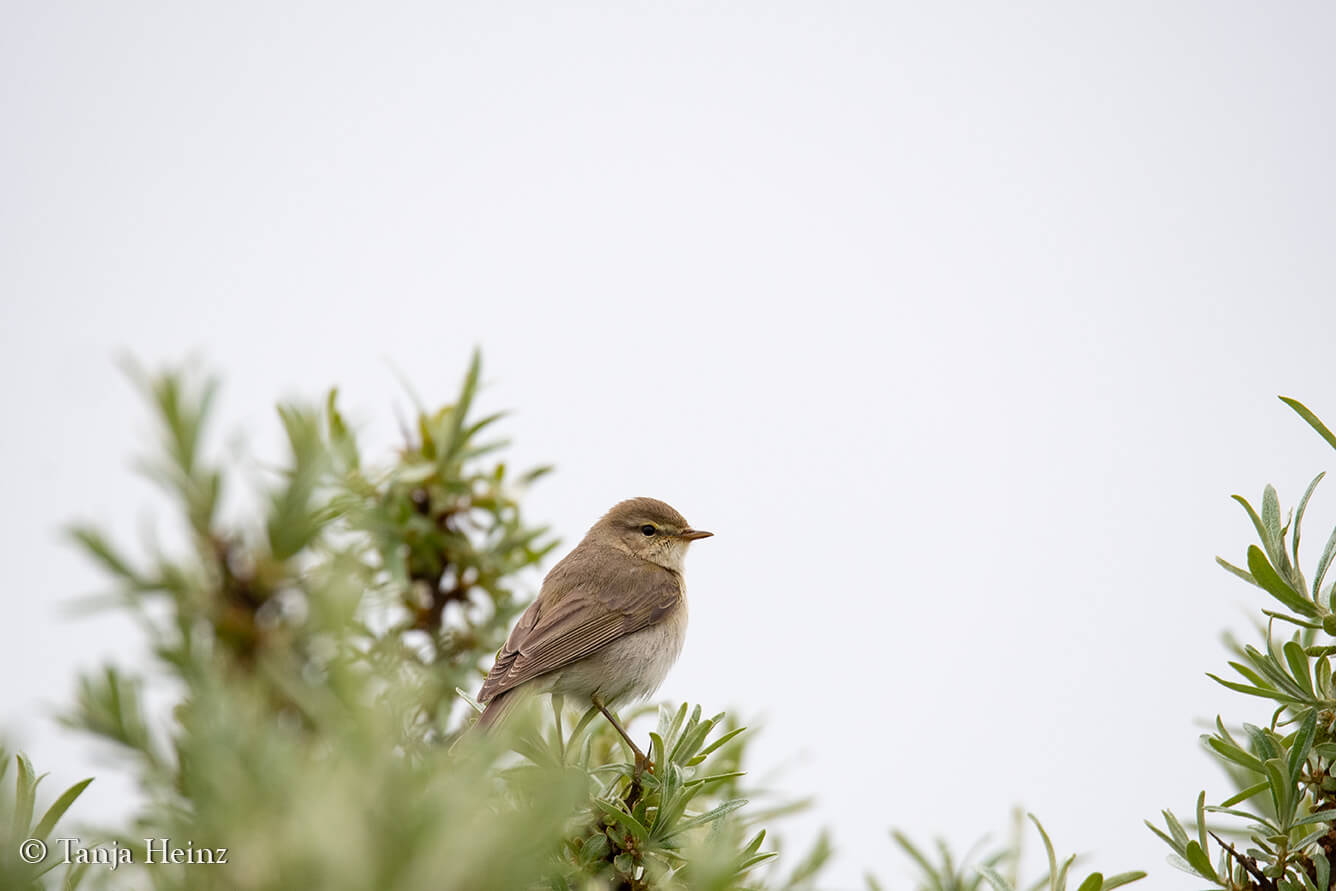

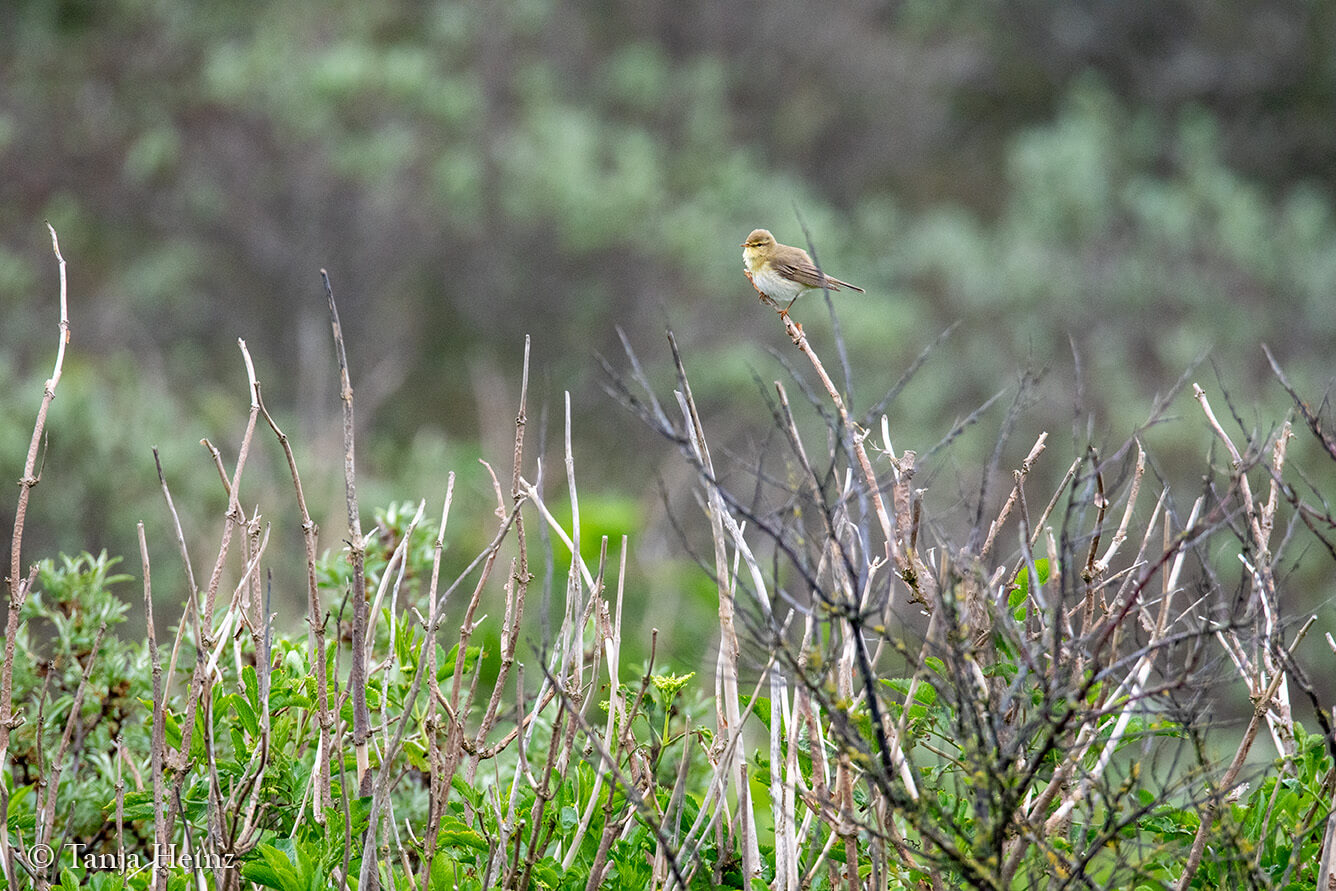
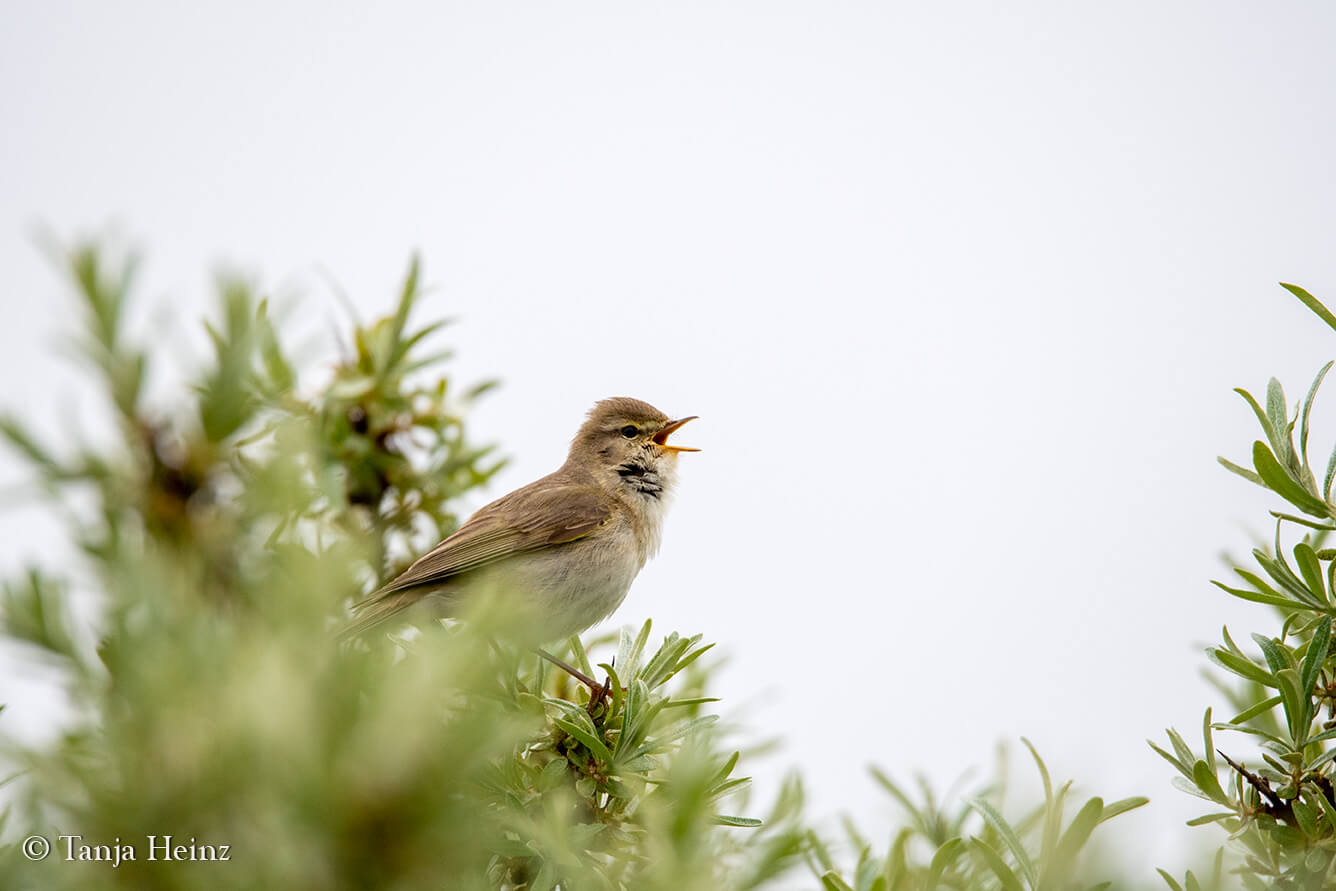
Sedge warbler
I wish I would have been able to observe for a much longer time a sedge warbler on Borkum. I saw this sedge warbler close to the willow warbler. I heard the bird sing and I tried to detect from where out of the shrubs the songs came. I waited quietly.
I almost lost patience and left. Fortunately, I did not. Because in one moment, the sedge warbler left the shrubs and showed up. However, unfortunately, not where it would have been best for me to photograph the bird. And furthermore, that sedge warbler seemed to be quite restless and left shortly after showing up.
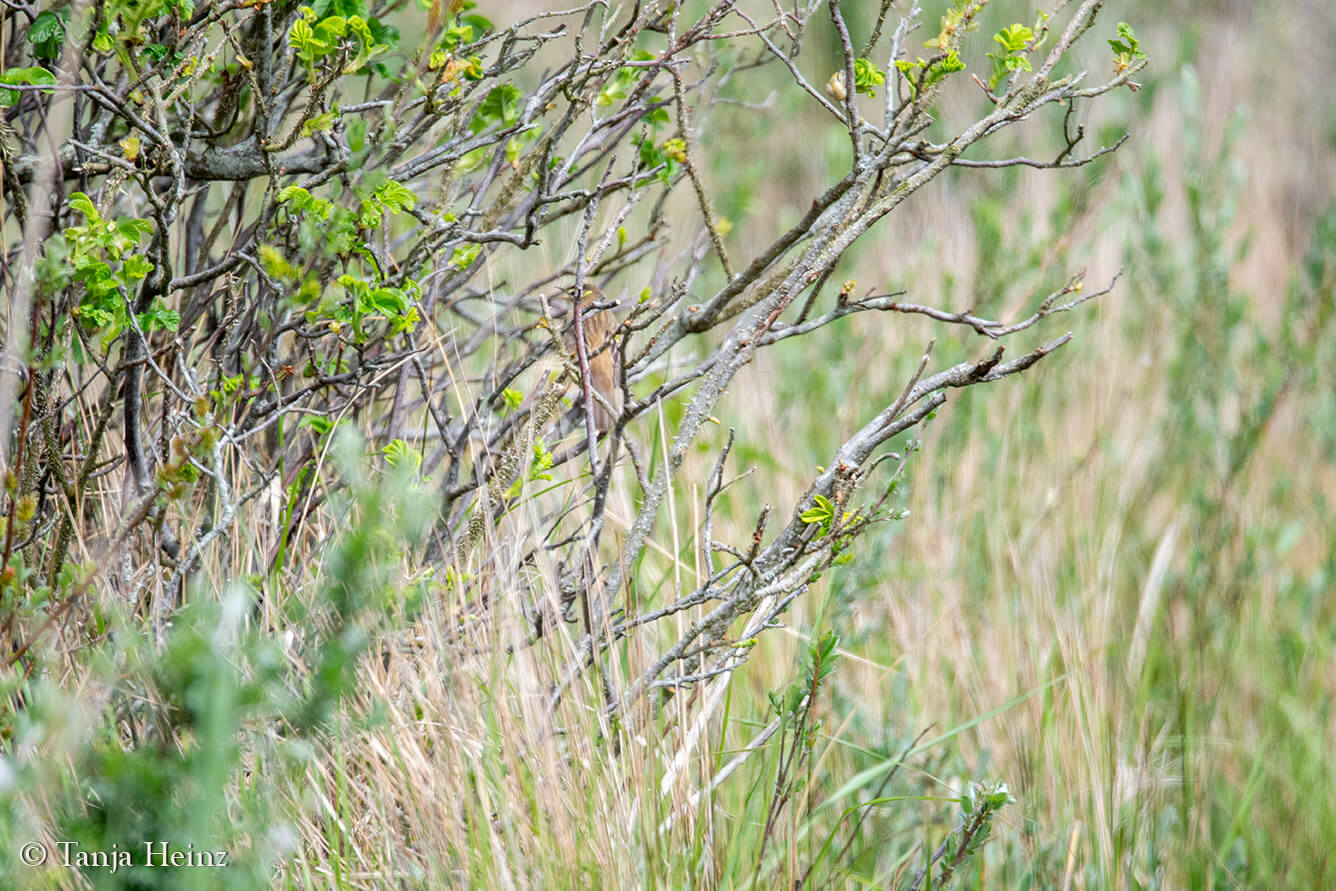
Meadow pipit
Meadow pipits belong to those birds which I do not observe on a regular basis. Recently, I saw some meadow pipits in Austria at the Kaiser-Franz-Josefs-Höhe. I also saw some meadow pipits already in Iceland.
Maybe I do not see meadow pipits regularly, but on the island Borkum I spotted them at different places. I observed most meadow pipits in the east of the island. These birds, as well, seemed to have found a good place on Borkum.
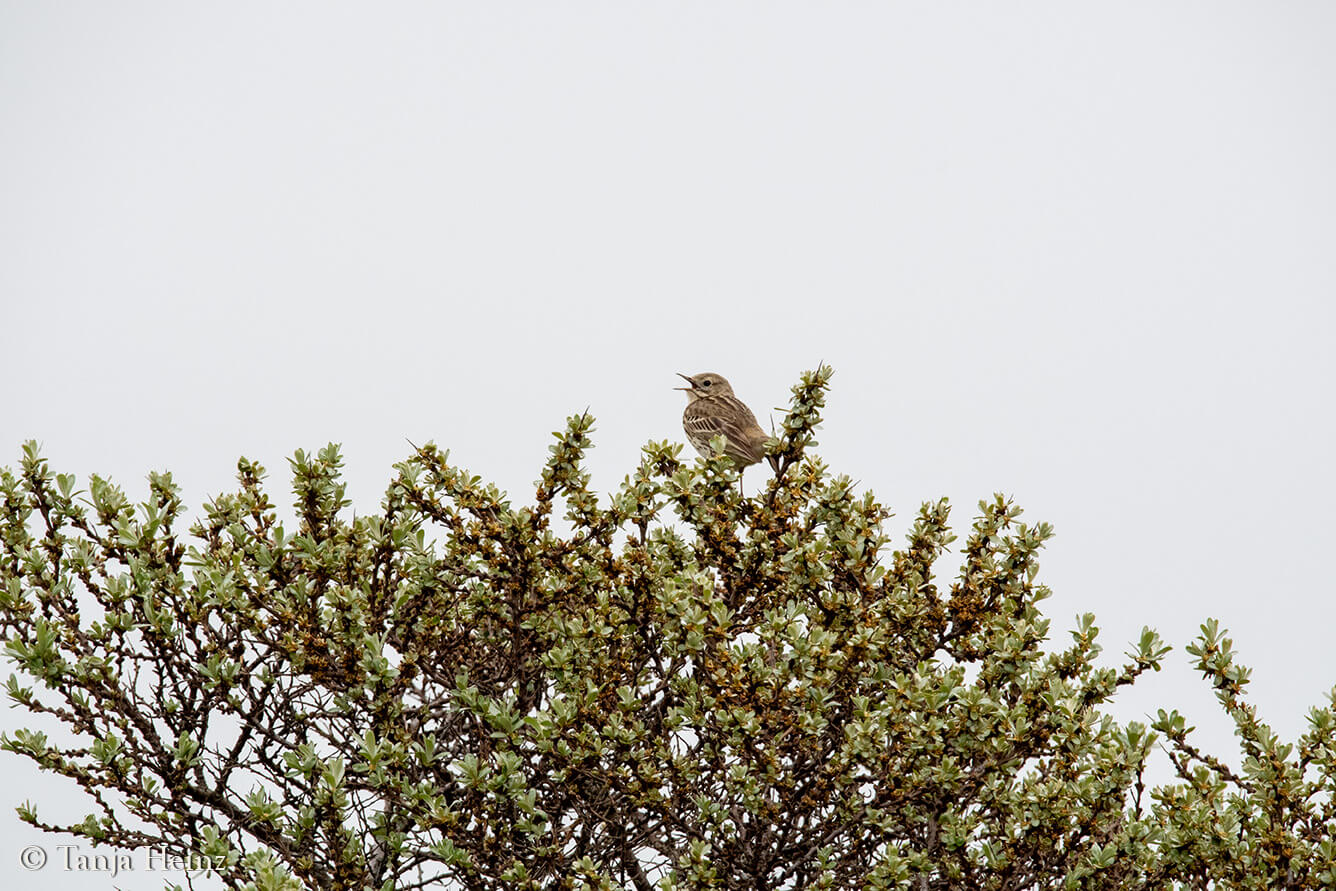
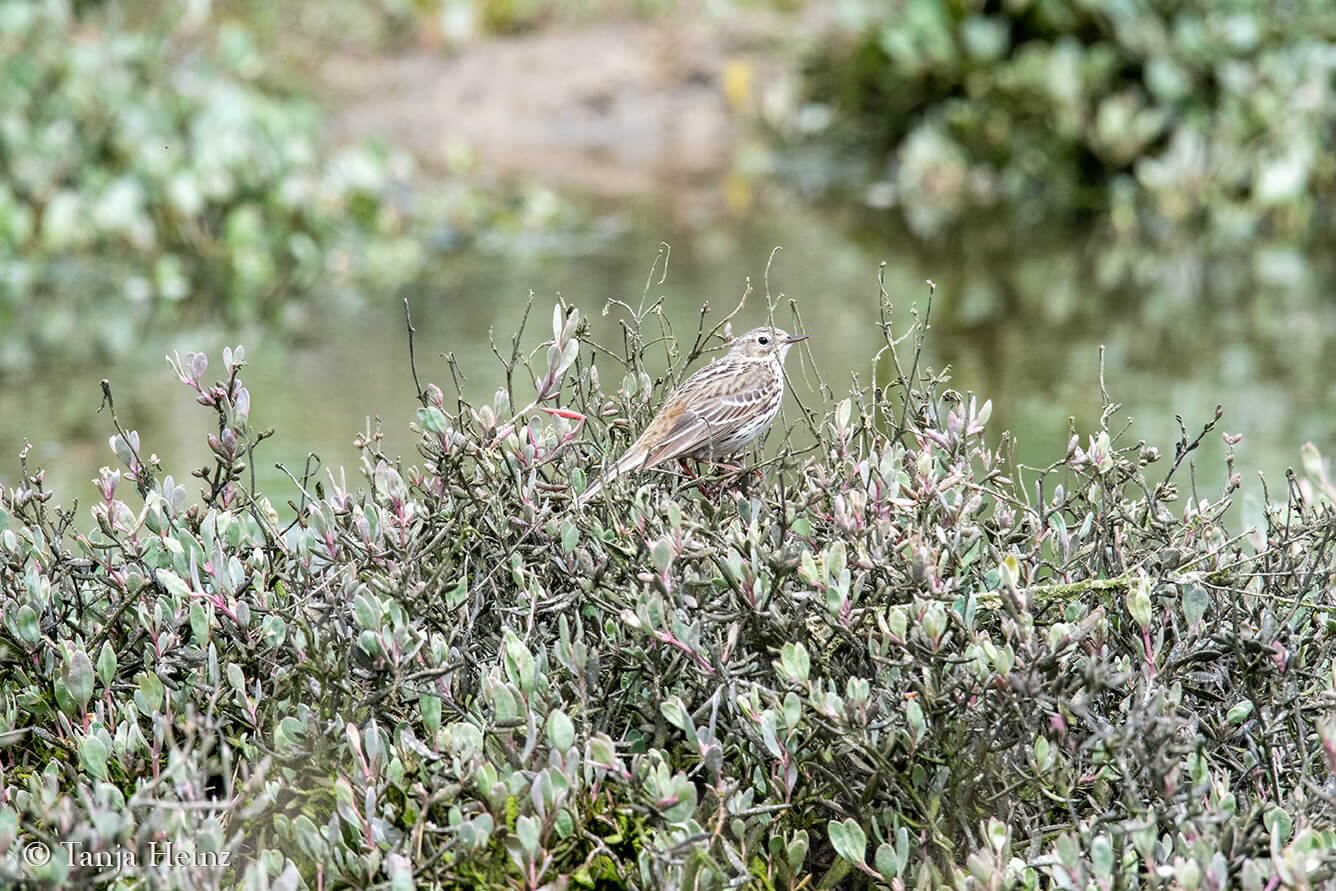
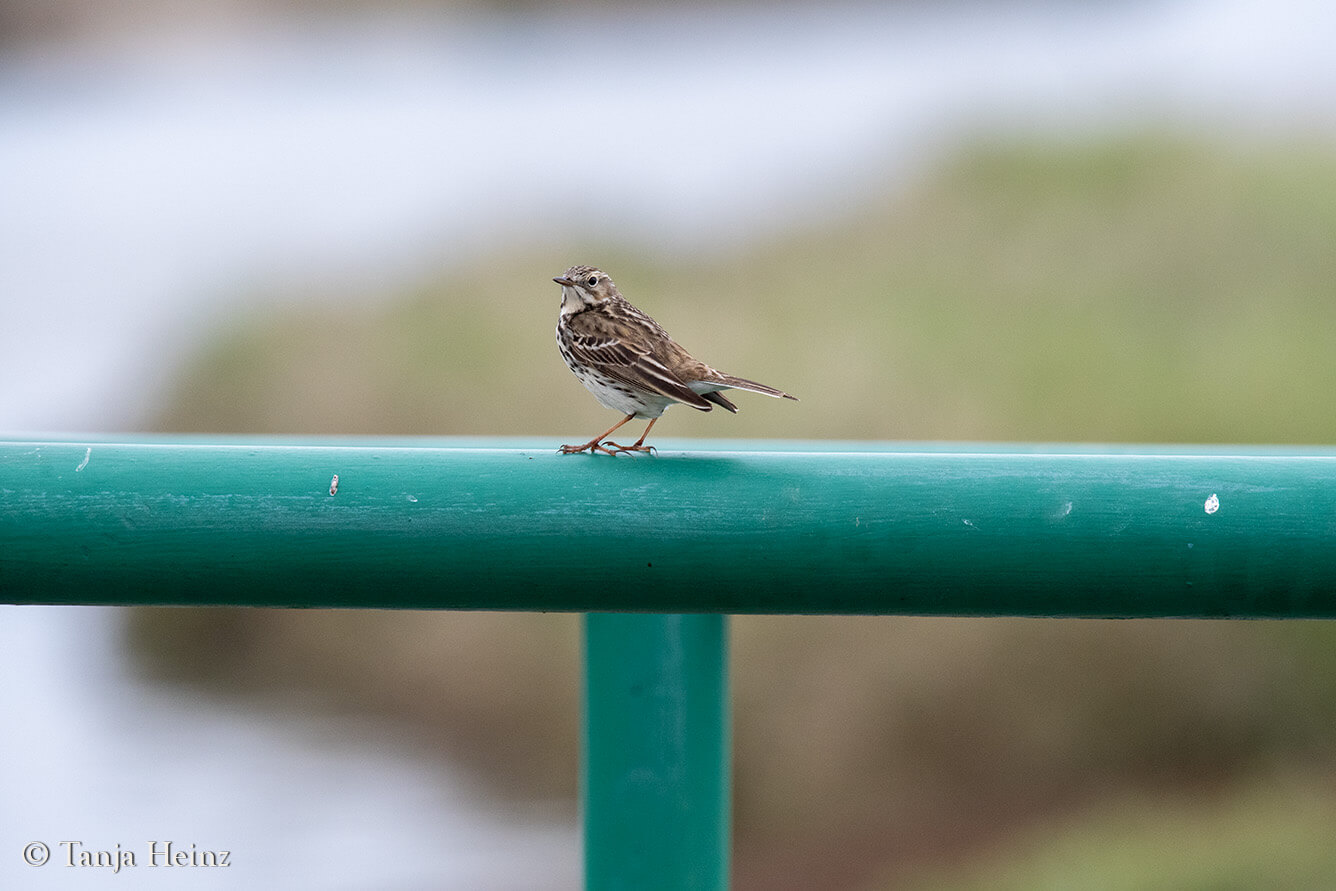
European stonechat
Although I had already observed European stonechats in the Döberitzer Heide, I do not know this bird species very well. Meeting a European stonechat on the island Borkum was, again, a special moment due to the fact that I do not see them often.
I met a European stonechat in the east of the island. Willow warbler, sedge warbler, and many meadow pipits. And then a European stonechat. How lucky I felt. Because I met so many unique bird species in the east of the island Borkum, I can highly recommend this area for bird watchers.
European stonechats can be easily distinguished from other birds by its black head, the white half-collar on the sides of the neck, and the orange-coloured throat and breast. The colours of males are more intense than the colours of females.
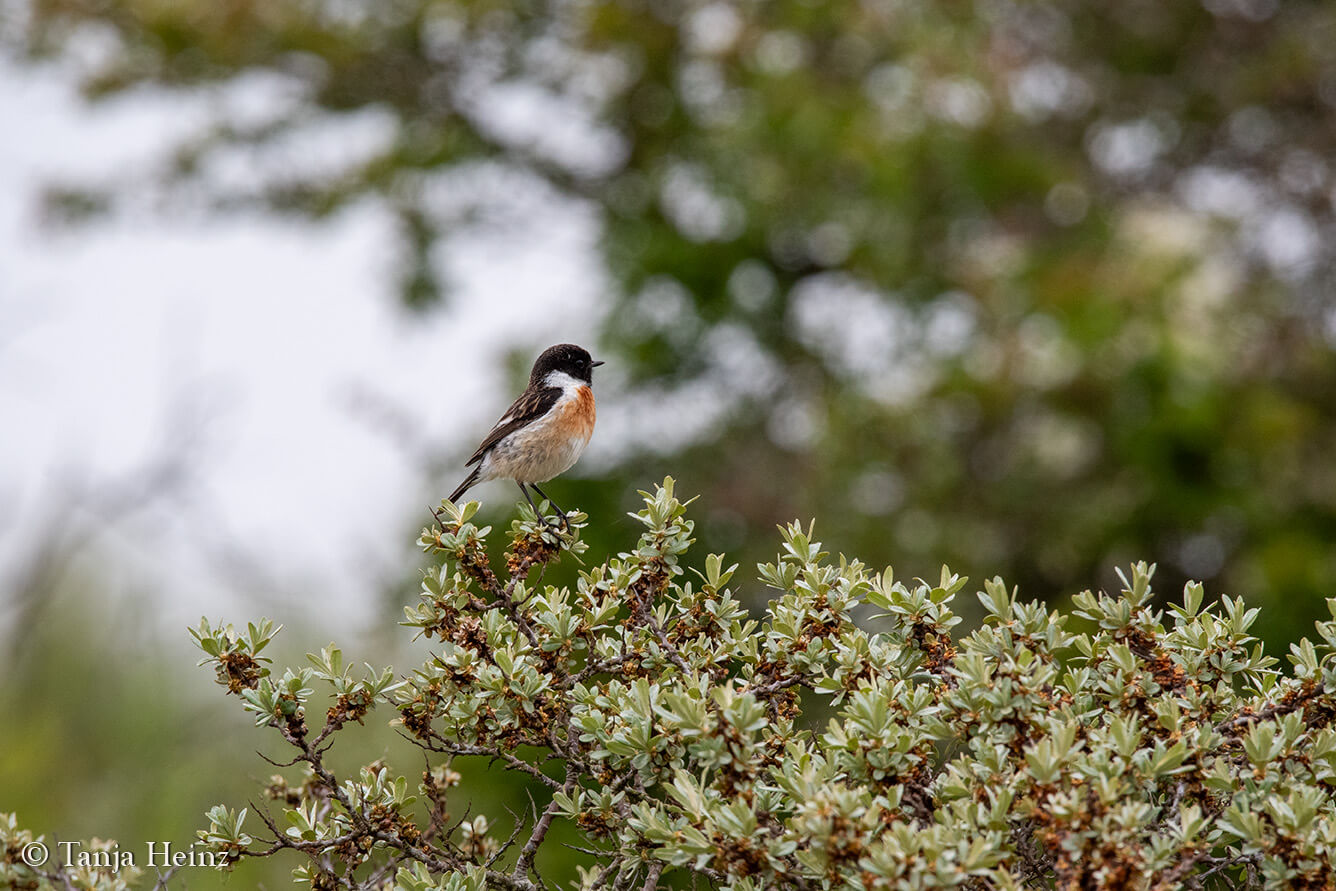
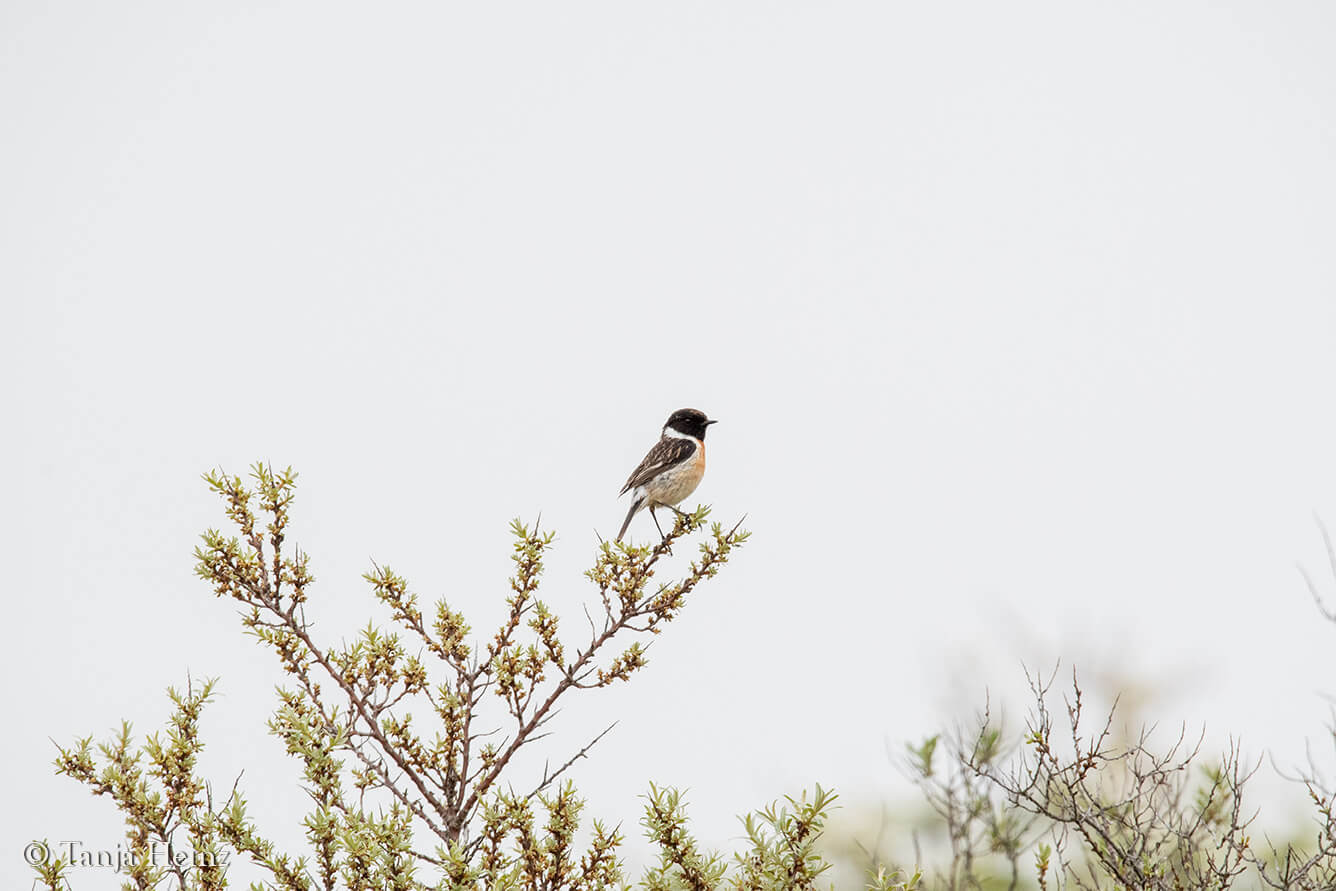
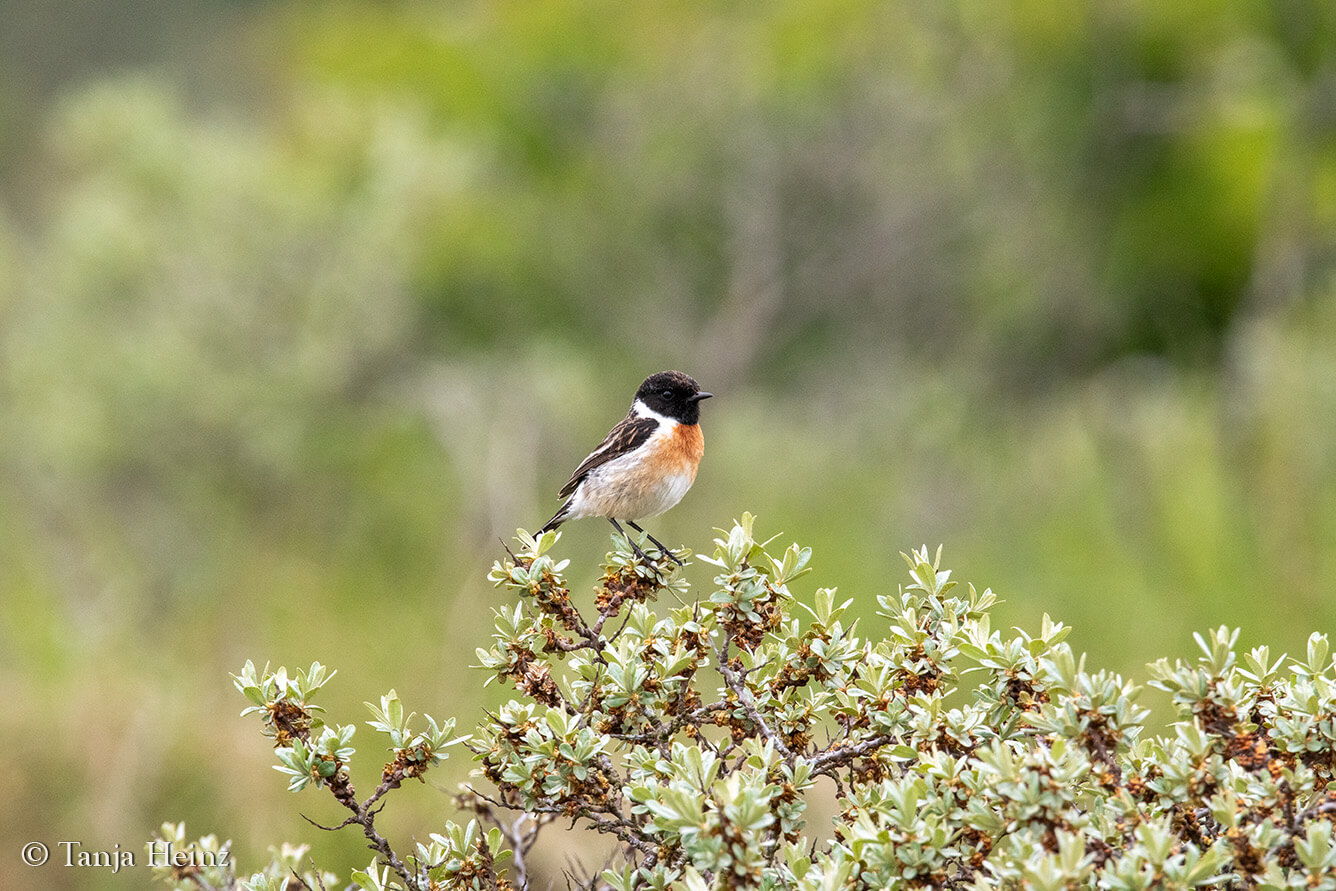
European greenfinch
Basically, I should meet European greenfinches more often. However, I do not. Does the number of European greenfinches maybe decrease in Berlin? If you look at the results of the bird count "Stunde der Gartenvögel", it really looks as if fewer and fewer people see European greenfinches in their gardens or in parks in all of Germany. The same applies to common chaffinches. But, in contrast to European greenfinches, I spot at least sometimes common chaffinches in Berlin and in other parts of Germany. But European greenfinches maybe once or twice a year.
Therefore, I was very happy to have seen a European greenfinch on the island Borkum. I was that happy about this encounter that I decided to go back to that spot on the following day to hopefully see a European greenfinch again. Unfortunately, I went there in vain (it was not completely in vain, because I saw other birds, but with respect to European greenfinches it was in vain). Thus, that encounter with a European greenfinch on the island Borkum was again a very unique moment for me.
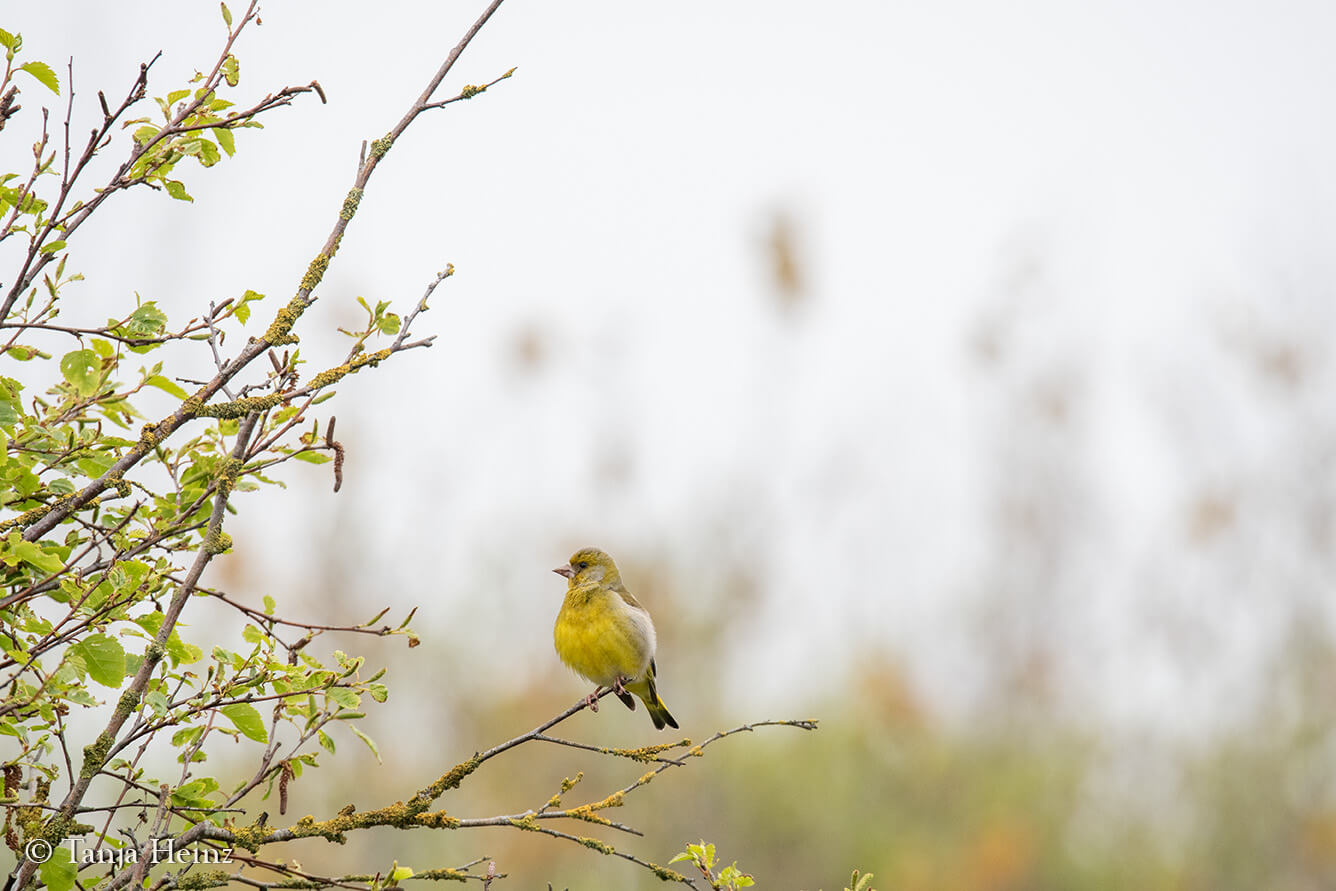
Dunnock
When I hear the name dunnock (or better: when I see a dunnock), I always have to think about the book "The Heart of the Valley" by Nigel Hinton. In that book, the author narrates the life of a dunnock during one year. The story was so beautiful, and at the same time so sad, that I will keep this book forever in my memory.
In contrast to other birds, dunnocks do not look very conspicuously. In Berlin, I have never seen one of them. Apparently, dunnocks are more common in other areas in Germany. But where I live, dunnocks do not seem to be very common. Therefore, seeing a dunnock on the island Borkum was very special for me.
Maybe that dunnock, which I observed, was searching for food? I spotted that dunnock at first on the ground. The bird seemed busy. In one moment, I saw as well a European greenfinch. Both special birds. It was very difficult to decide which bird to observe in that moment.
By the way, I observed a single dunnock twice on the island, but at the same spot.
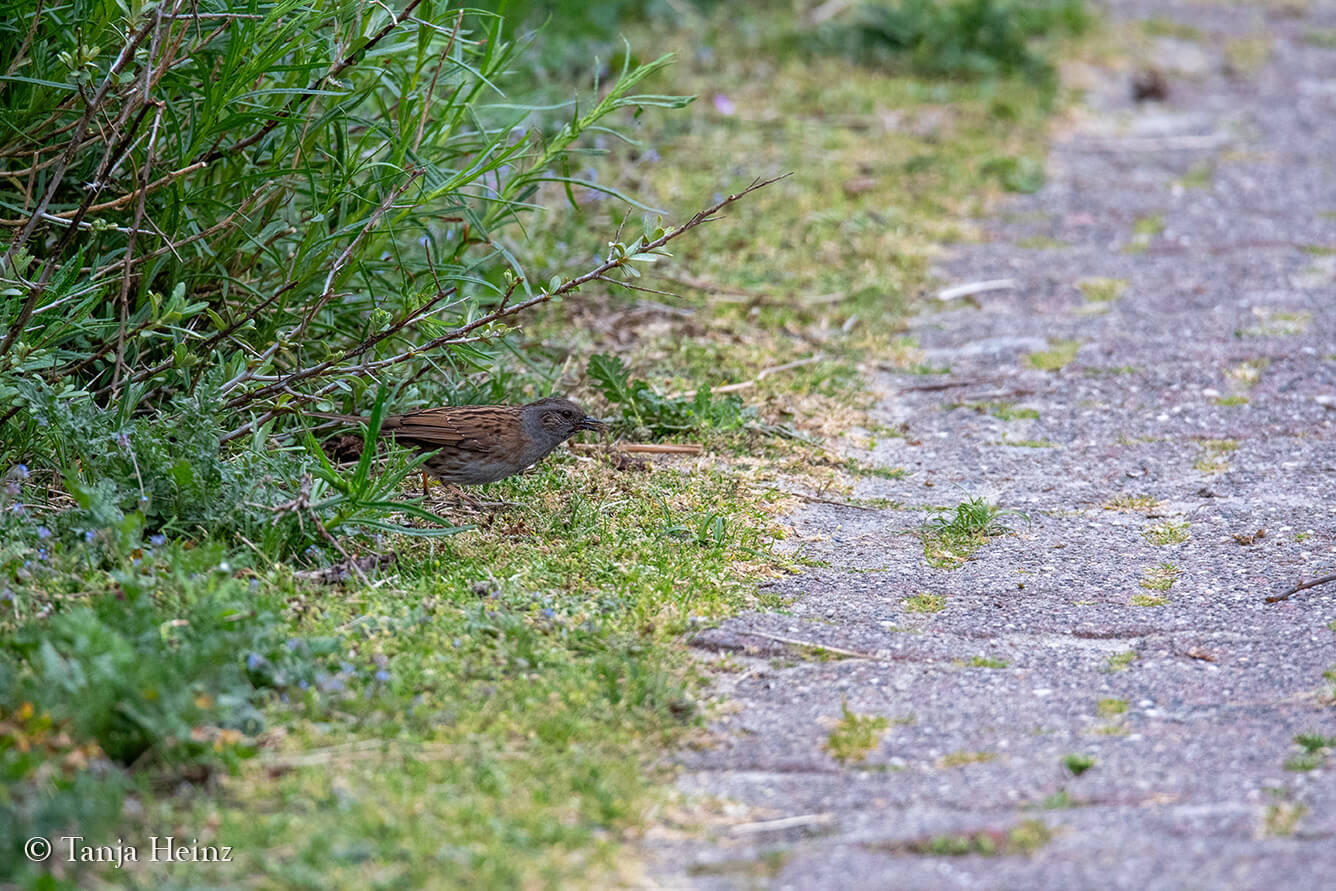
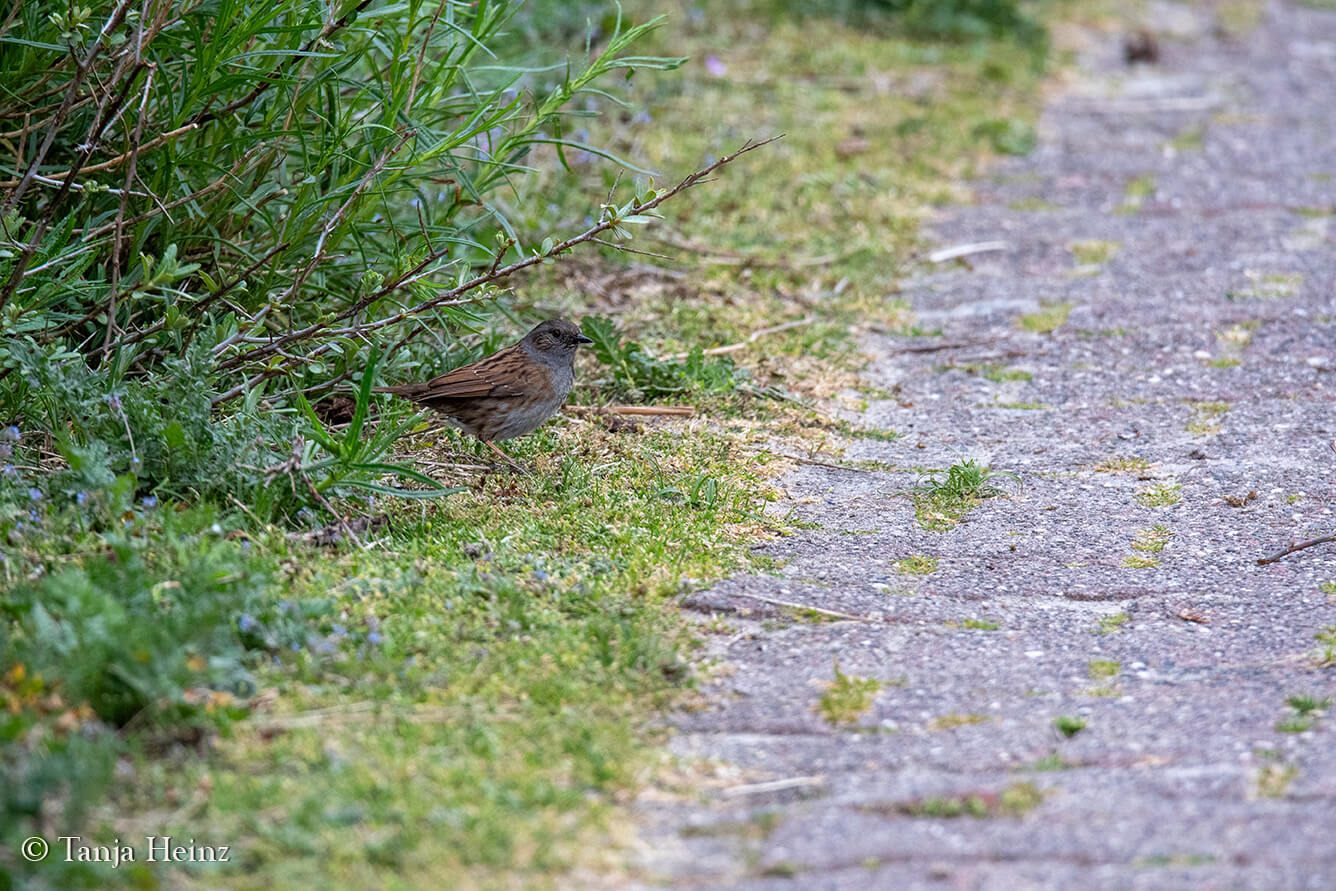
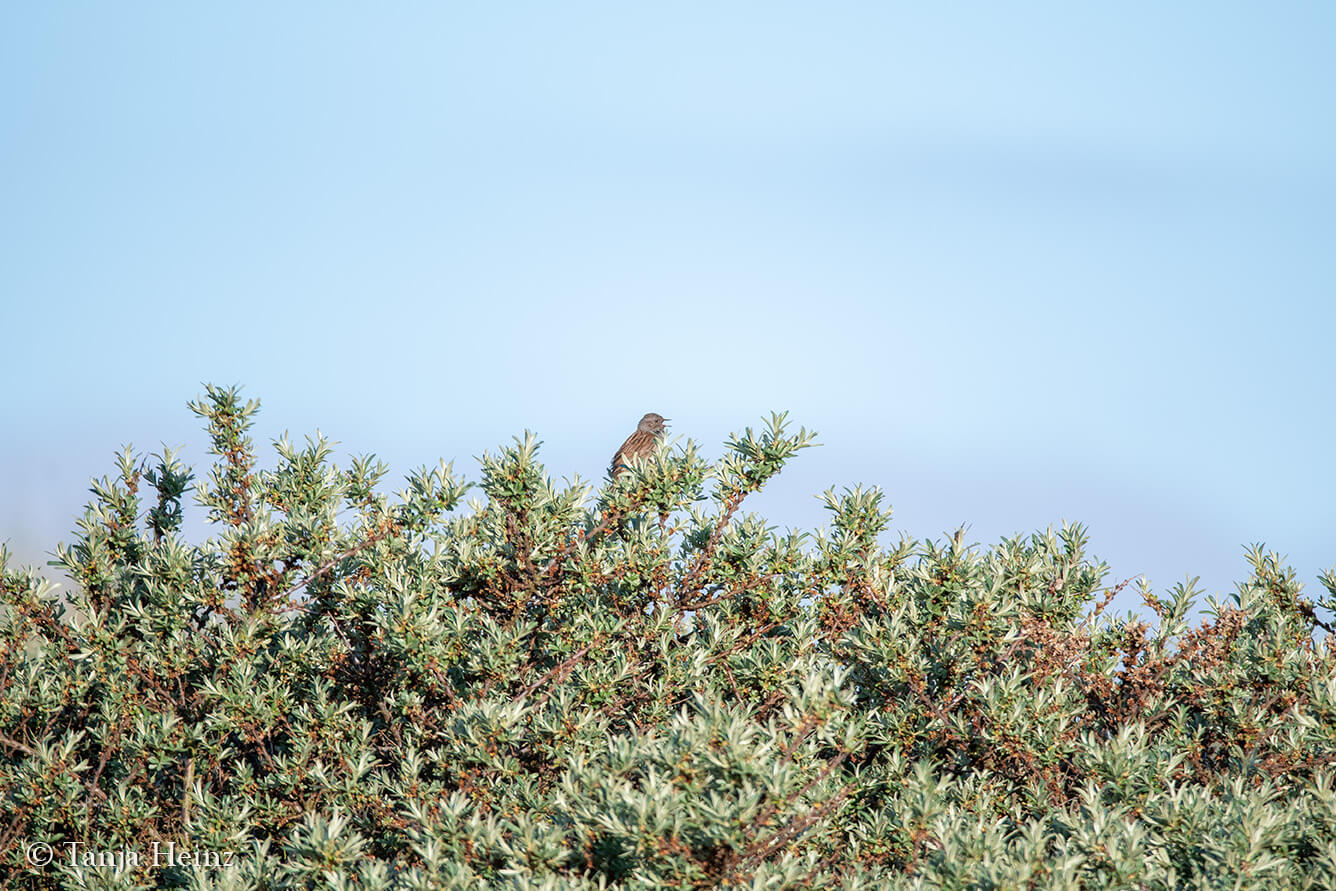
Common linnet
Although the common linnet does not have "finch" in its name, this bird, as well, belongs to the family of the finches (Fringilidae). Finches like the common linnet are characterized by their stout conical bills.
I know that I repeat myself again and again, but this encounter with a common linnet was another unique and special moment, because I usually do not meet these birds. I only saw them so far on Heligoland. As I have seen so many different or new bird species on Borkum, I want to emphasize another time that the island is a great place for bird watching.

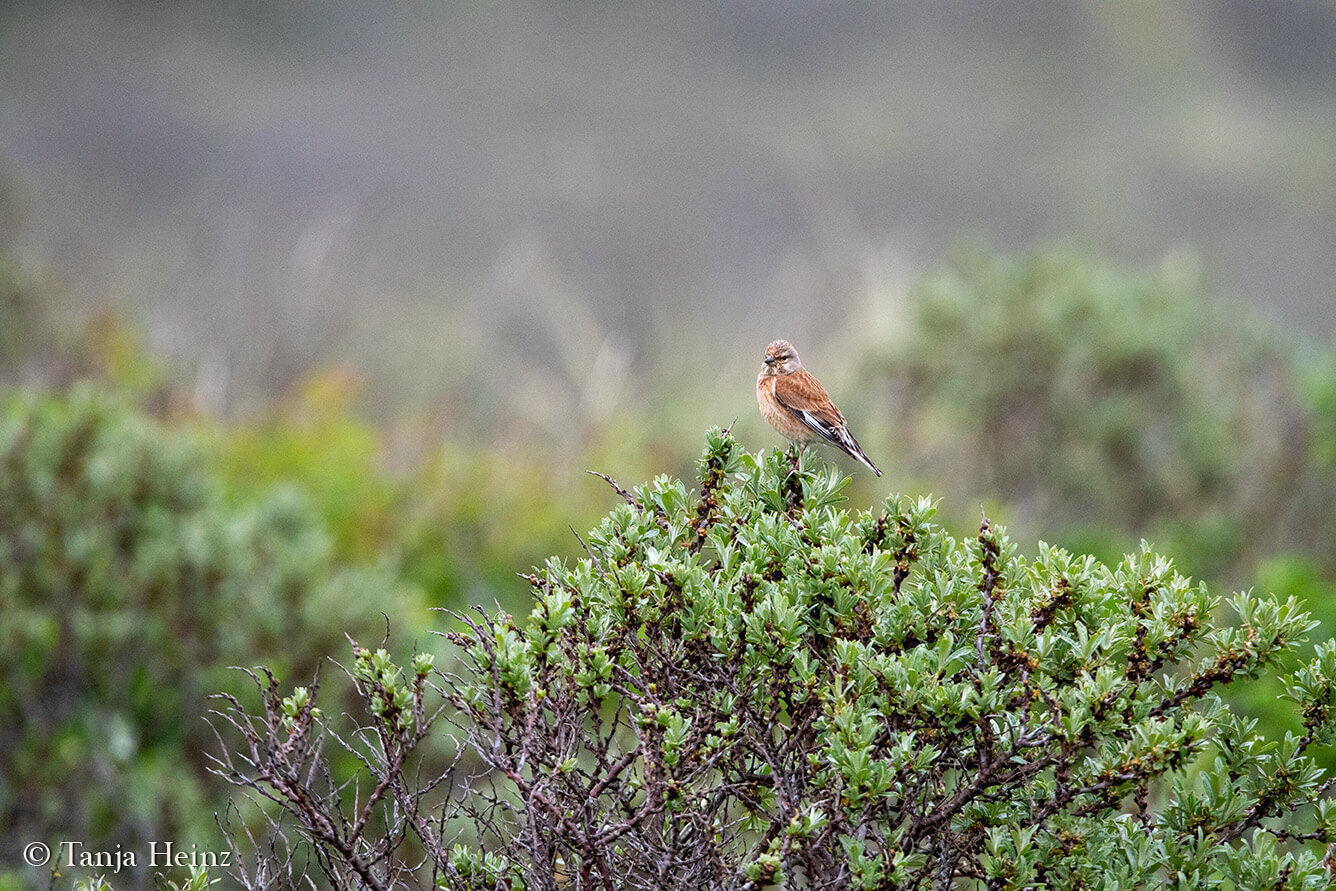
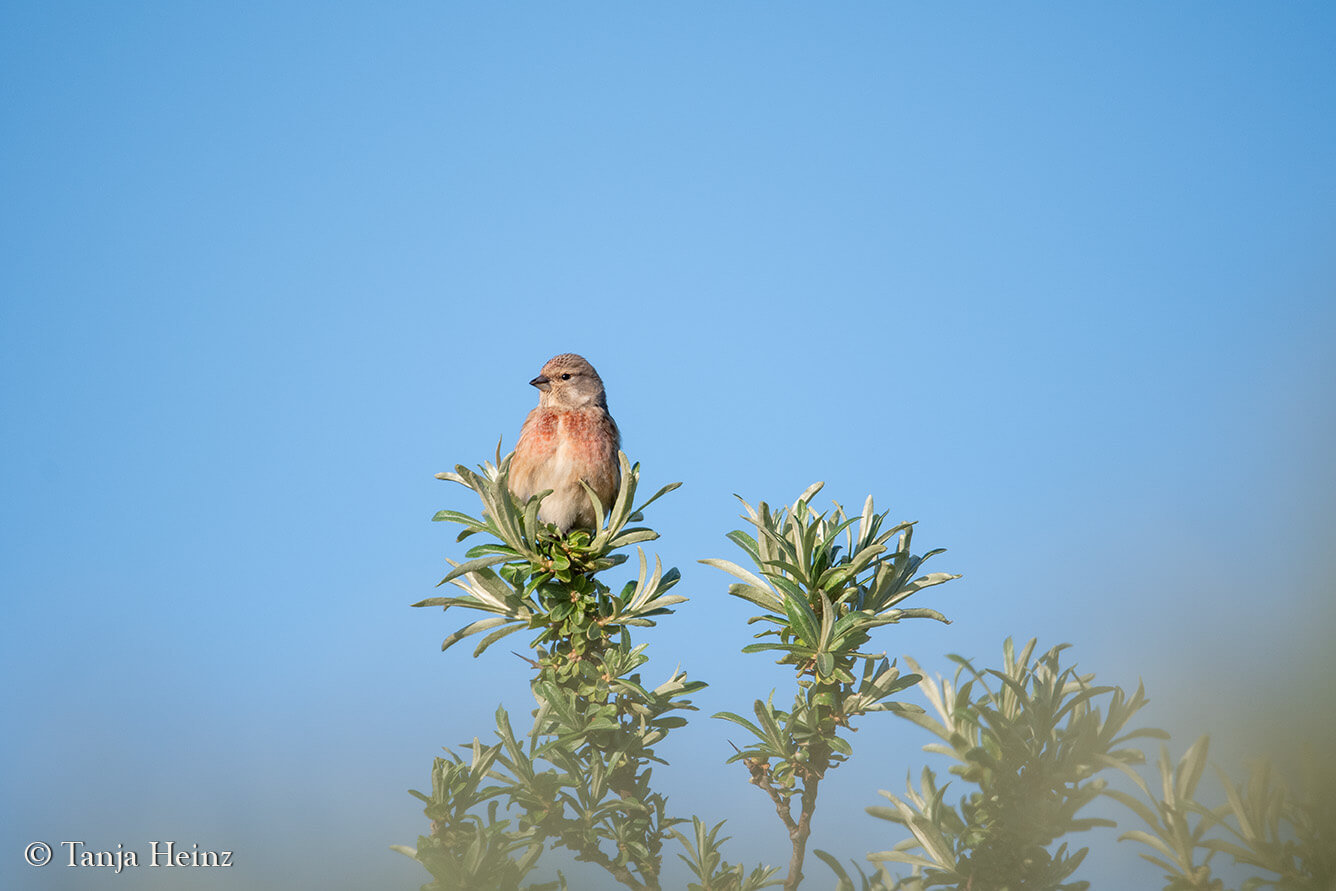
Common pheasant
If you want to see wild common pheasants, then the island Borkum is a great place to do that.
I met the first common pheasant already on my first day. But also, on the two following days.
Common pheasants are characterized by a distinctive sexual dimorphism. That means, males and females among common pheasants differ considerably in their appearances. While males do have a shiny green-blue head with a small crest and a distinctive red wattle, females are characterized by a rather dull and mottled brown plumage.
On my bird watching trips on the island Borkum, I usually first heard a common pheasant before I saw them.
It appeared to me that common pheasants live almost everywhere on the island. I saw them almost everywhere (except in the east close to the geese). I could observe common pheasants especially well from the bicycle path close to the town. They were shy and elusive, but in general, I think these common pheasants on the island Borkum have already adapted quite well to the presence of so many visitors. On one evening (when I was cycling without my camera), I spotted a male common pheasant close to the cycling path searching for food. Wow. It was a brave common pheasant, because many cyclists and strollers passed the path.
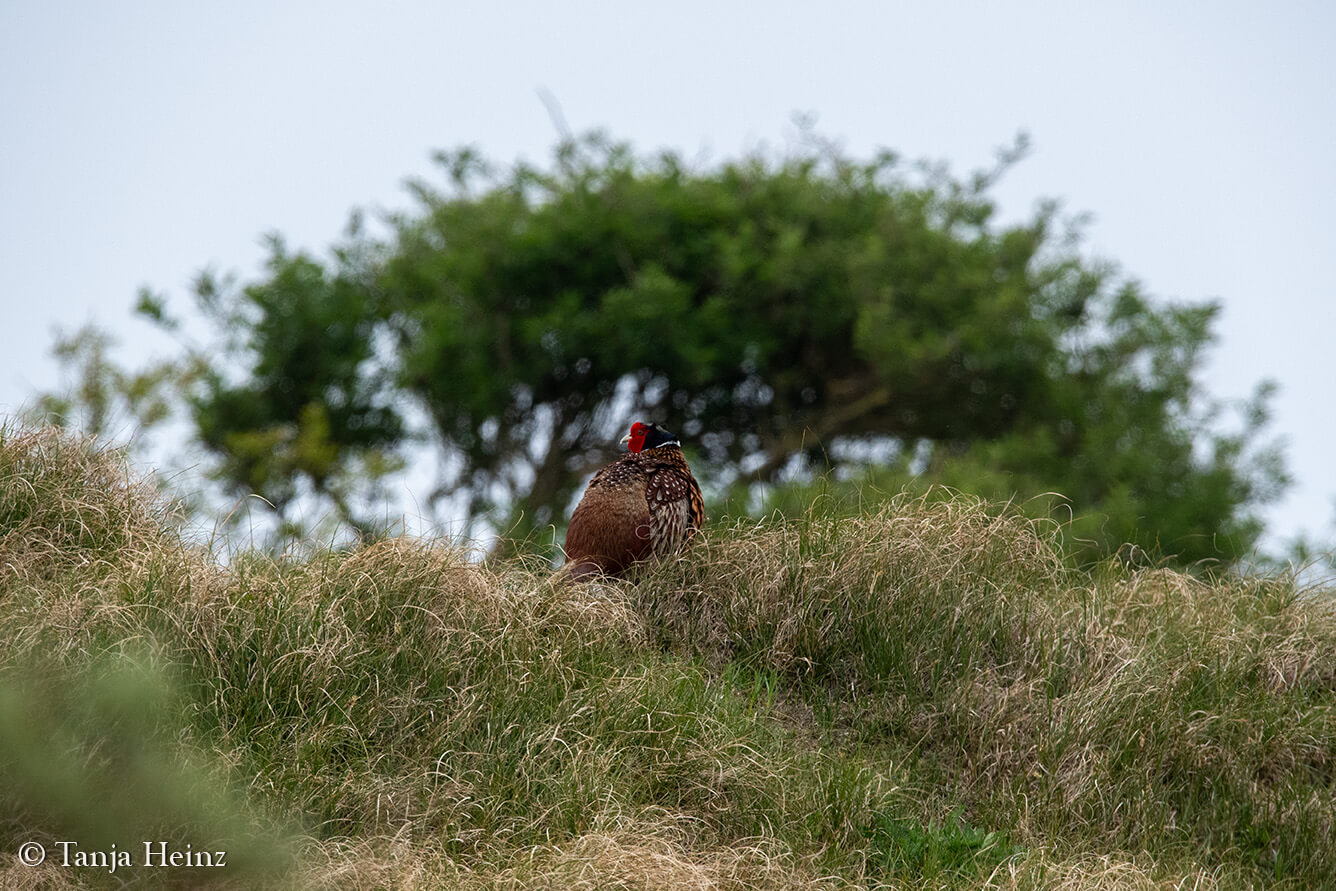
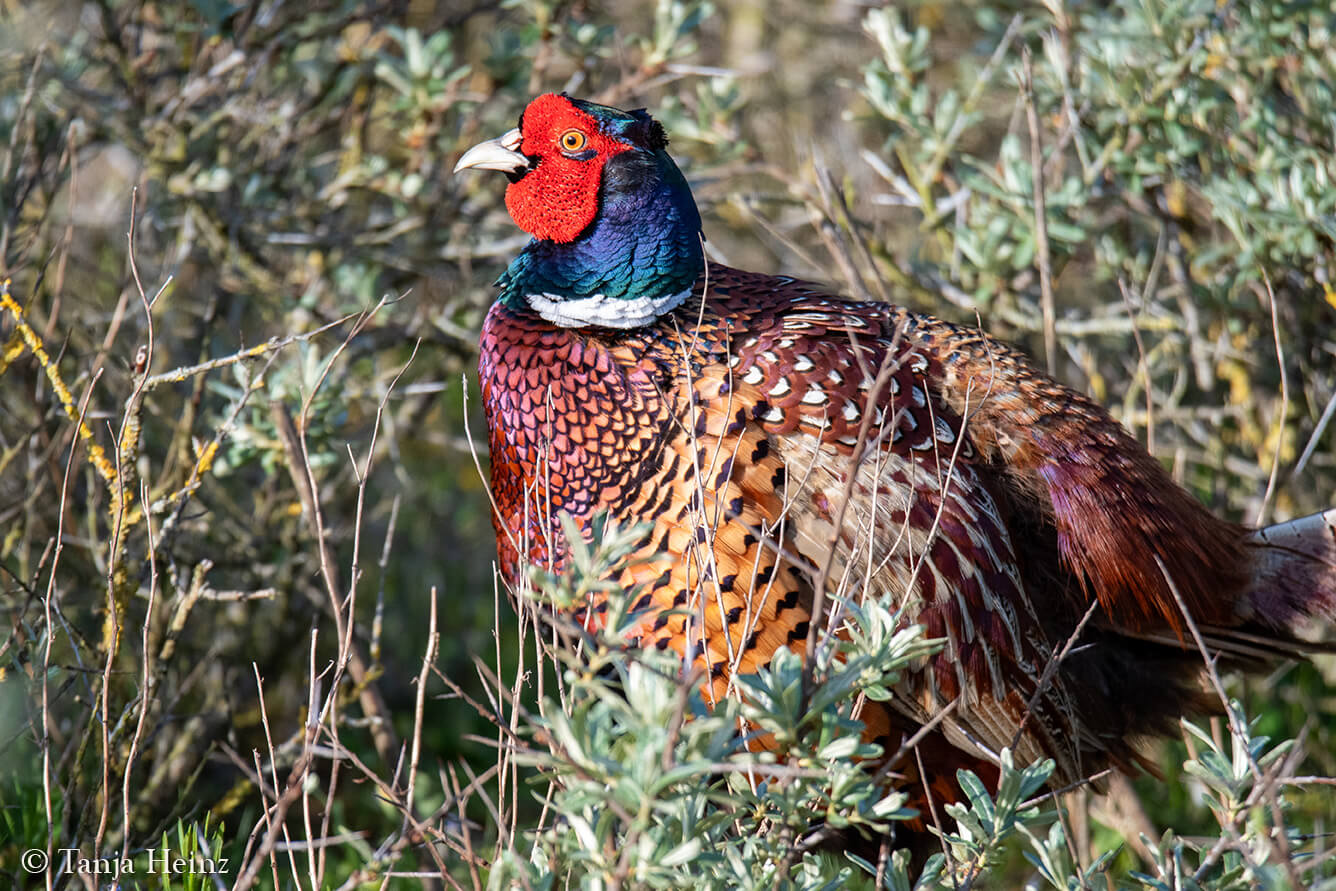
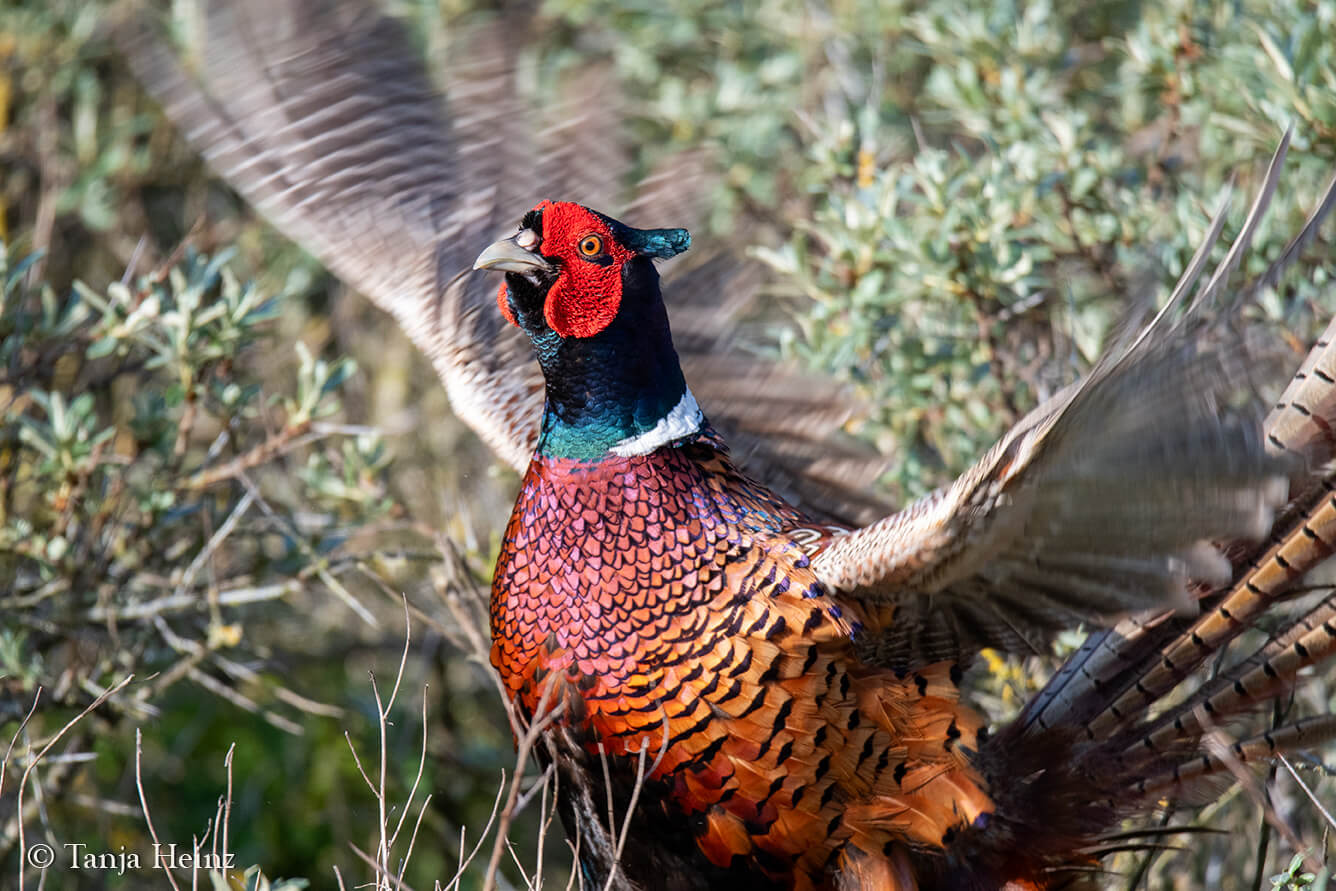

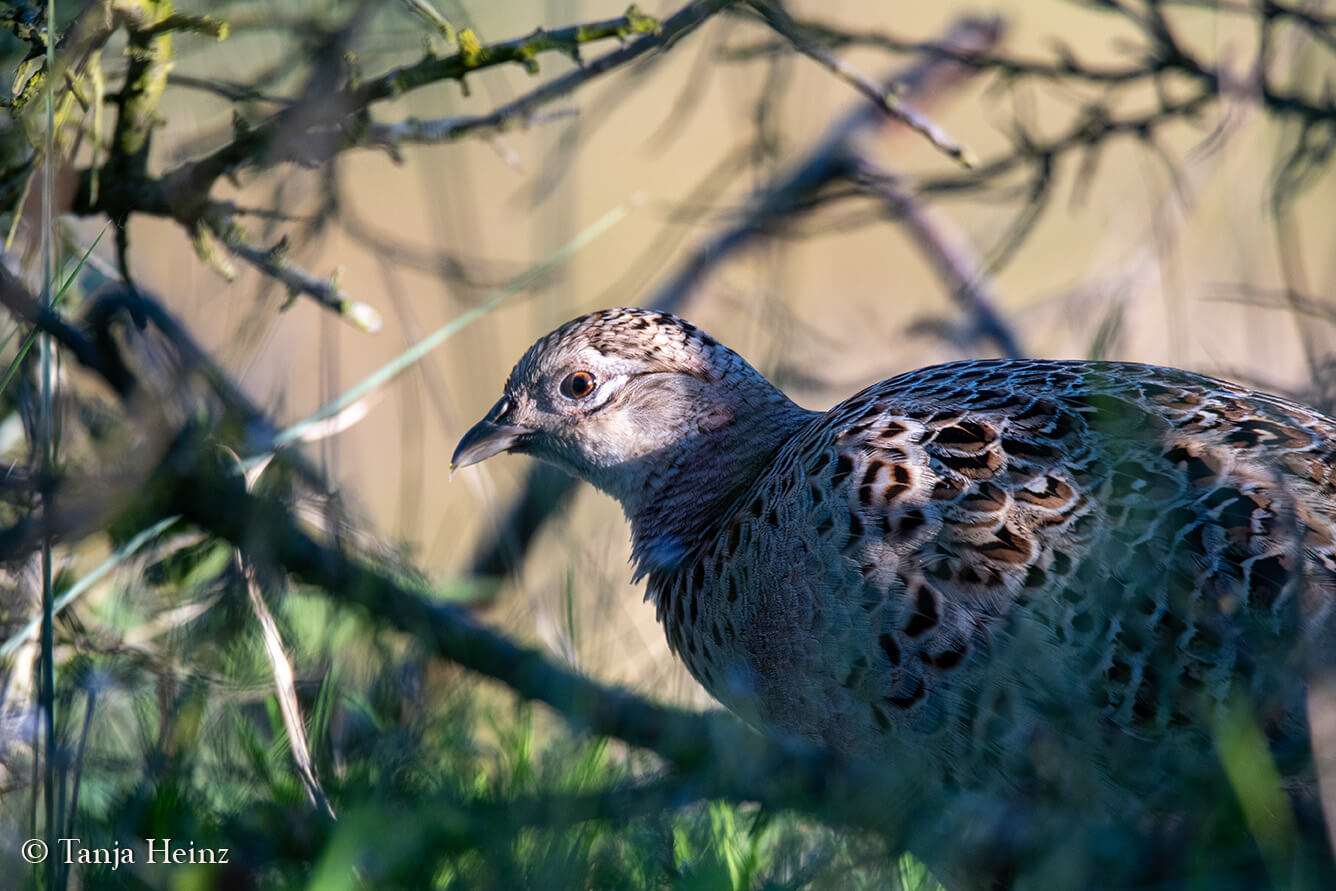
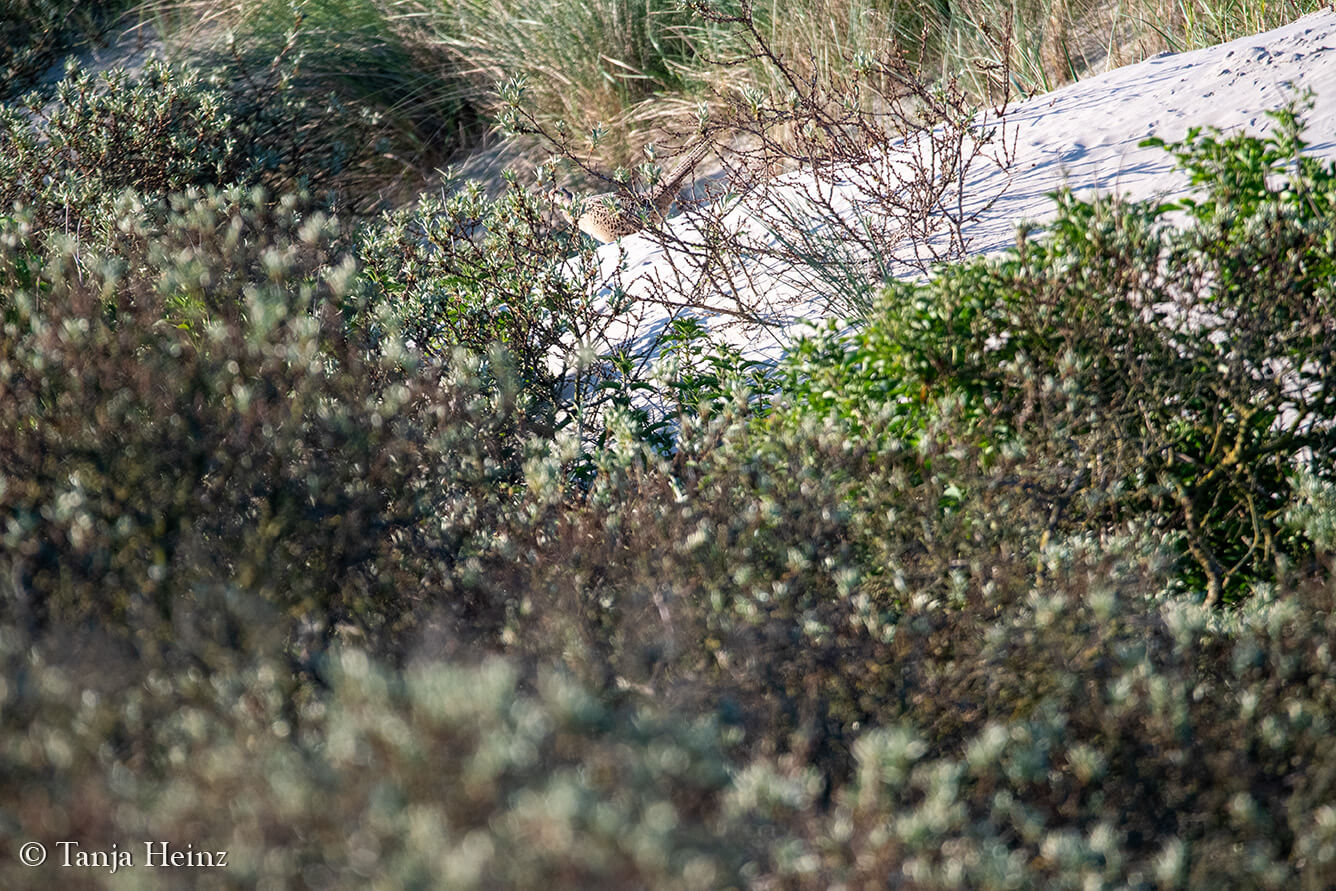
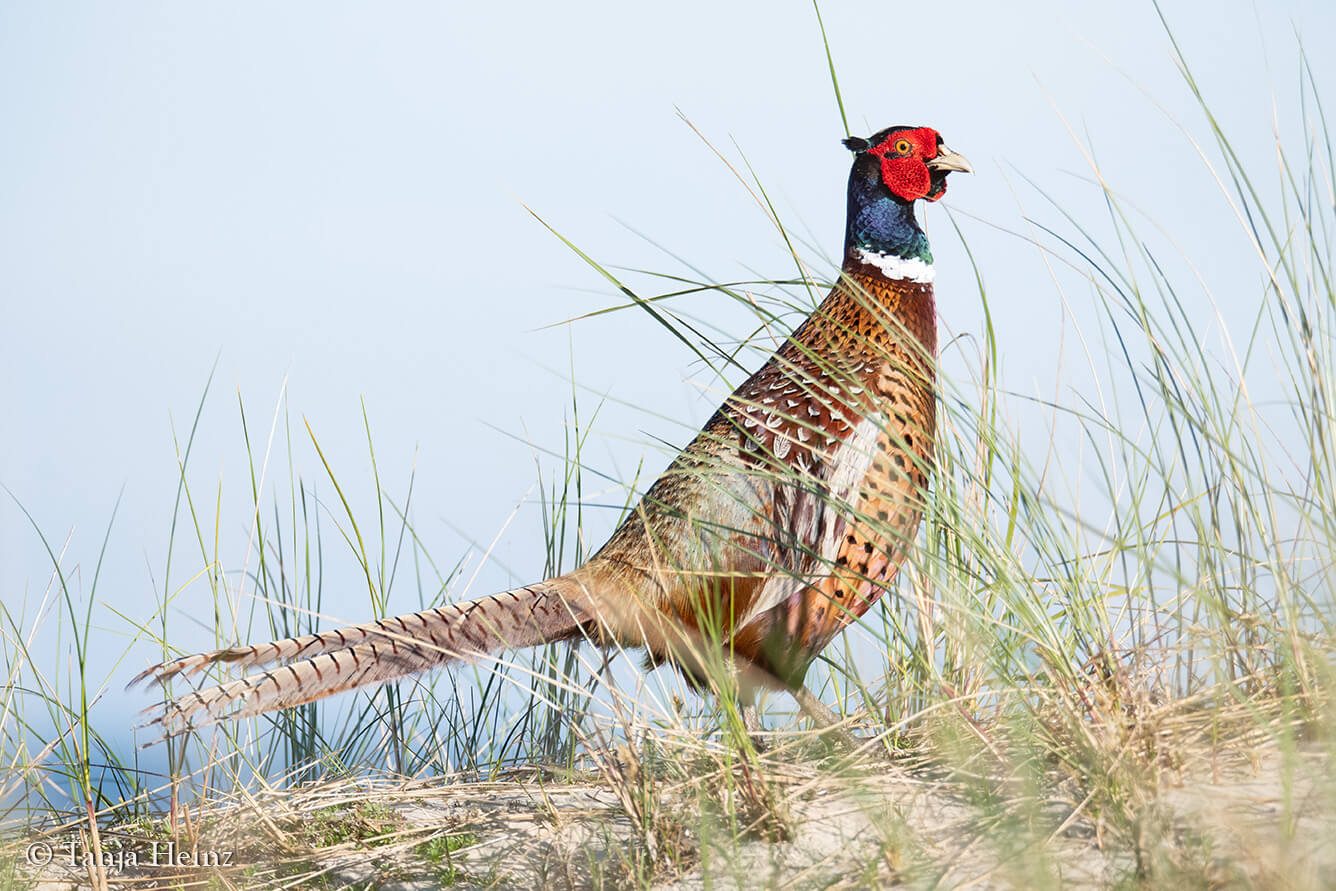
Western jackdaw
The last special bird in the blog entry is the western jackdaw. I met western jackdaws at different places on the island Borkum. With their light blue eyes, I am sure that these birds are able to mesmerize all visitors. But I am not sure if the western jackdaws on the island like this if they would know that?
Because the western jackdaws on Borkum appeared to me quite elusive and shy, they always left as soon as they saw me. Thus, I always tried to be as careful as possible, as I did not want them to be scared away by my presence.
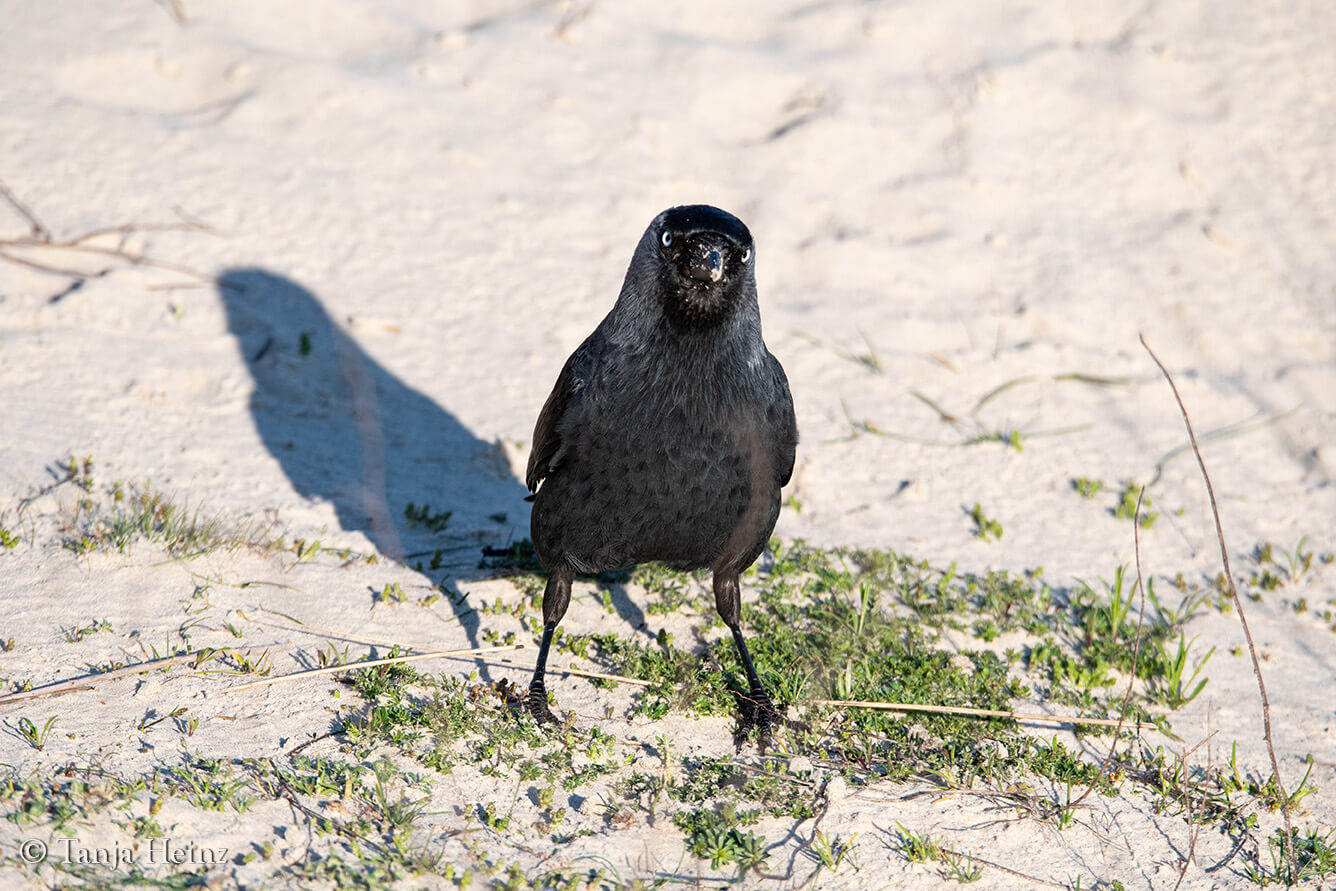
To sum up, I can say that the island Borkum is a very, very special place for a variety of bird species, and bird watchers, respectively. As I was so thrilled about all the birds I saw, I definitely want to visit another East Frisian Island in the near future. Which birds I might see there?
More information about the island Borkum
Wadden Sea - UNESCO World Heritage
Zugvogeltage ("Migratory Bird Week") on the island Borkum (in German)
National Park Wadden Sea in Lower Saxony (in German)
Have you ever been bird watching on the island Borkum or on any other East Frisian Island? If yes, which birds have you seen? Please let me know in the comments.

